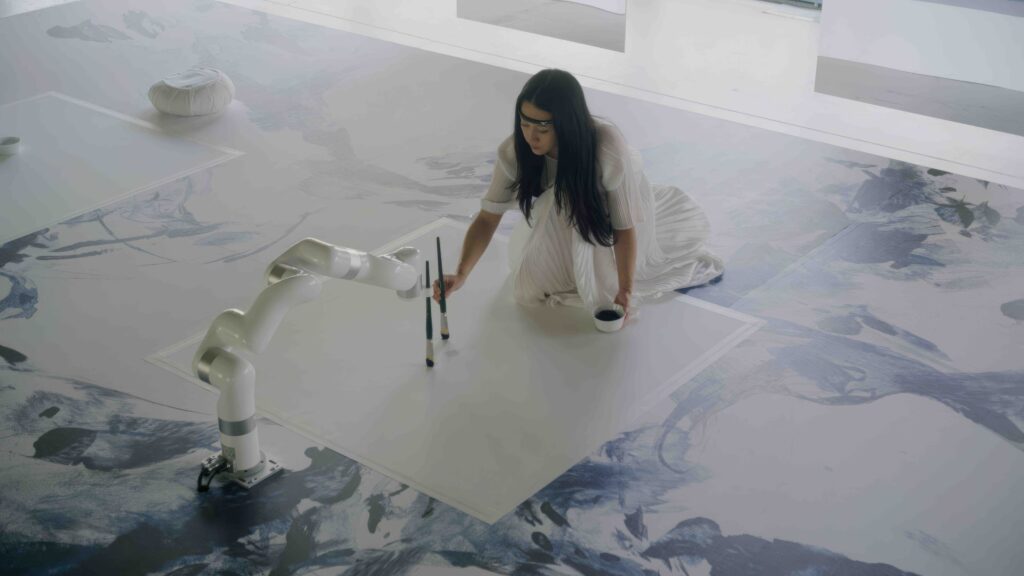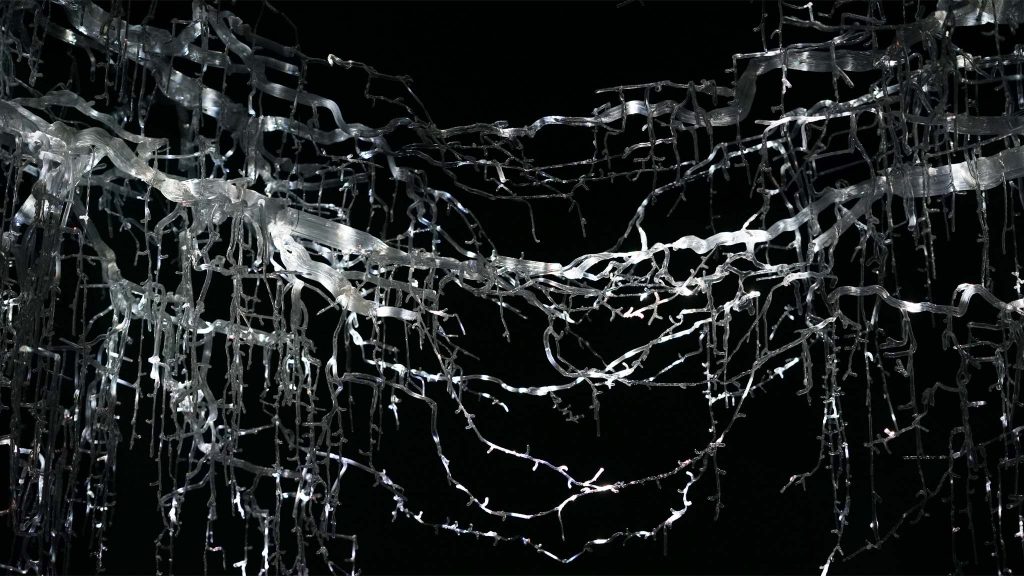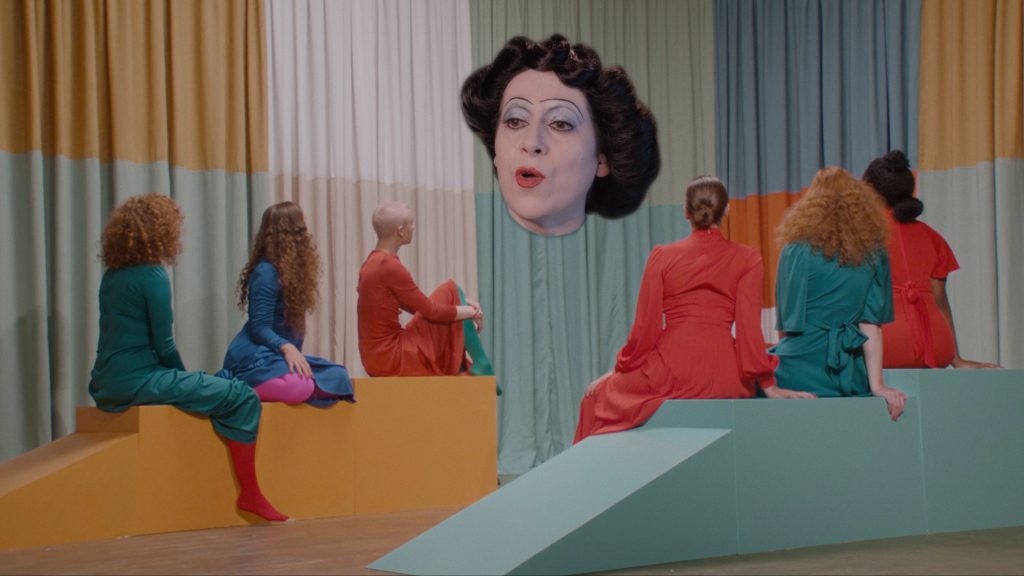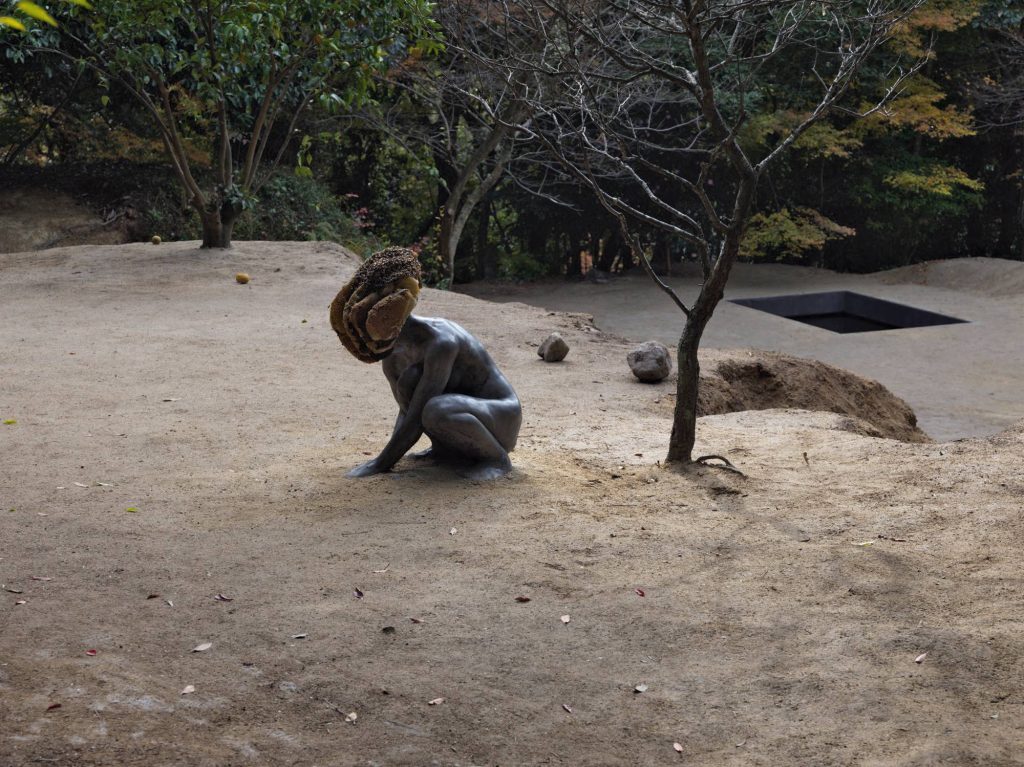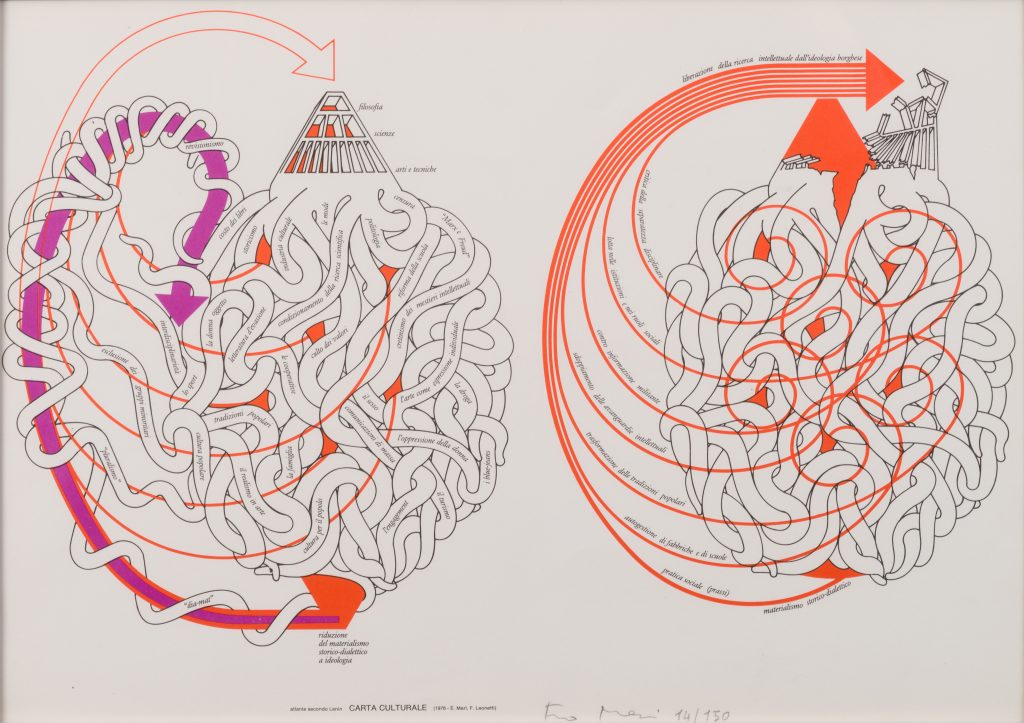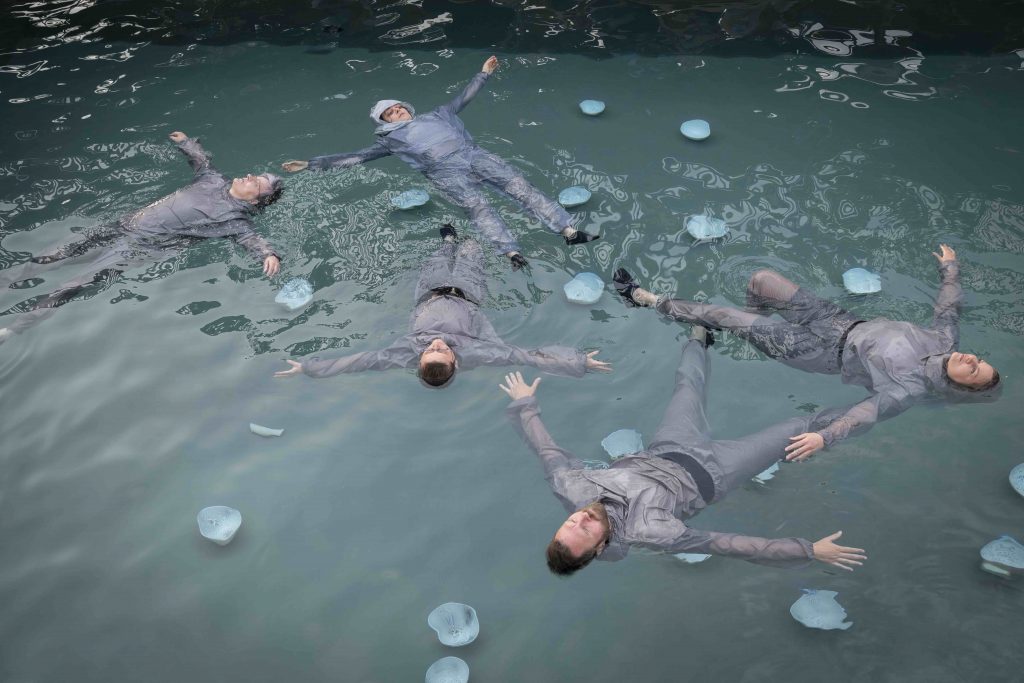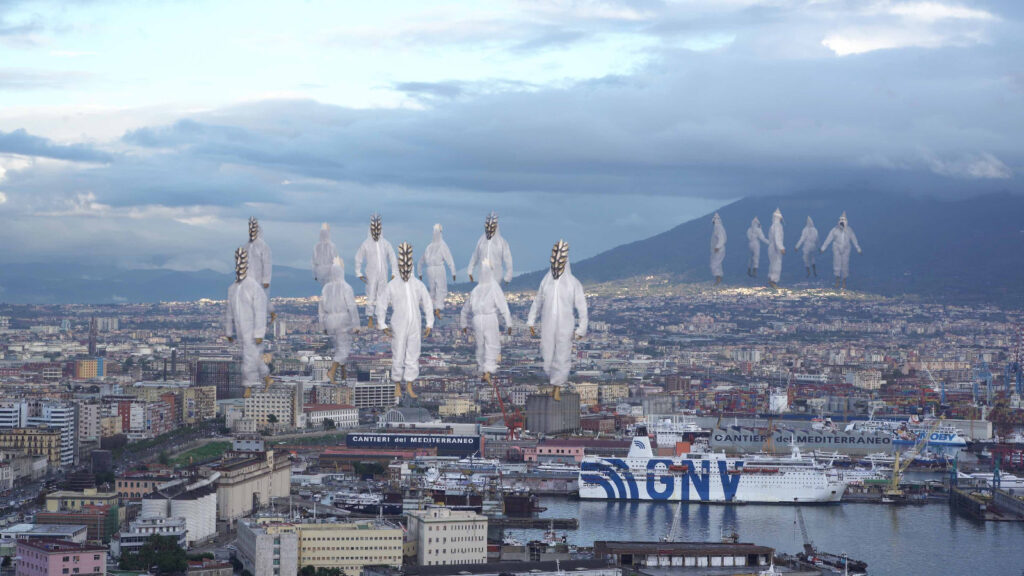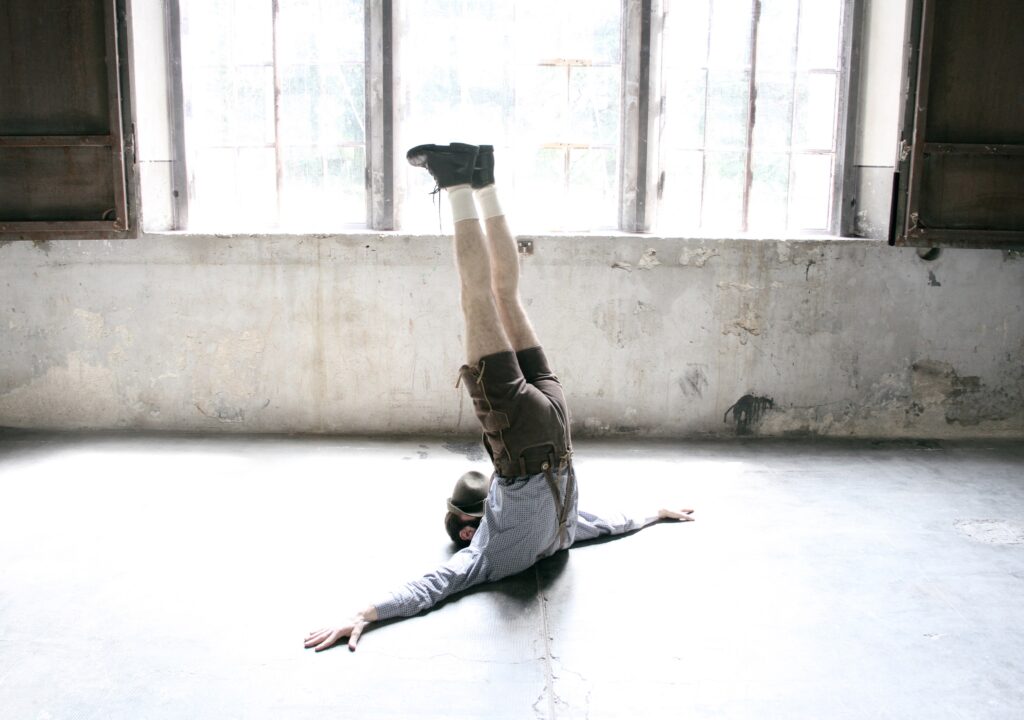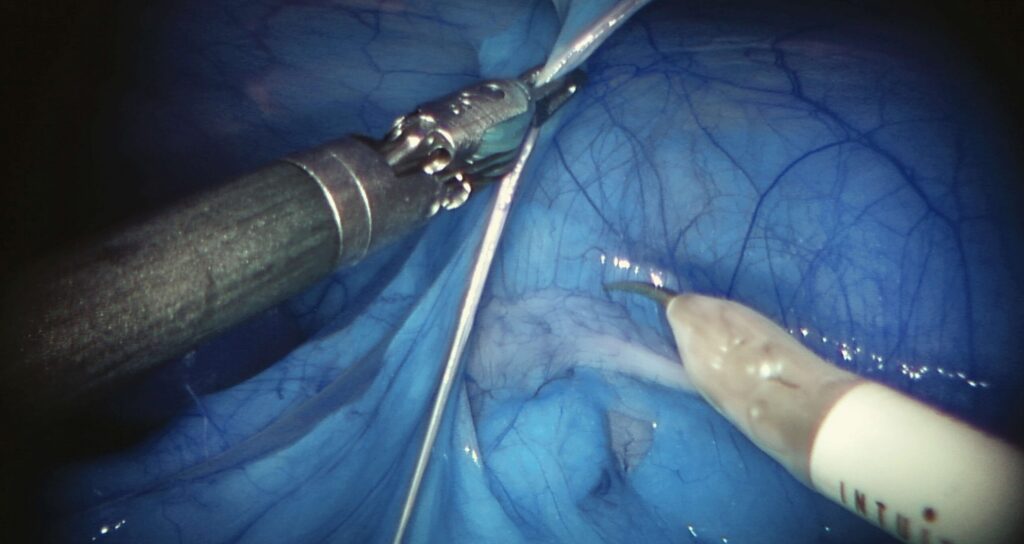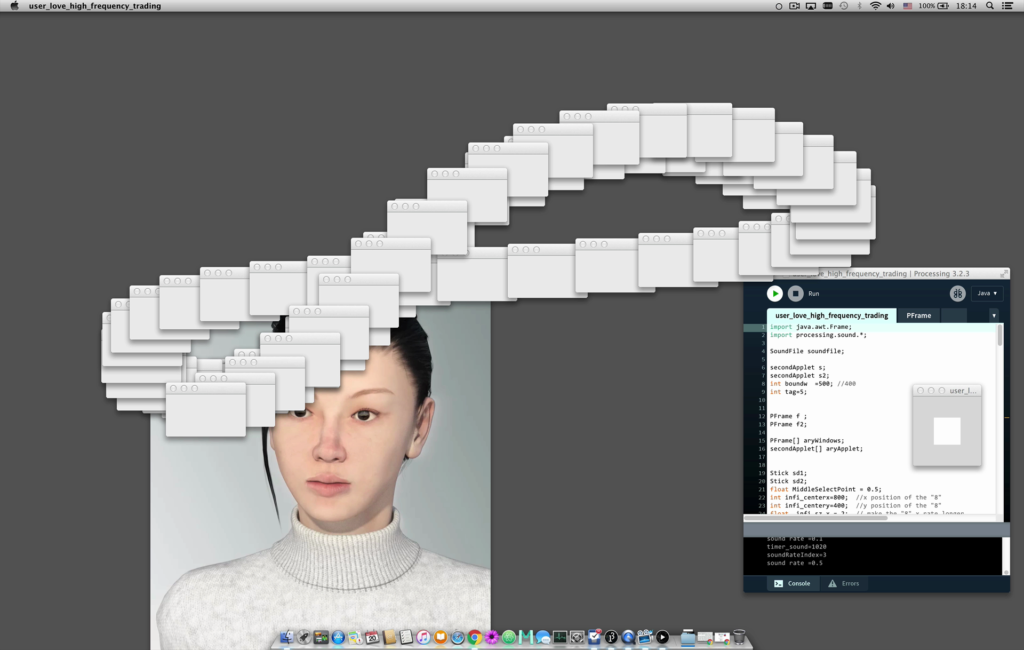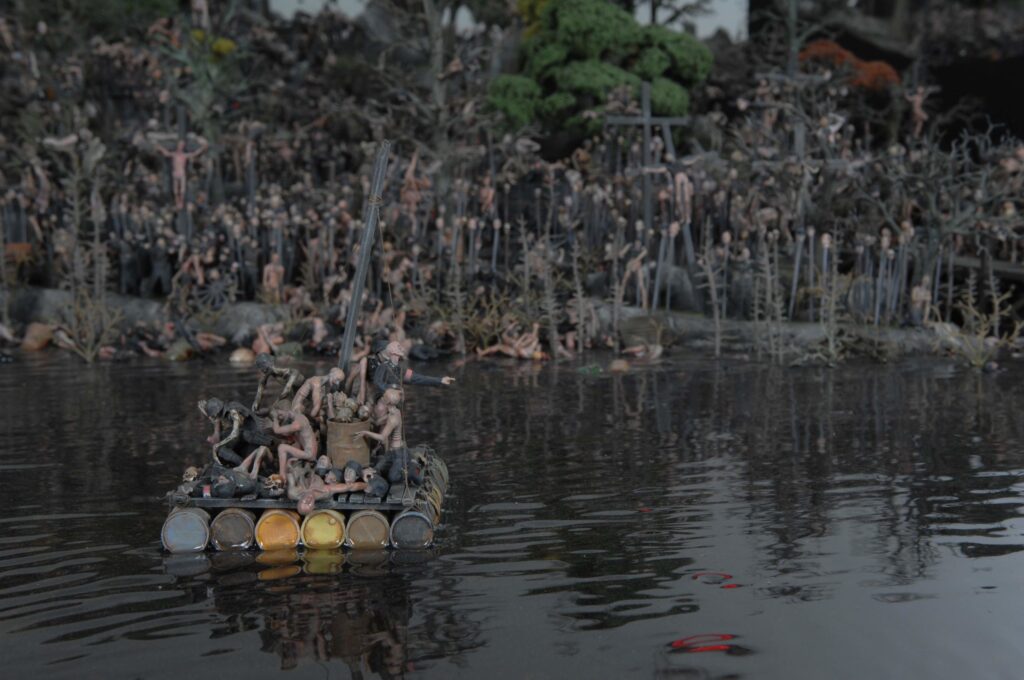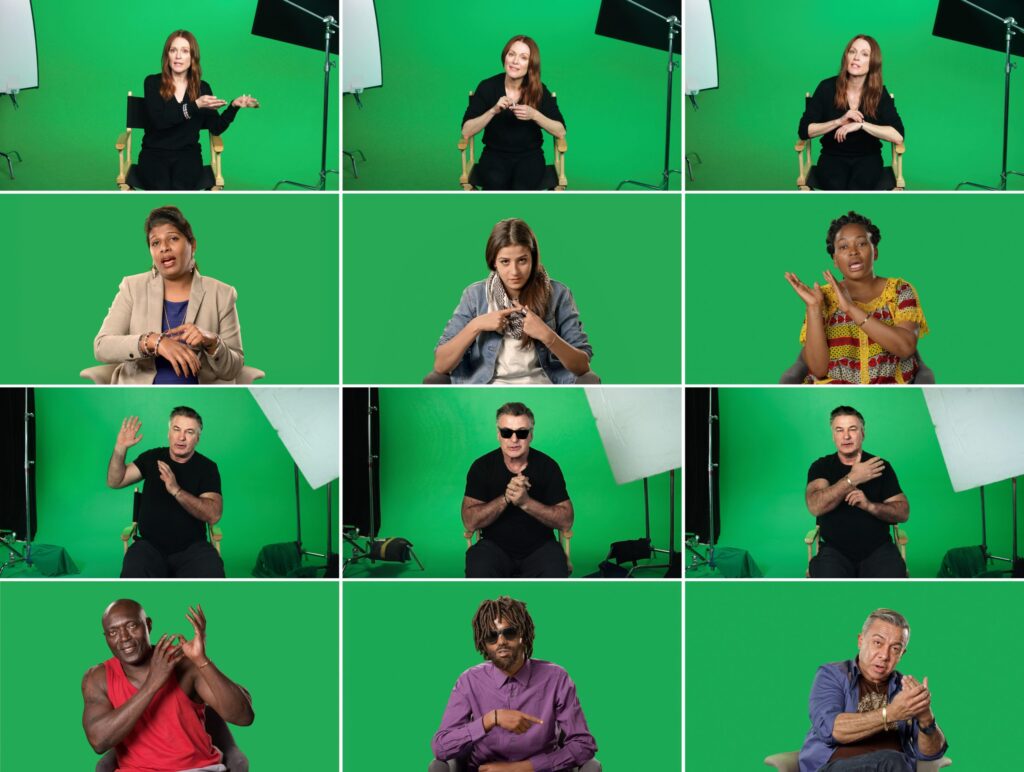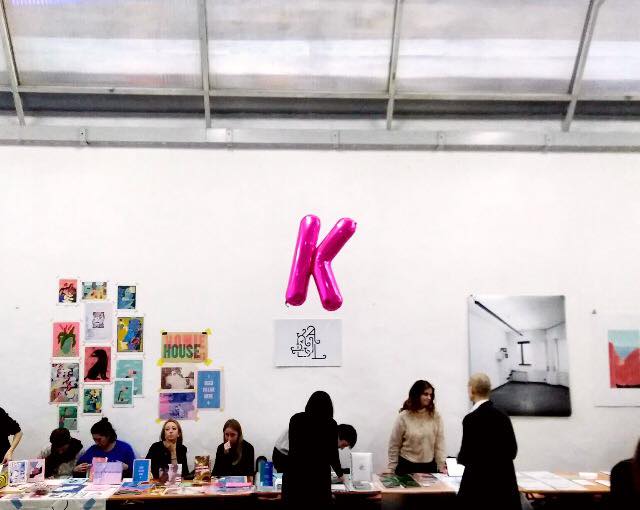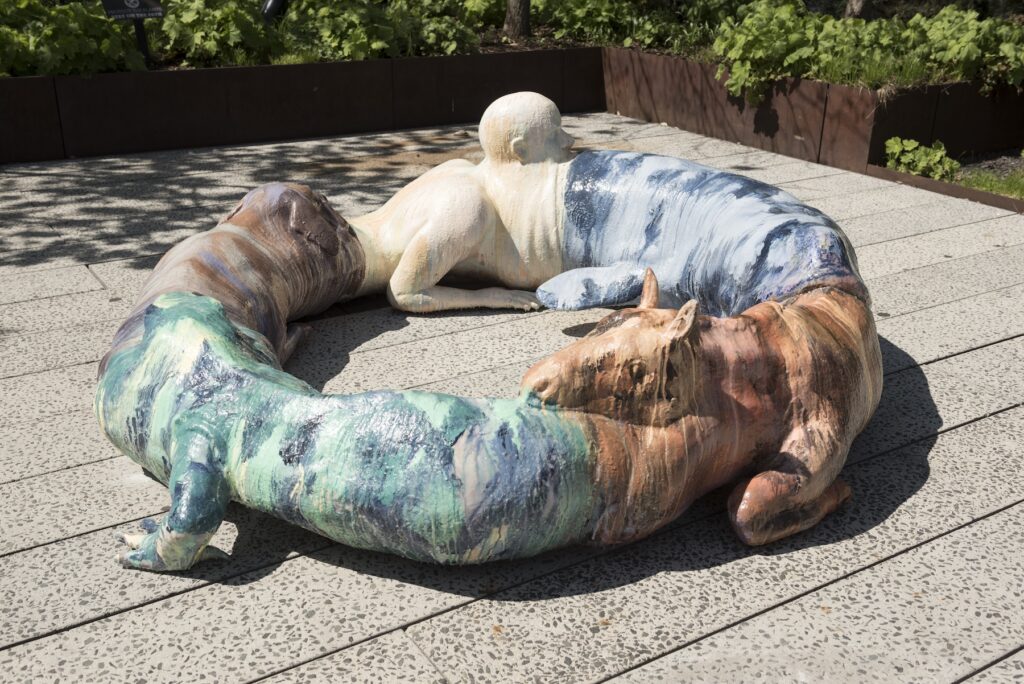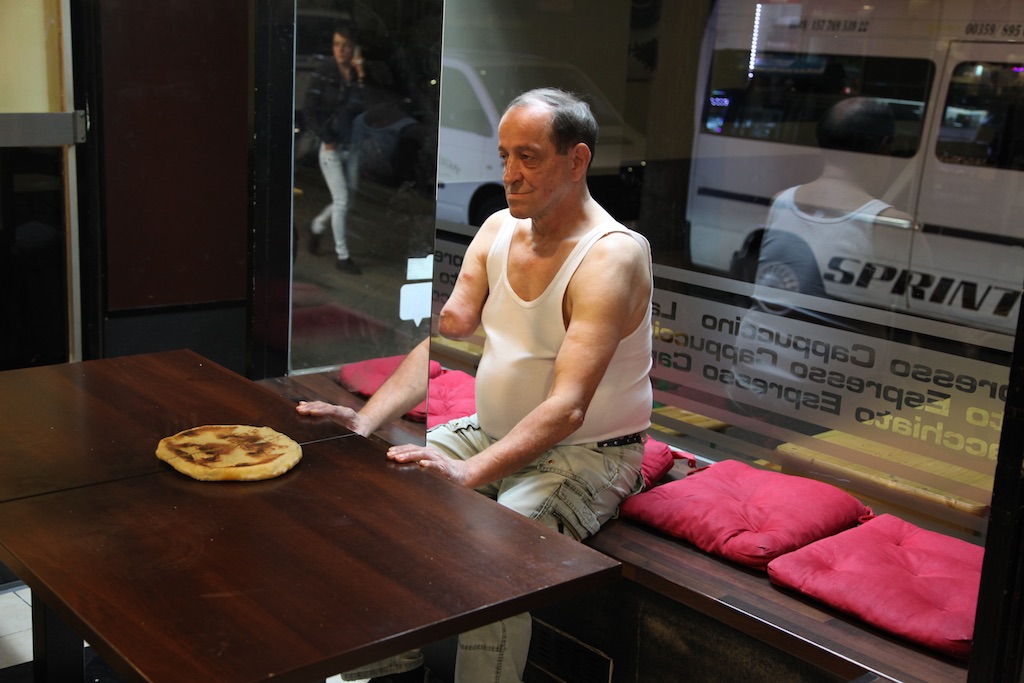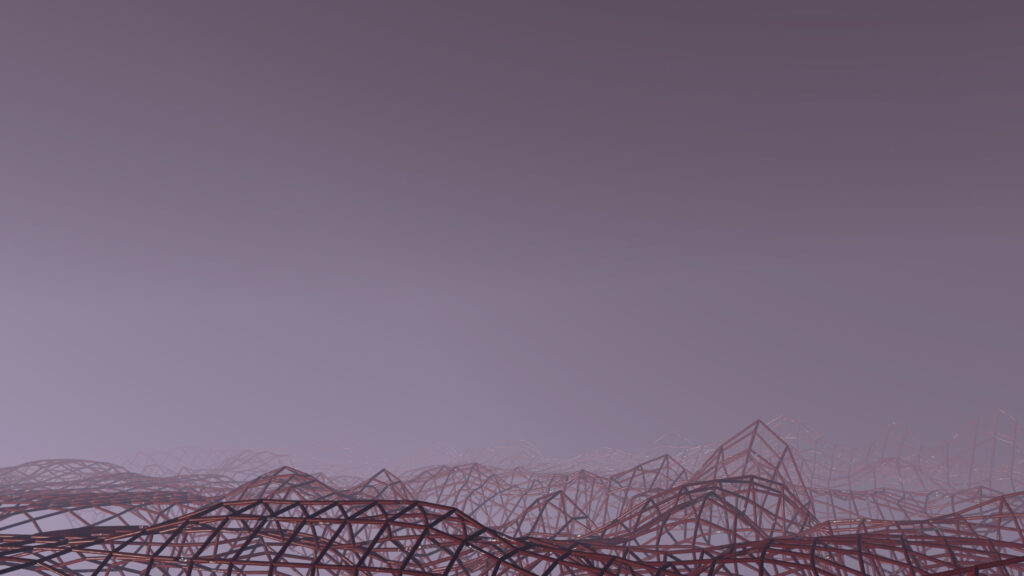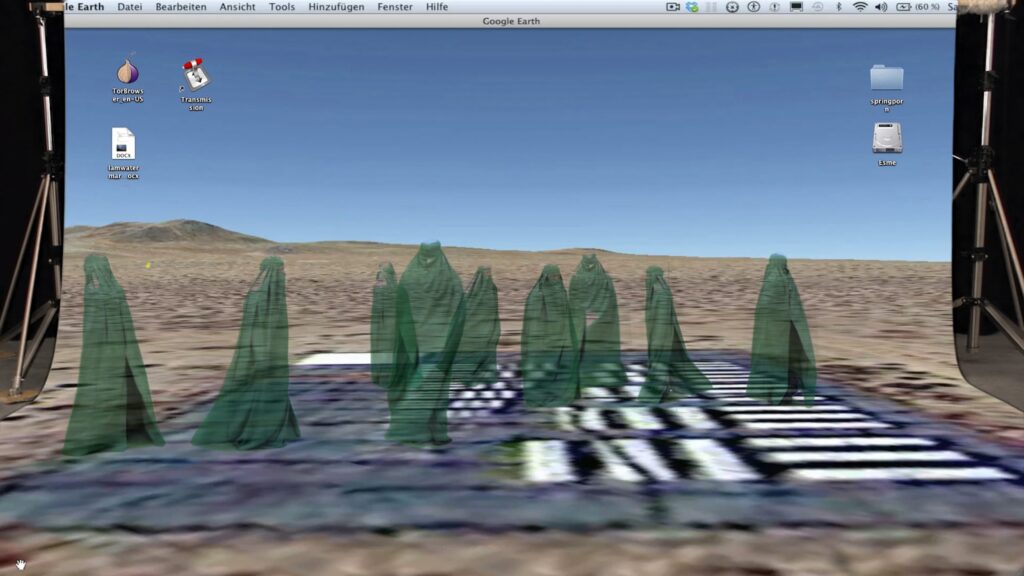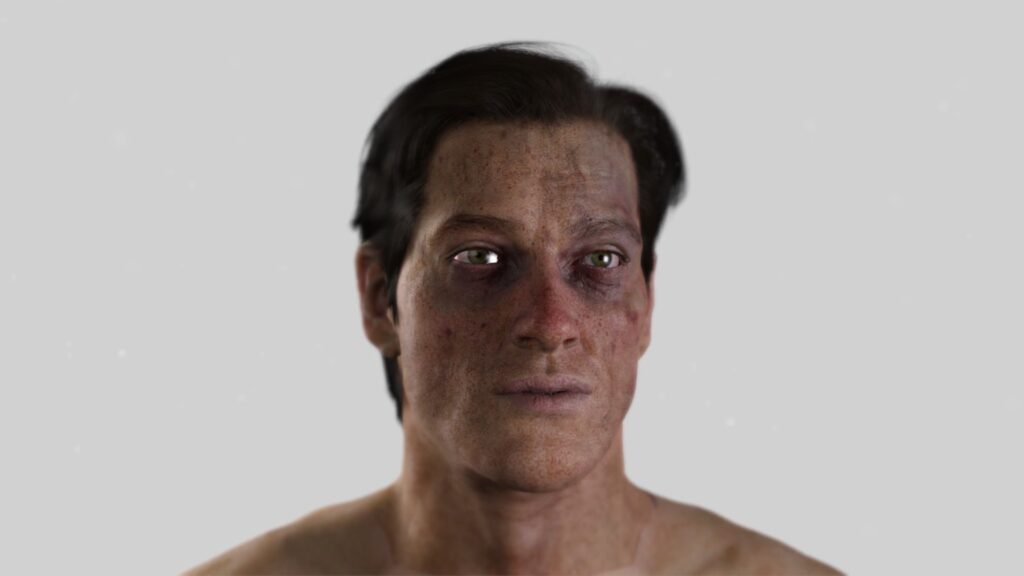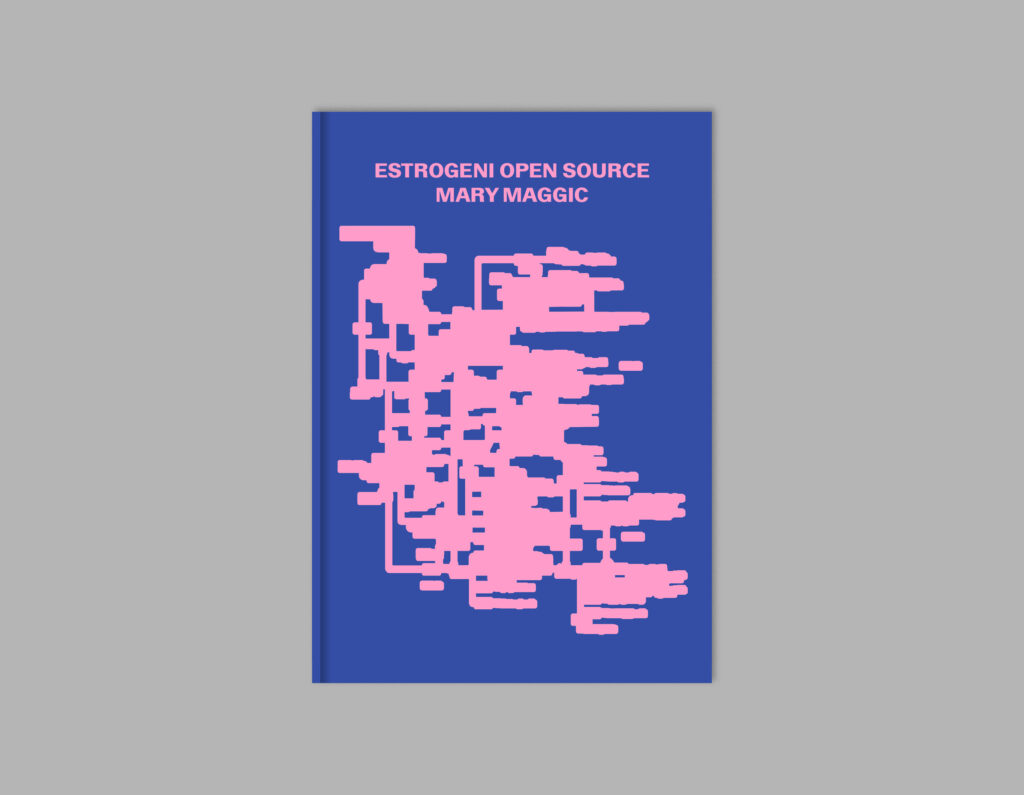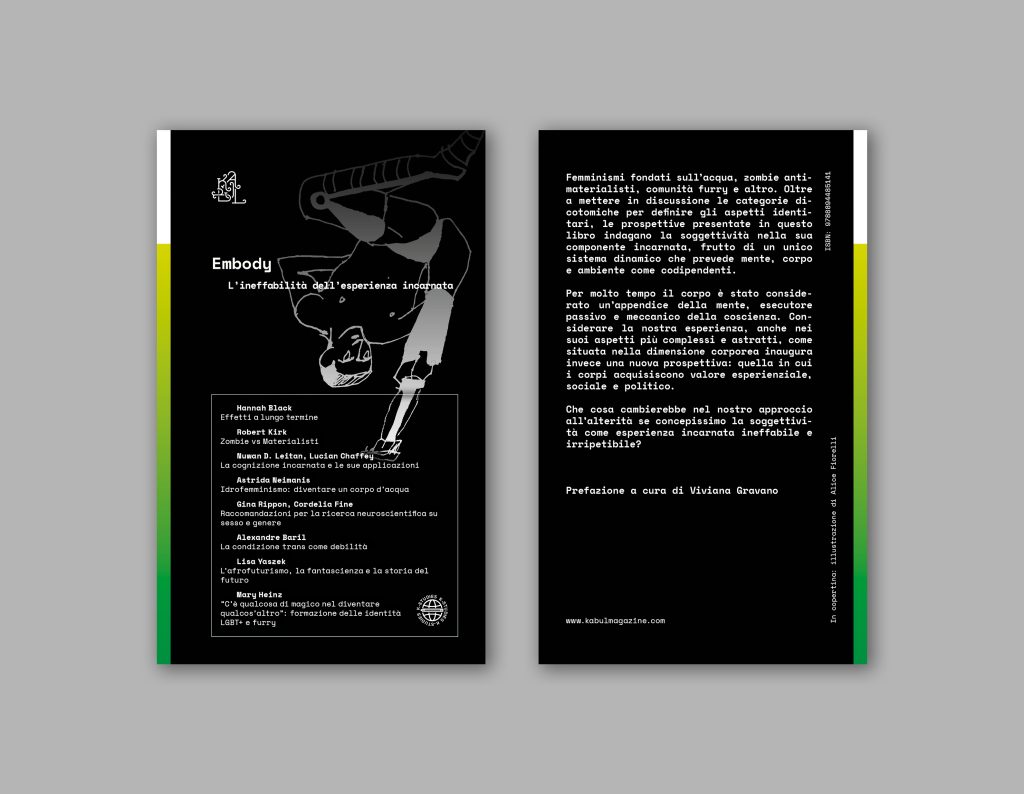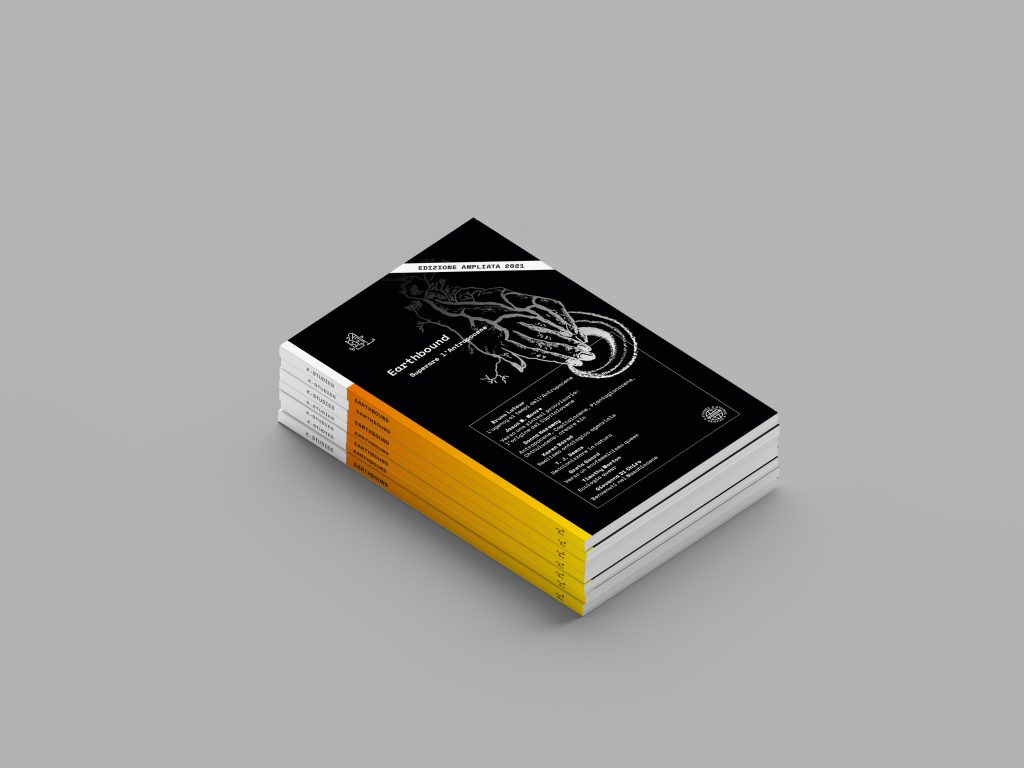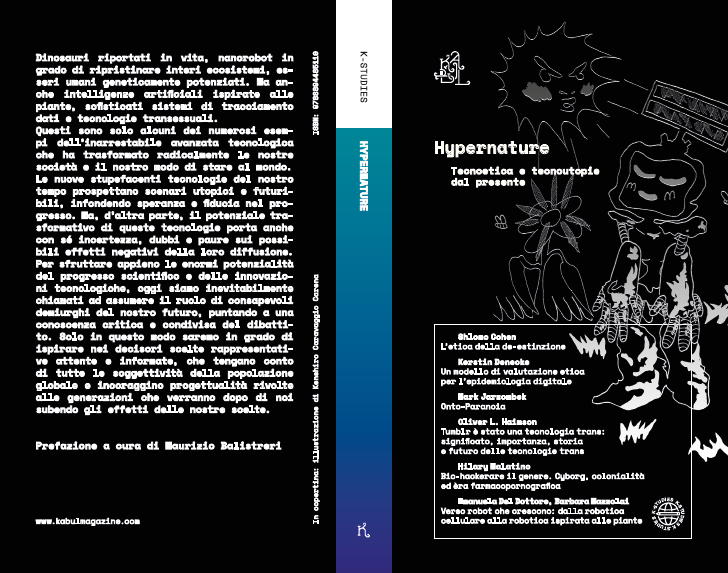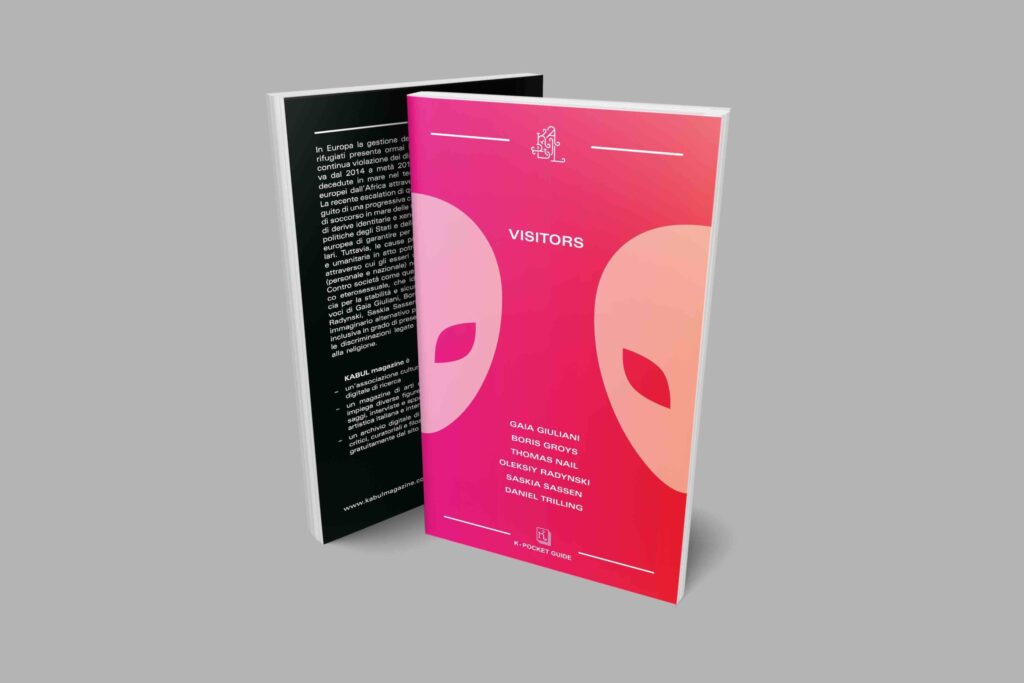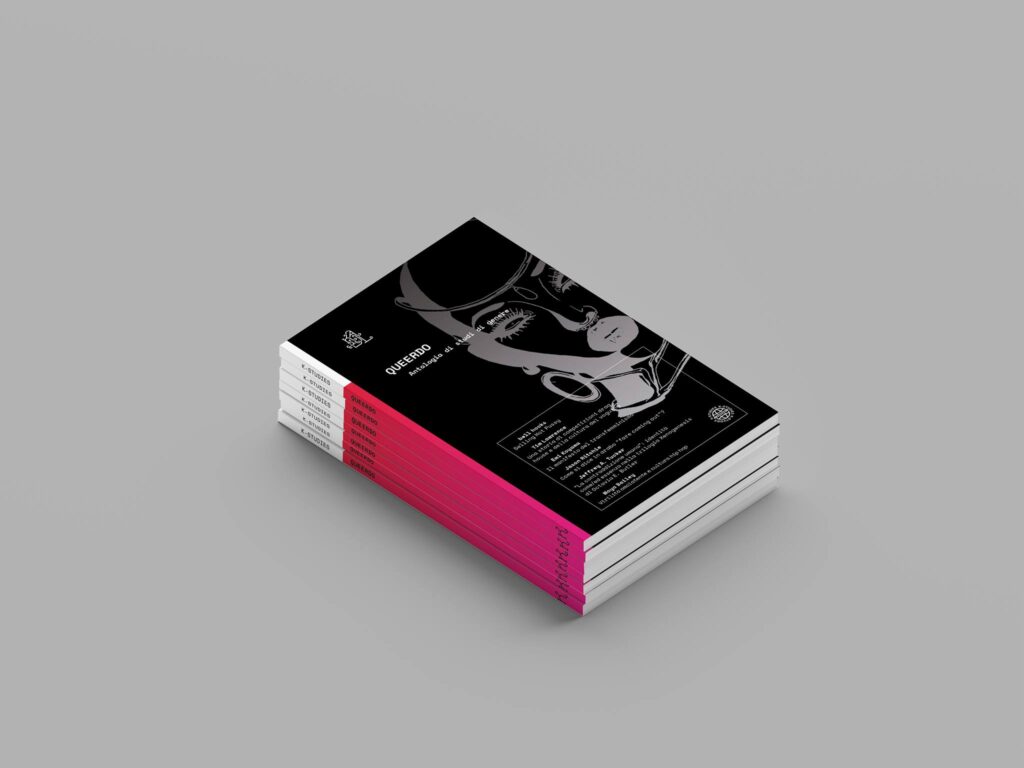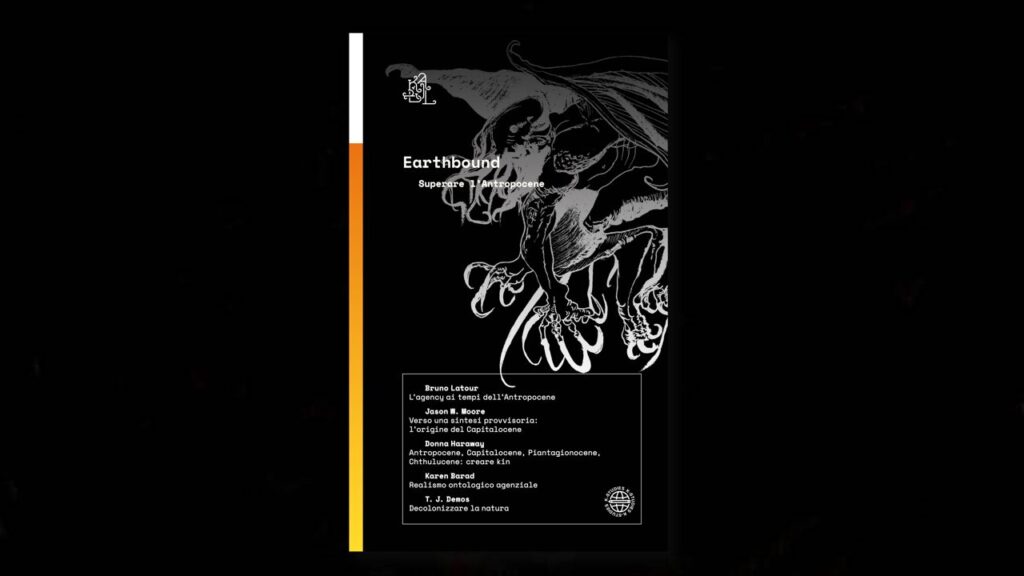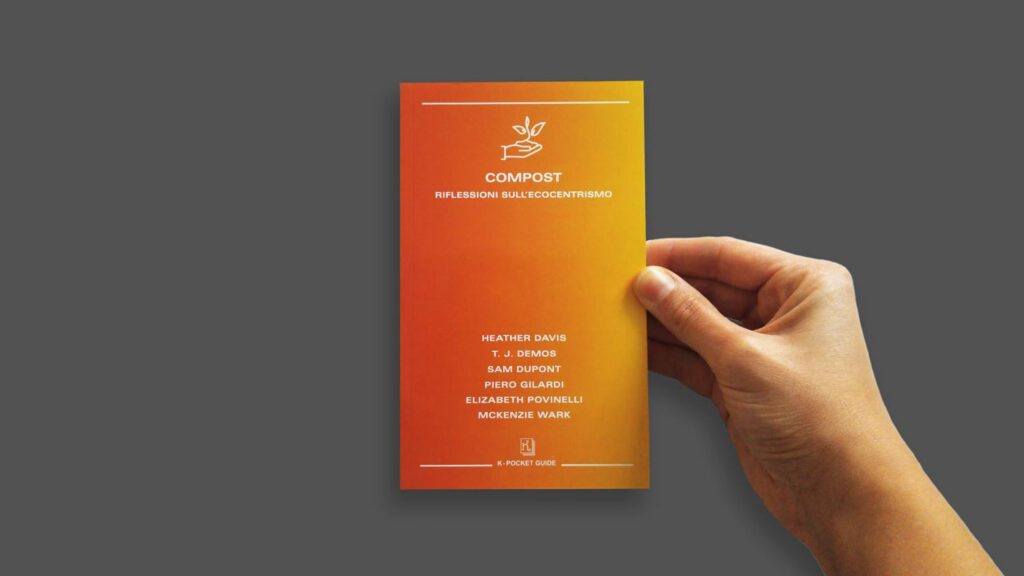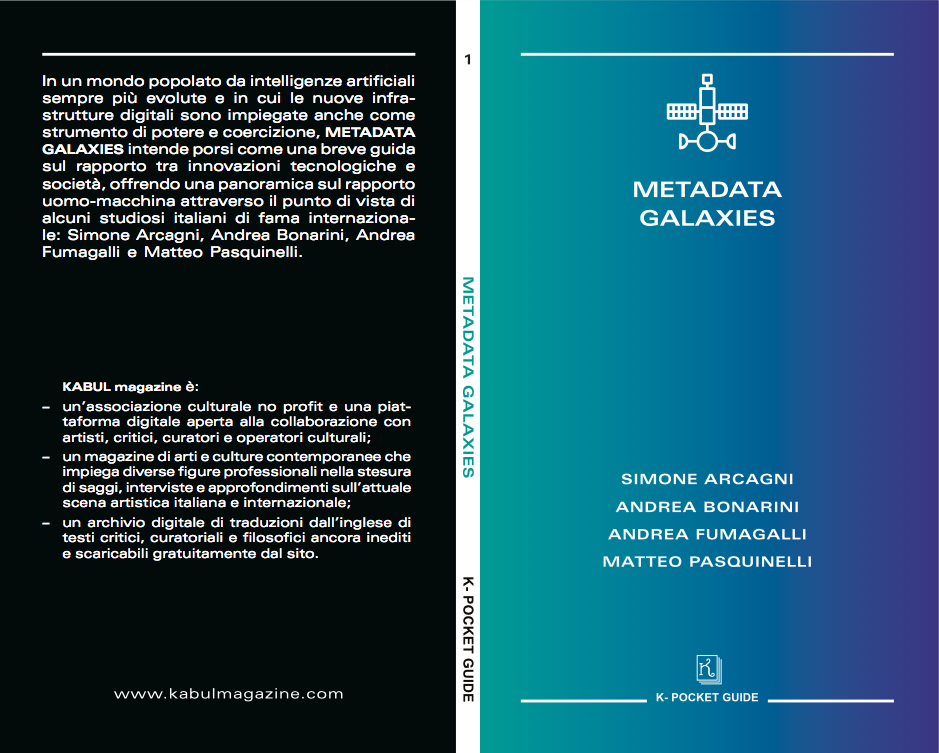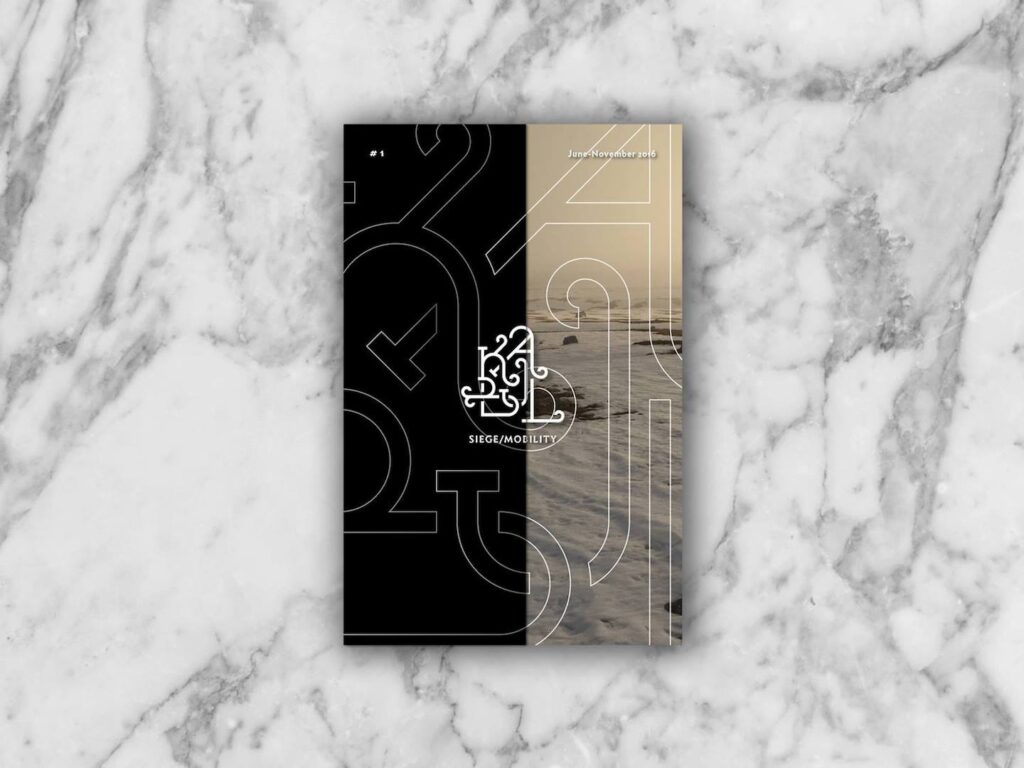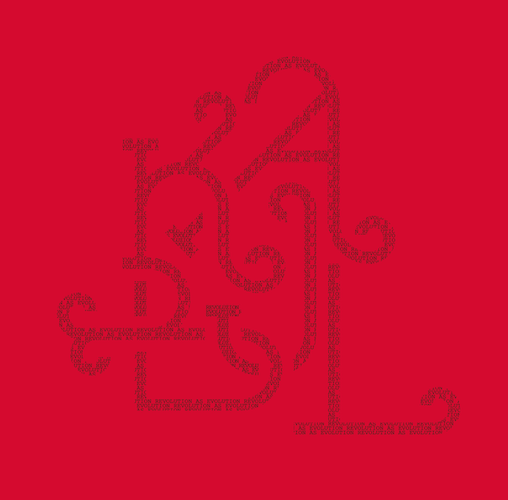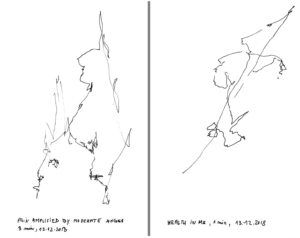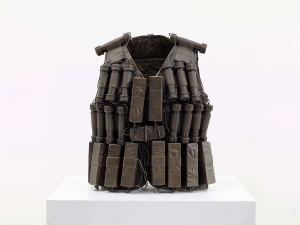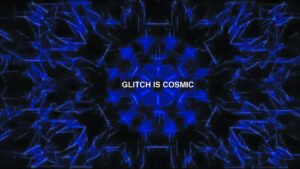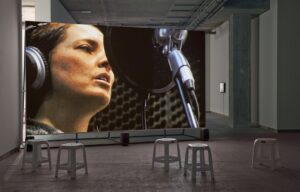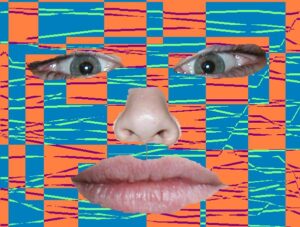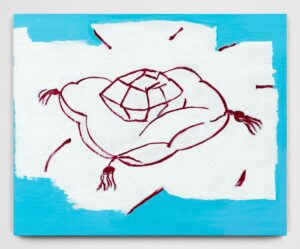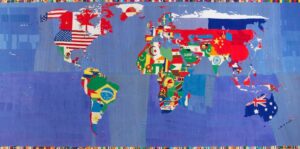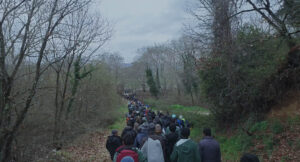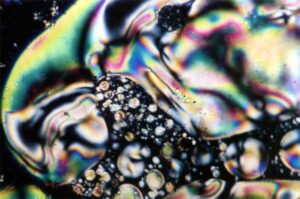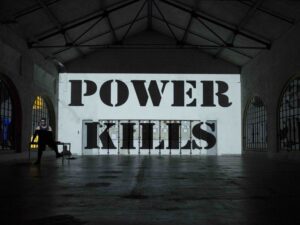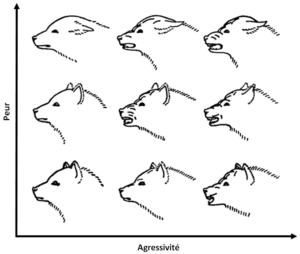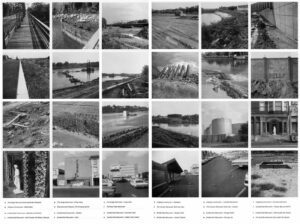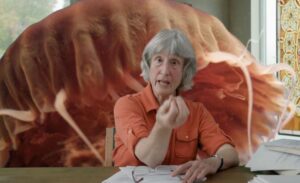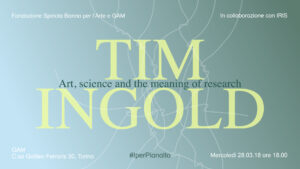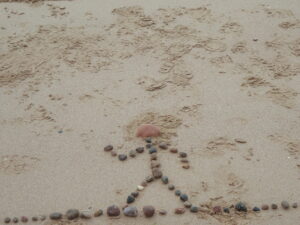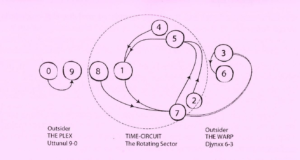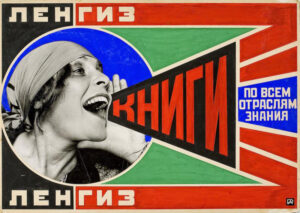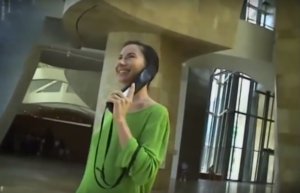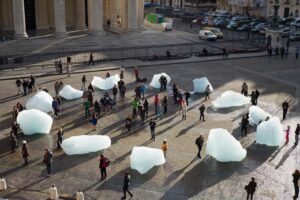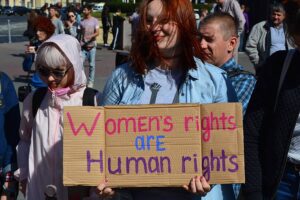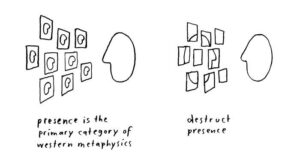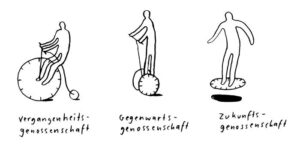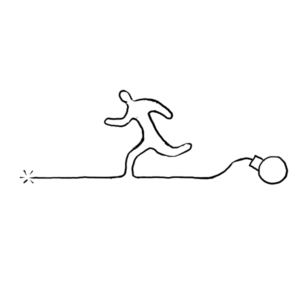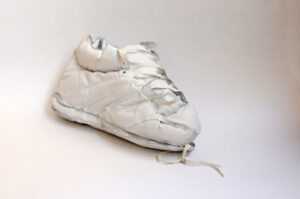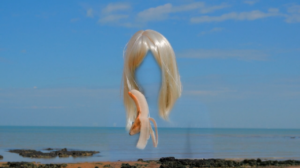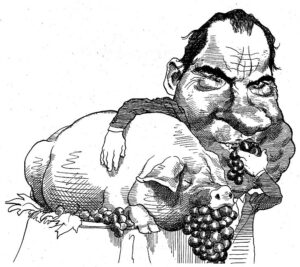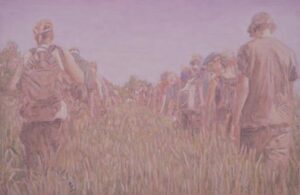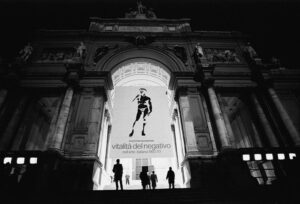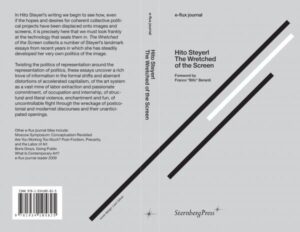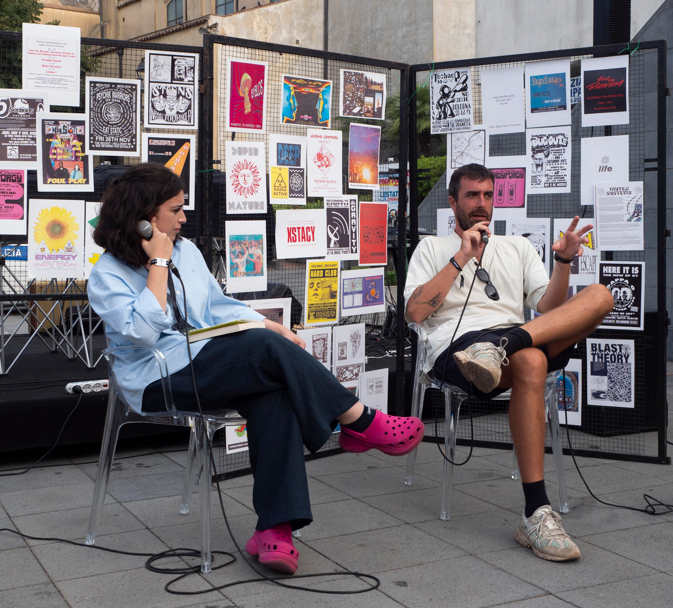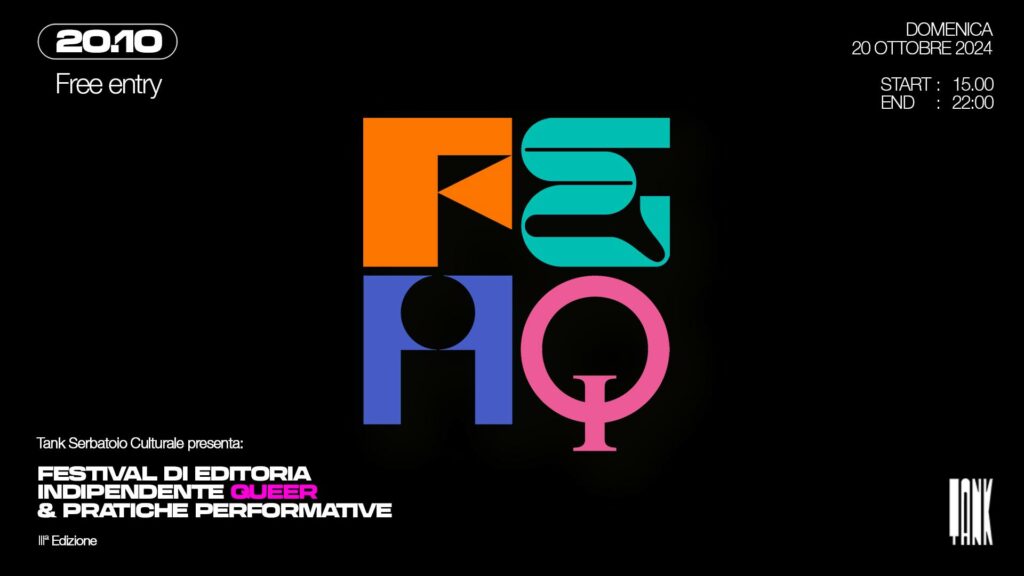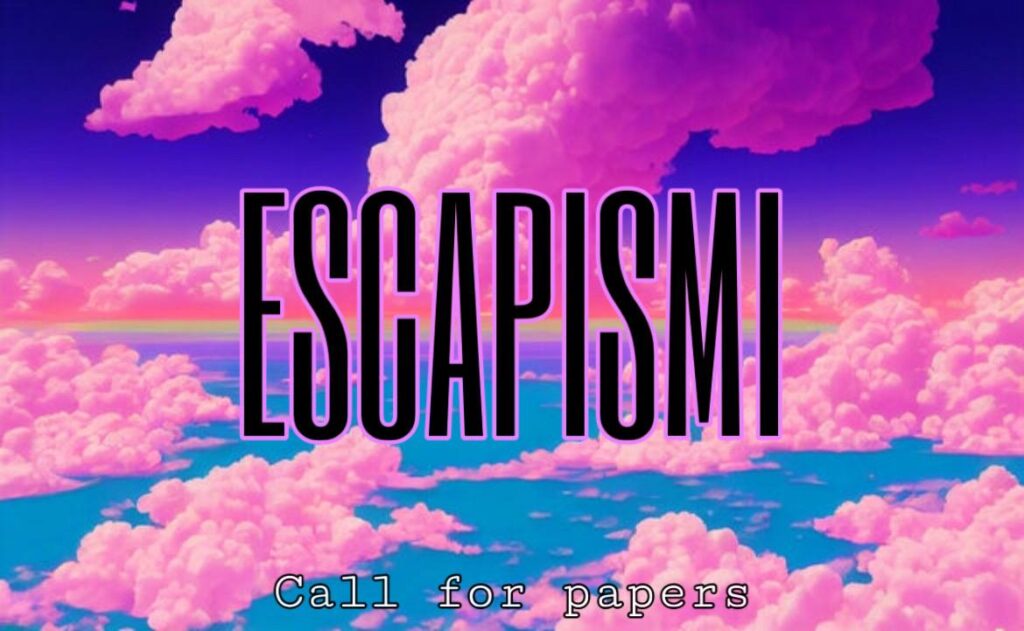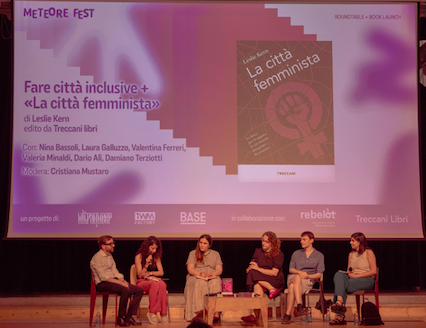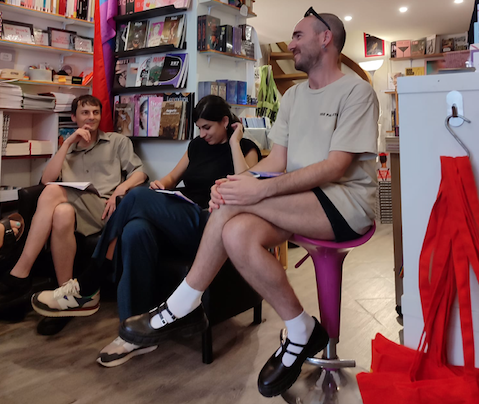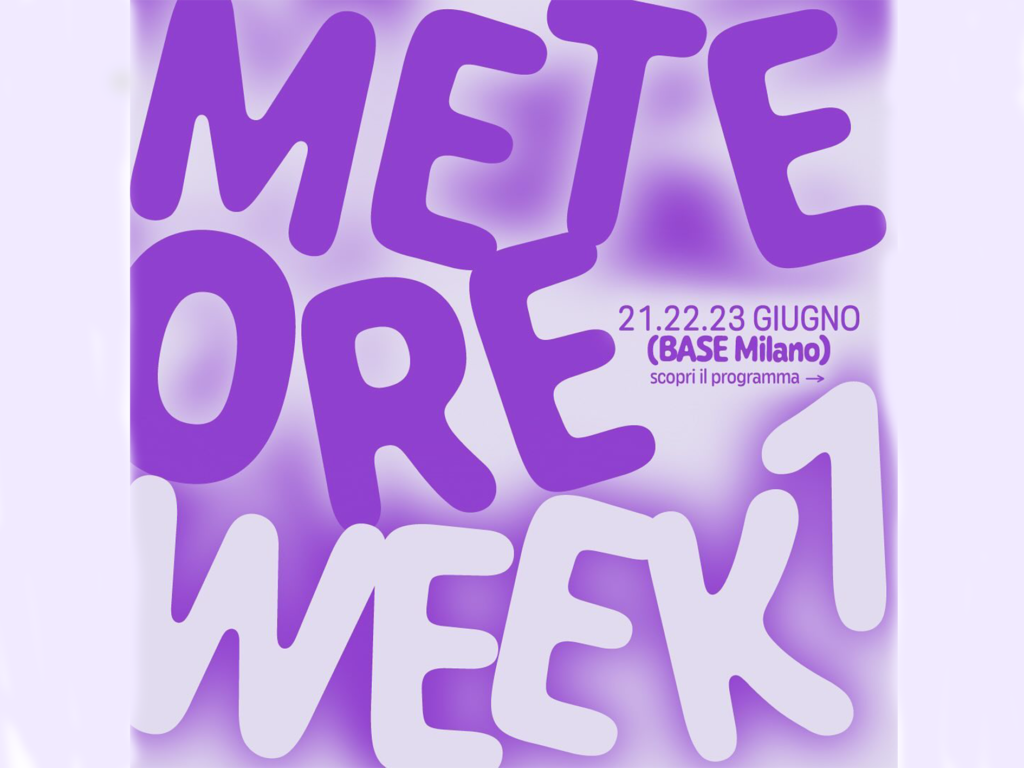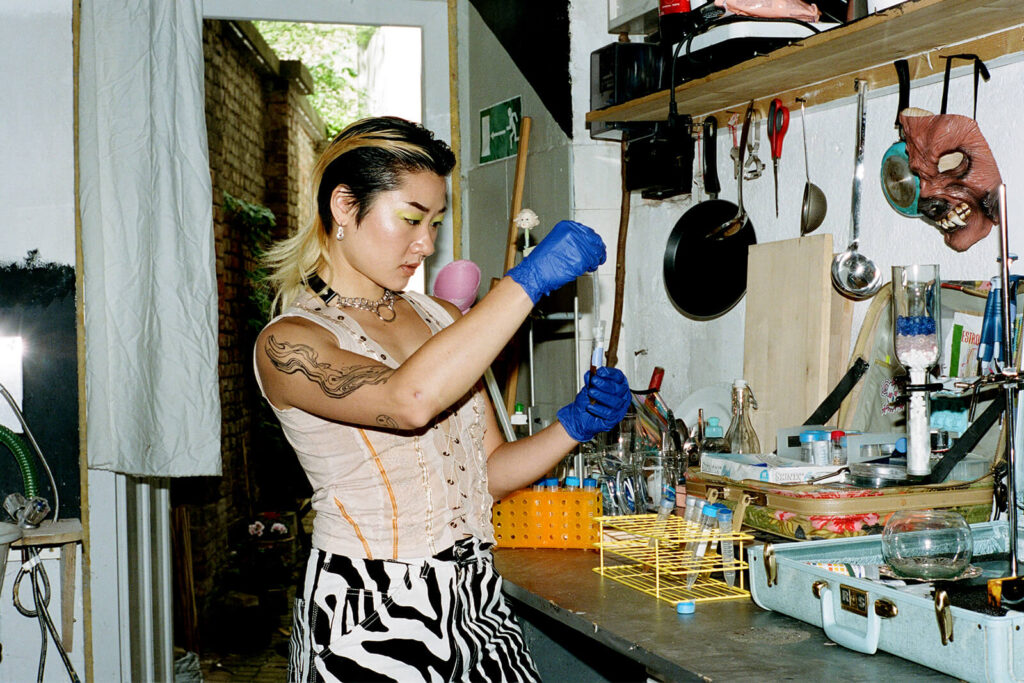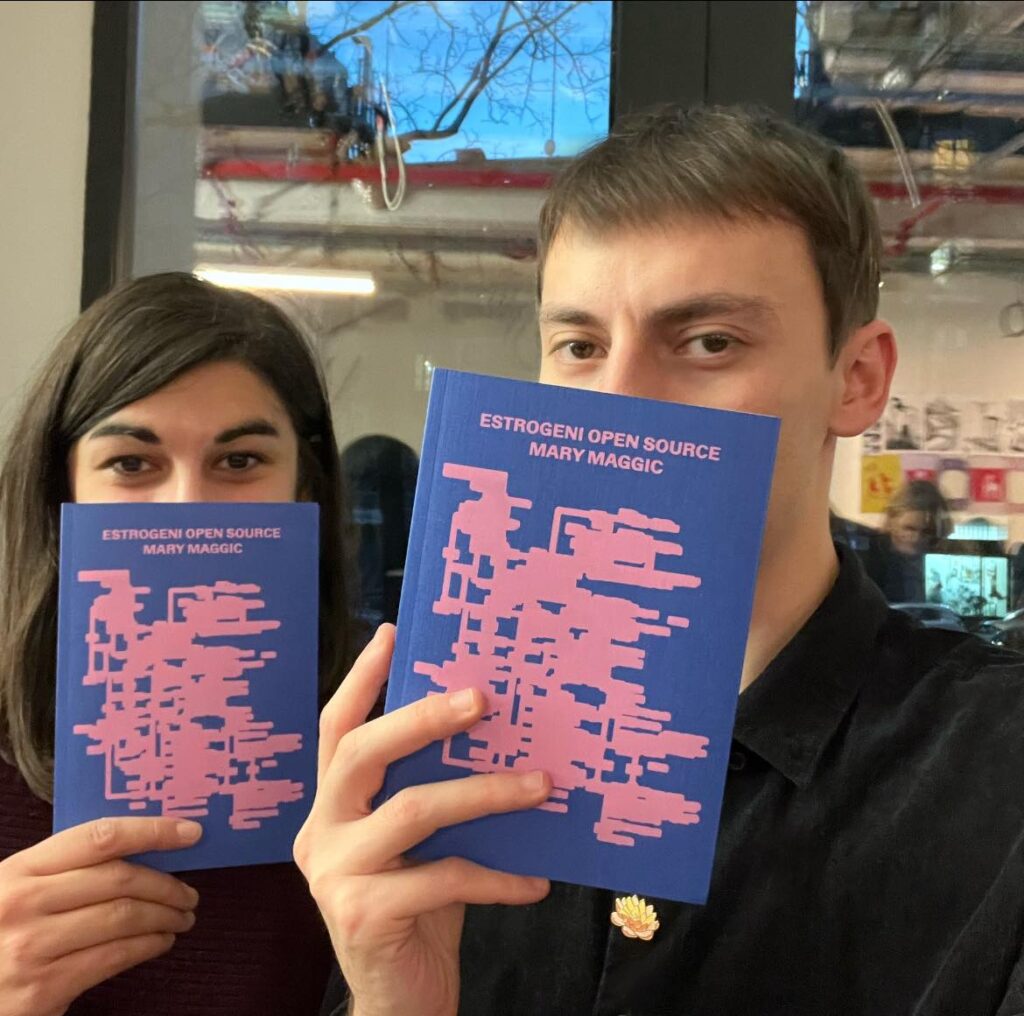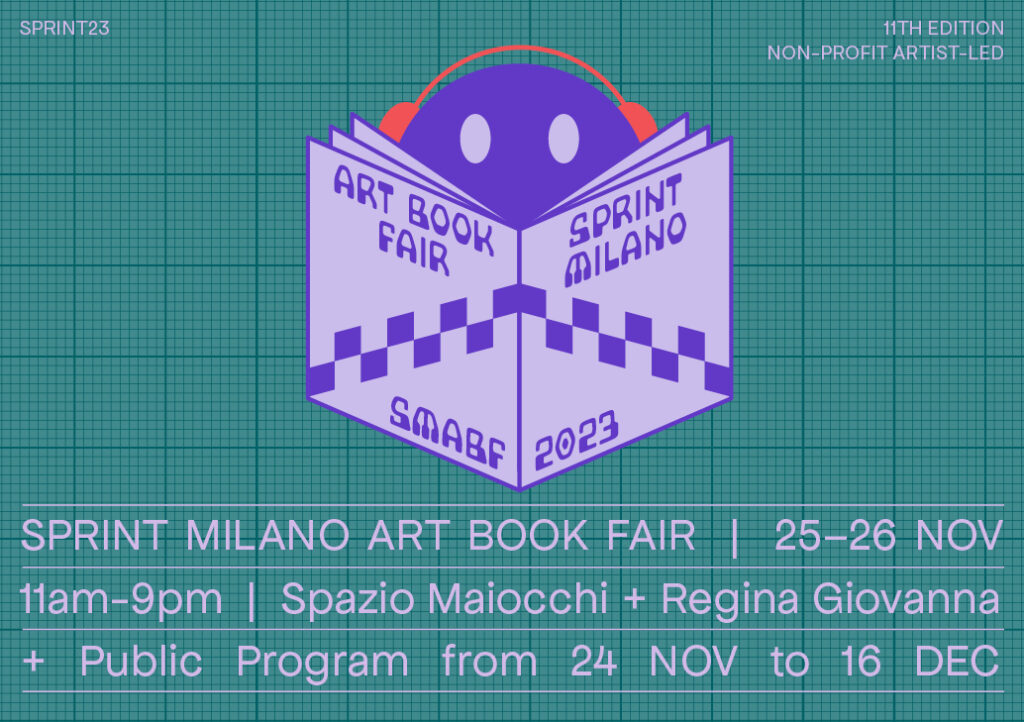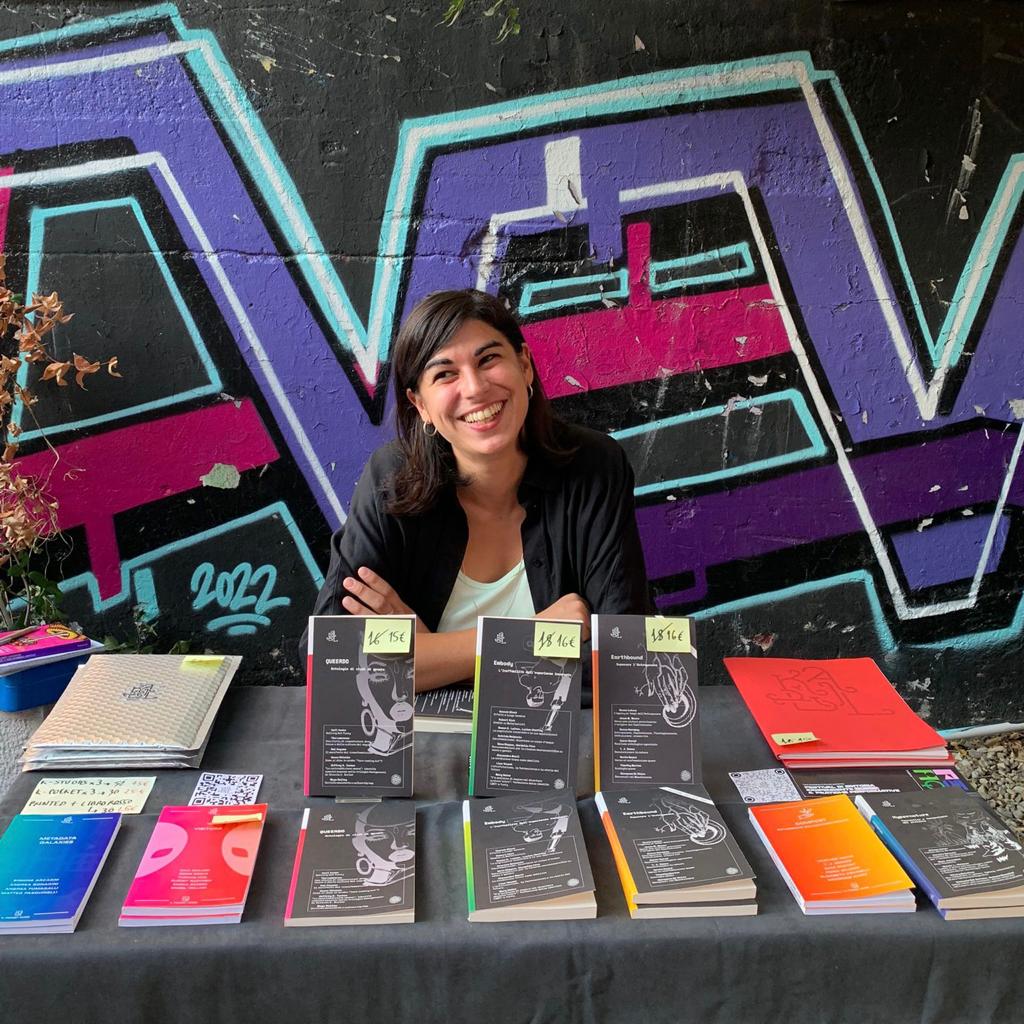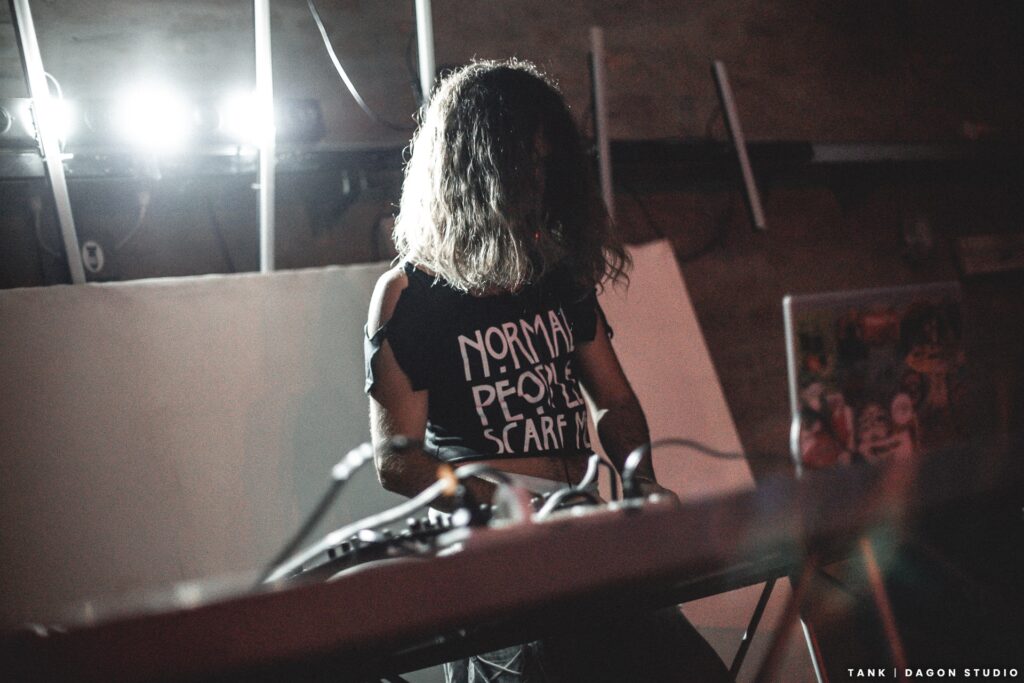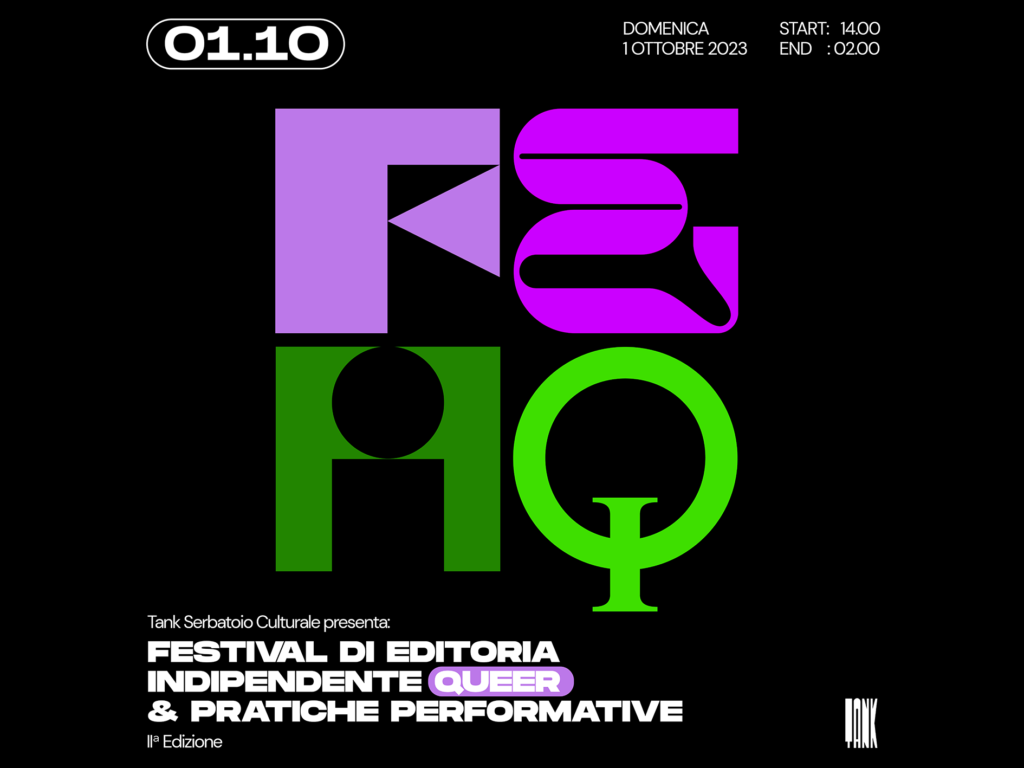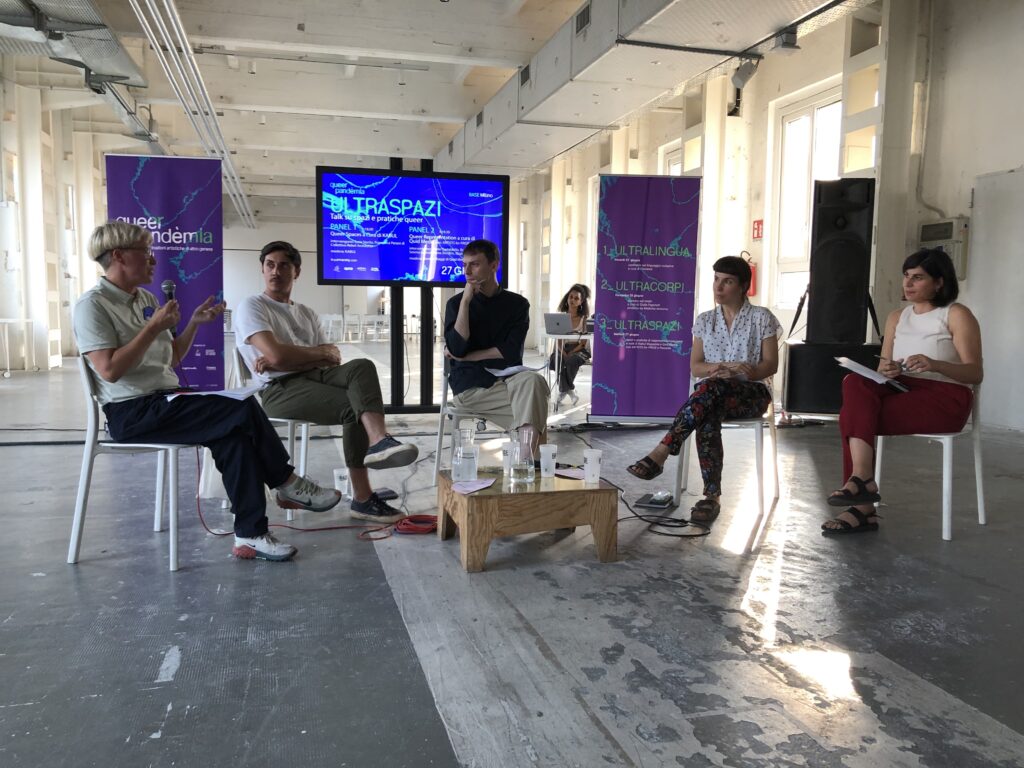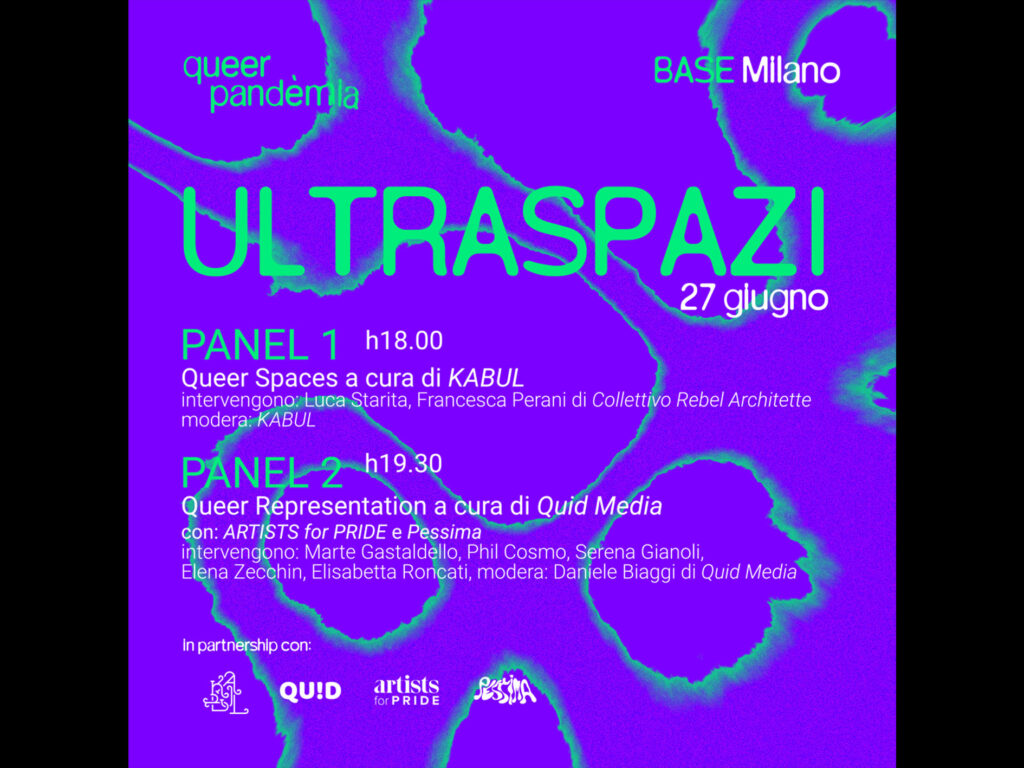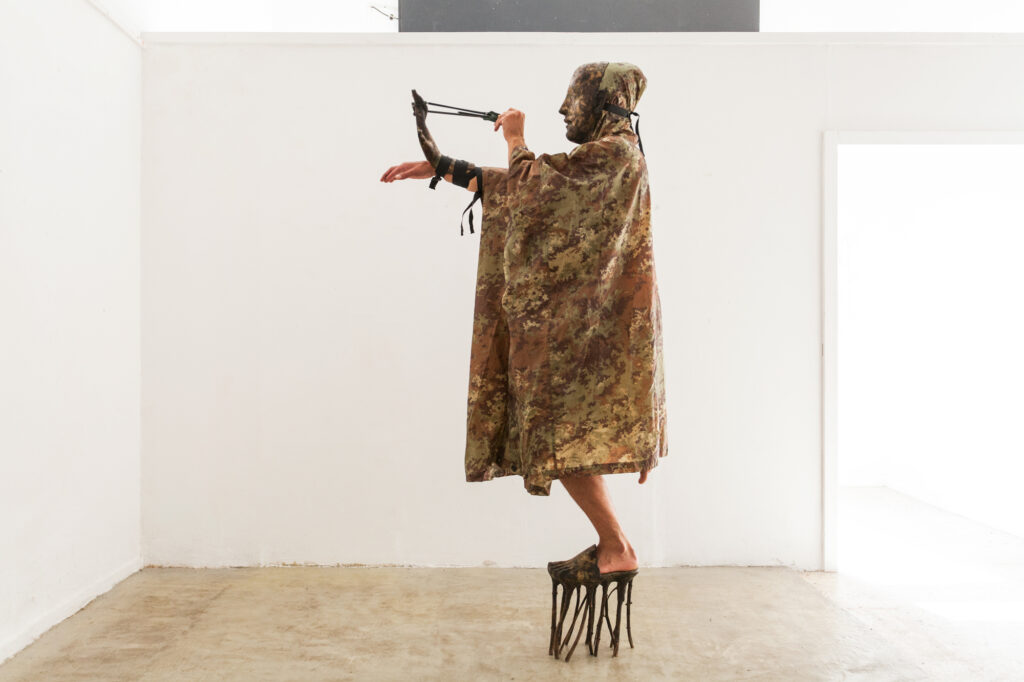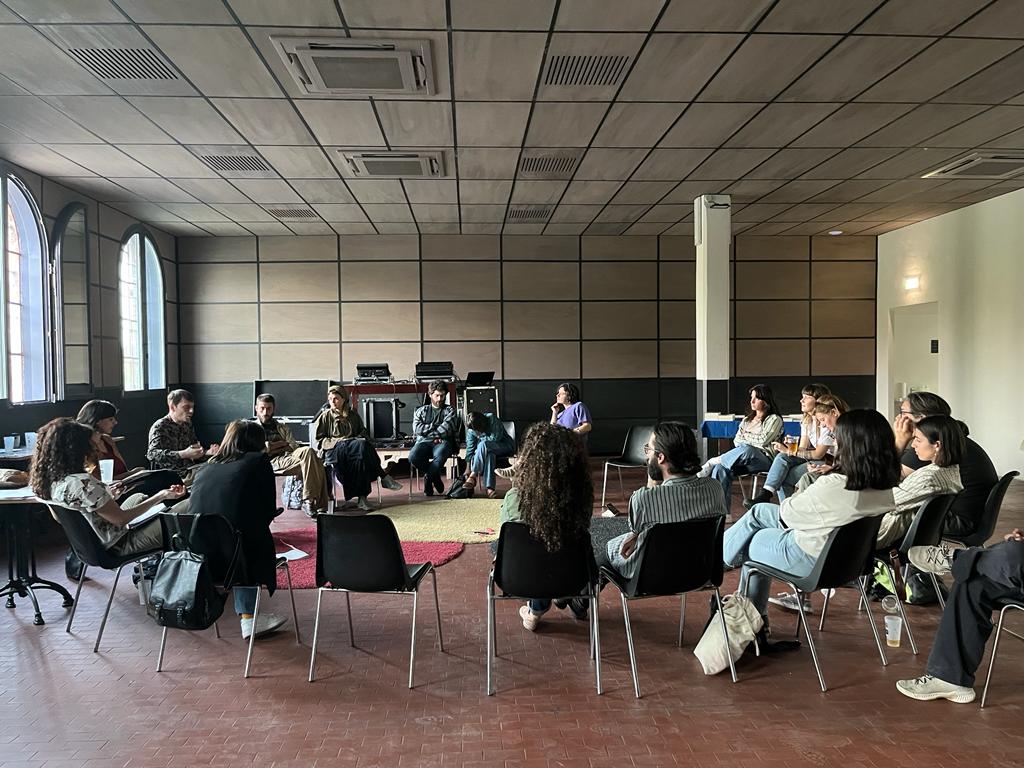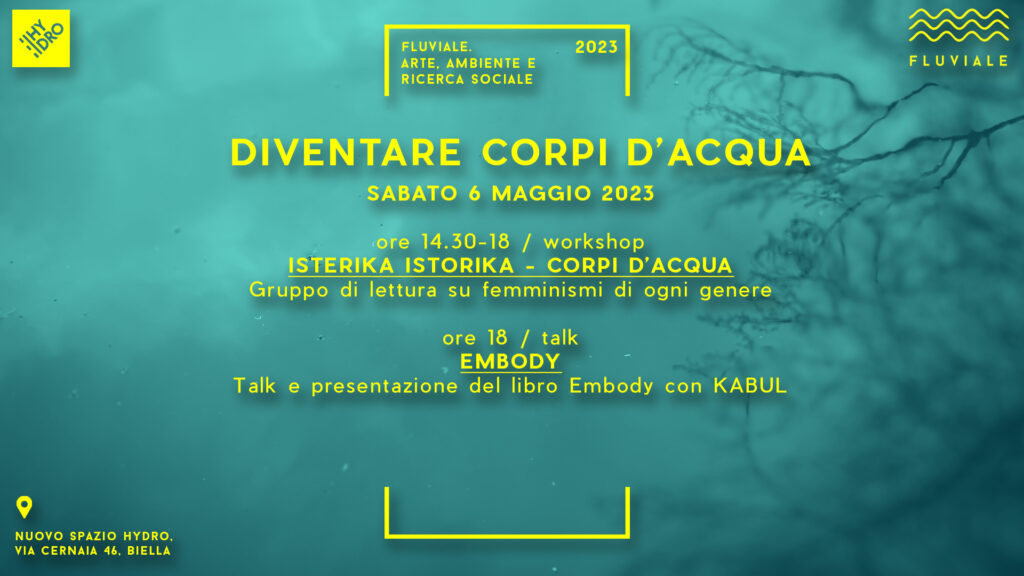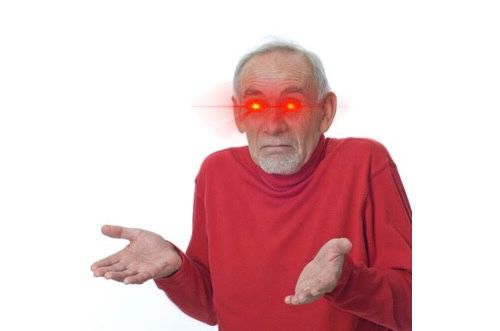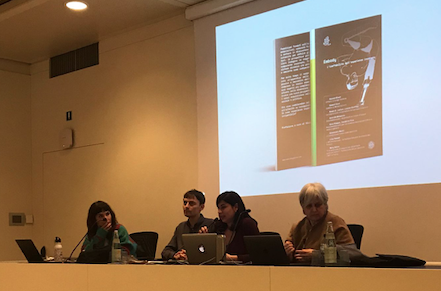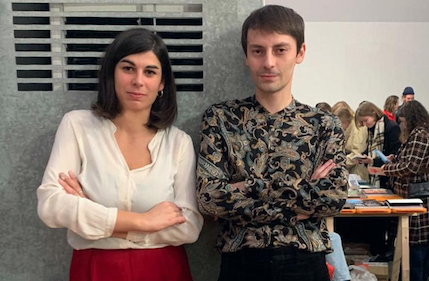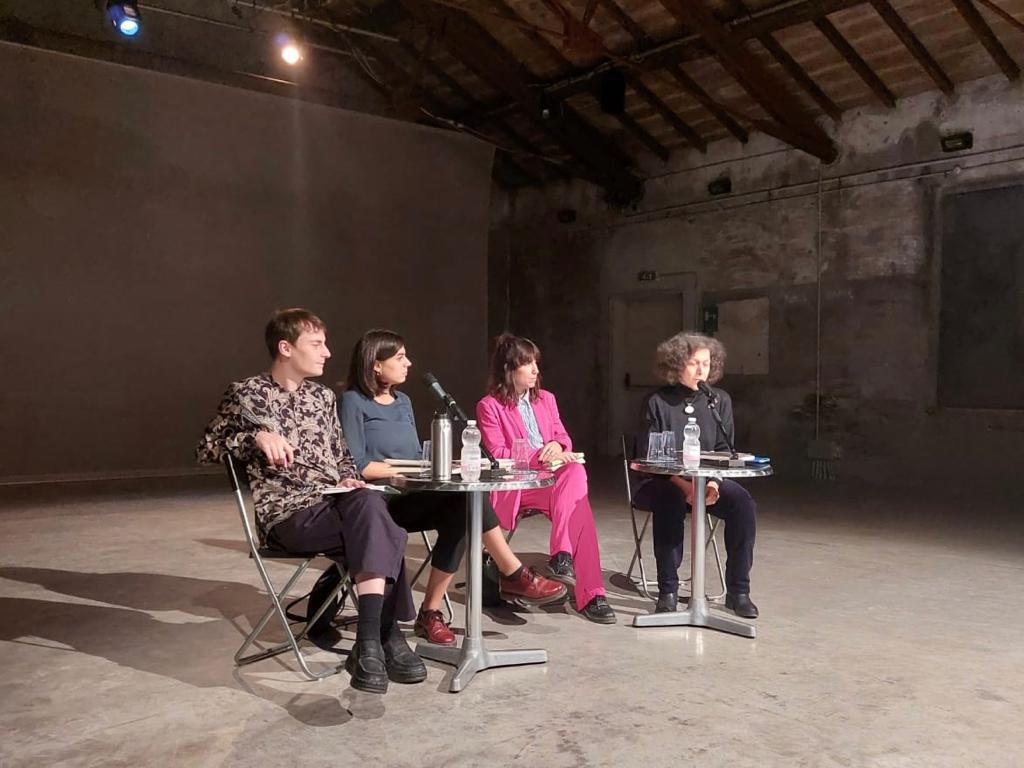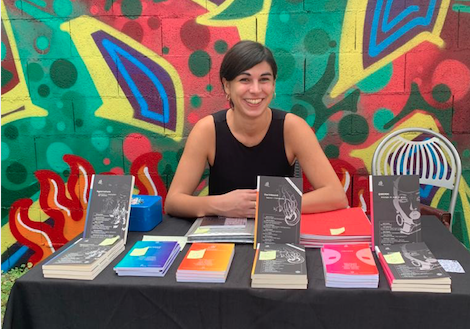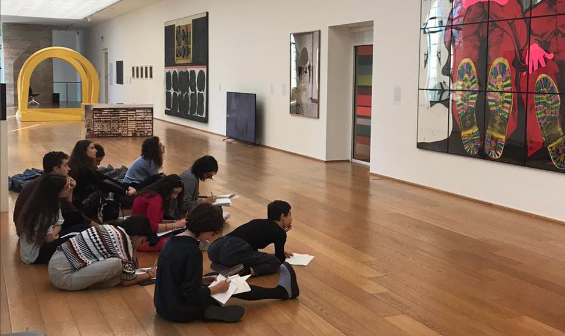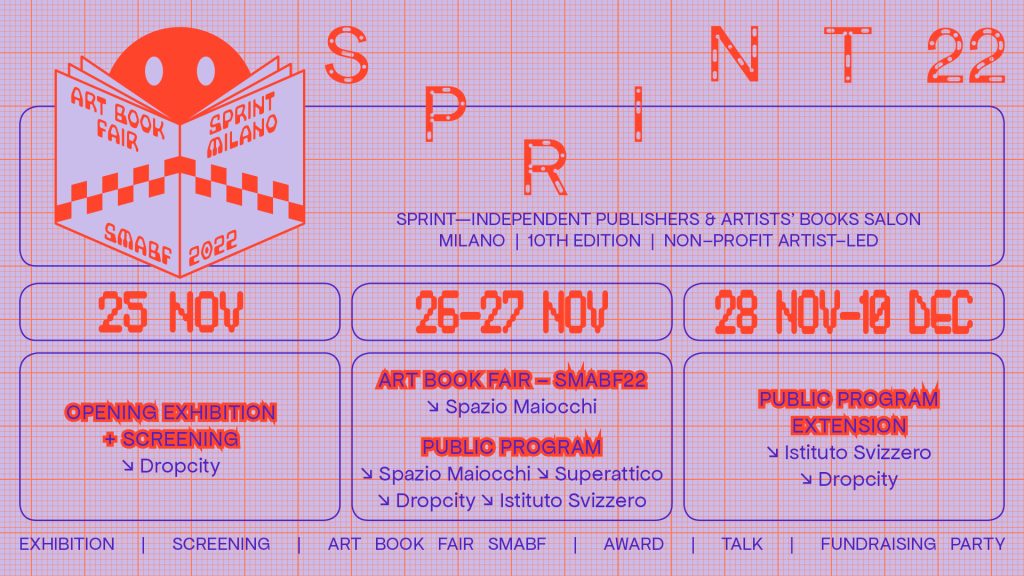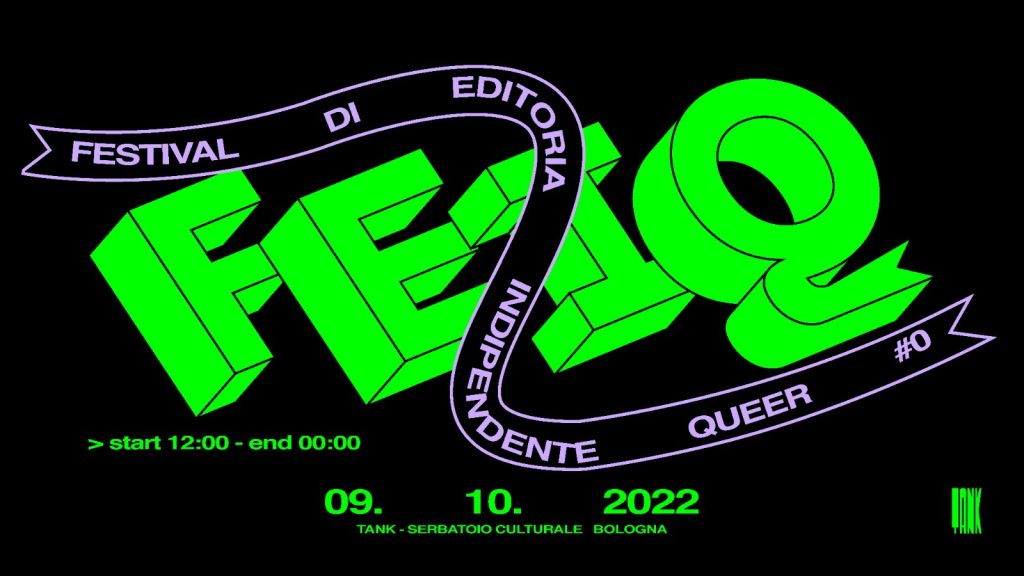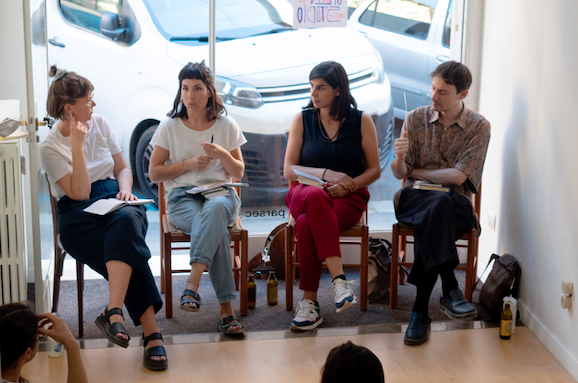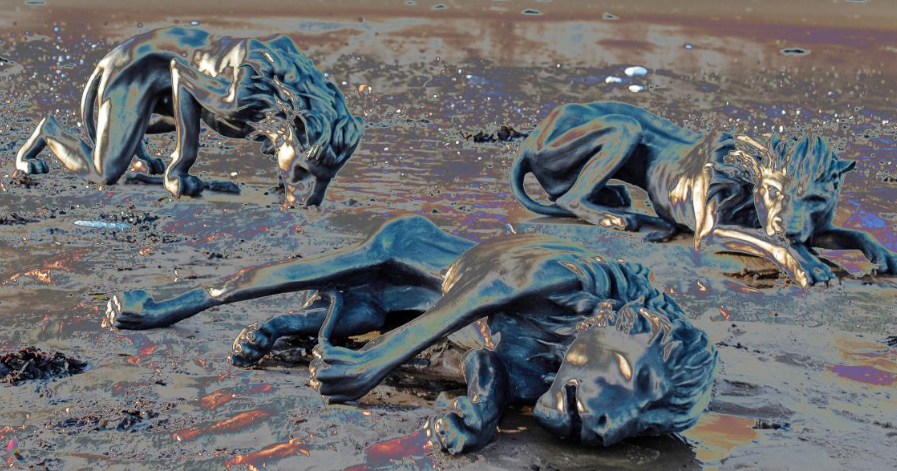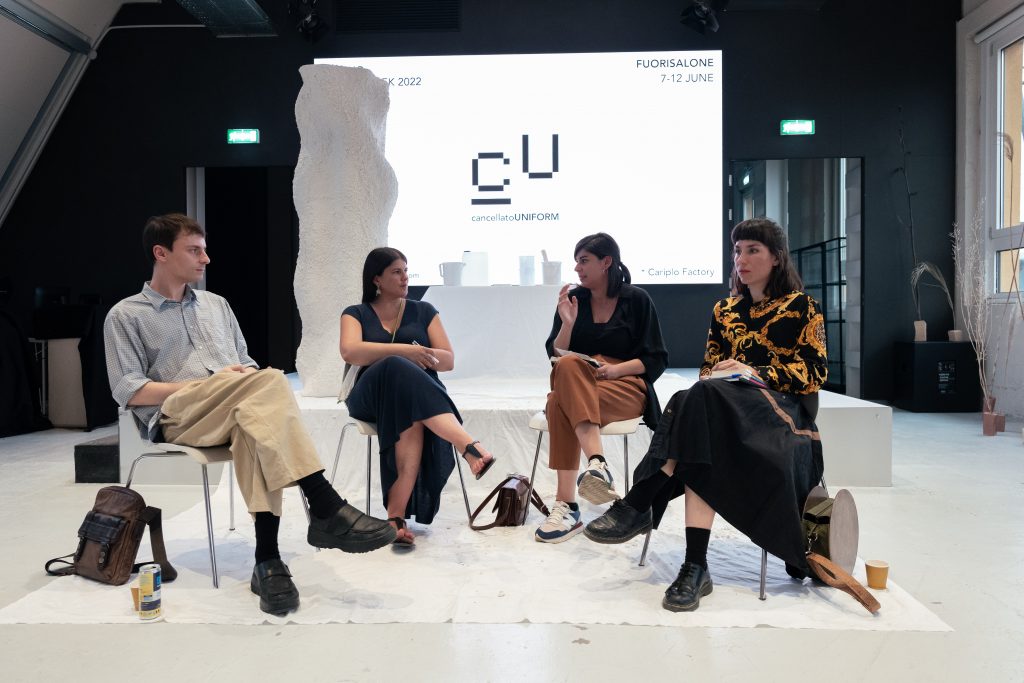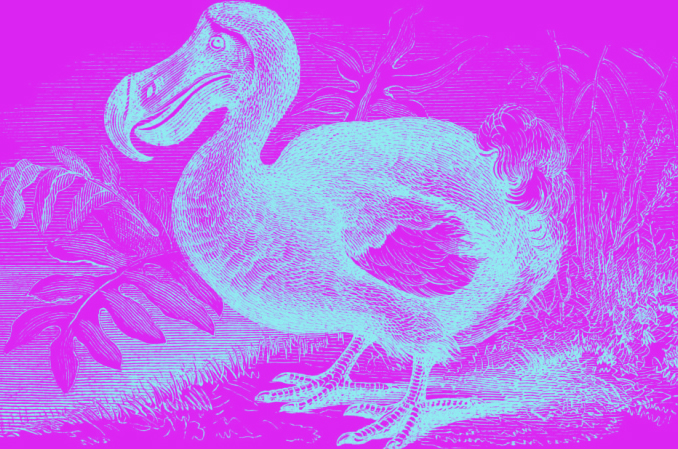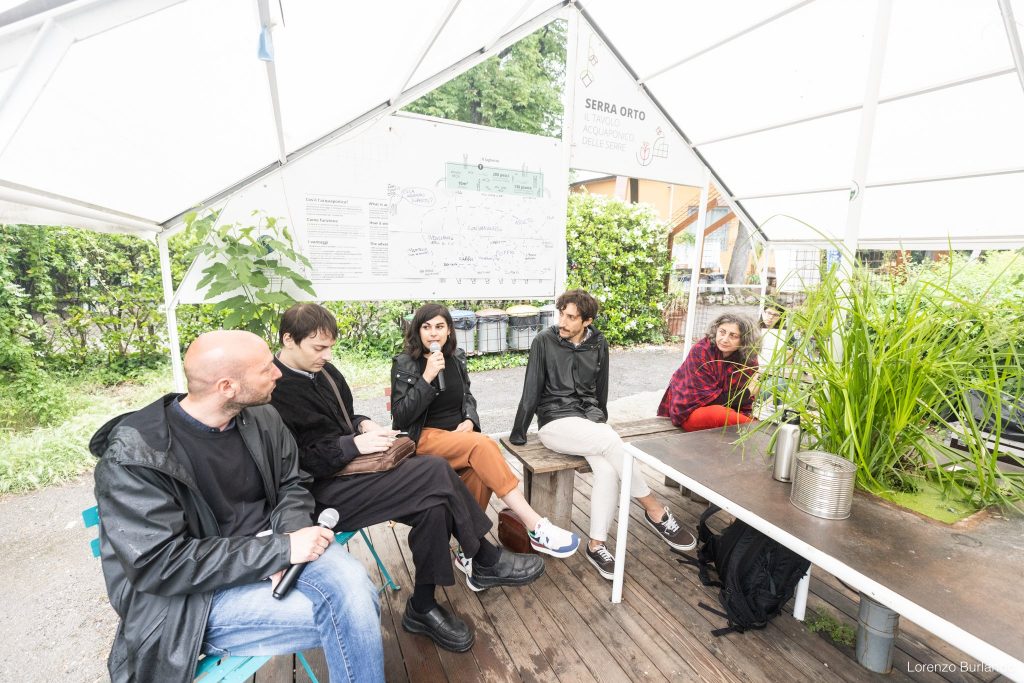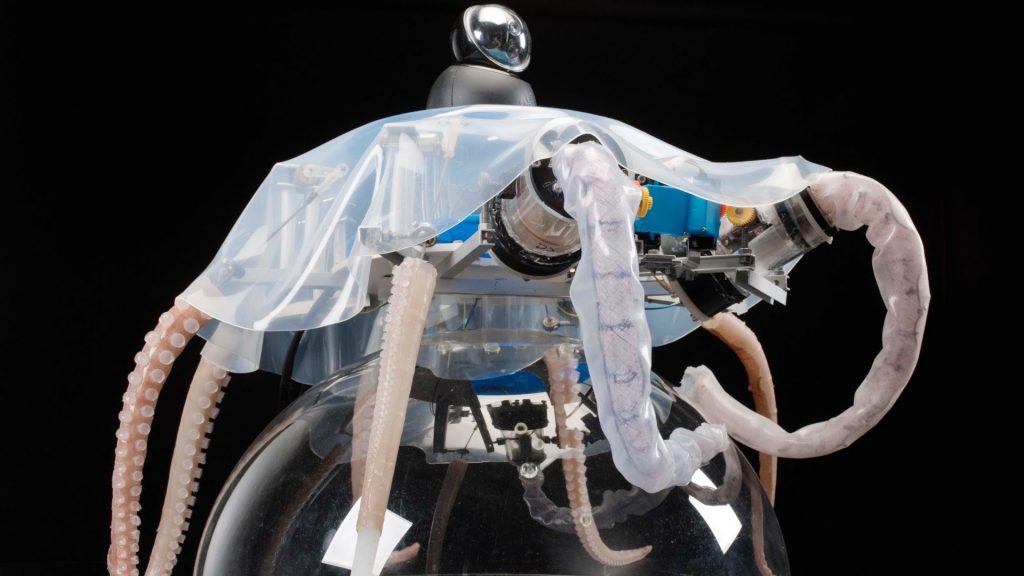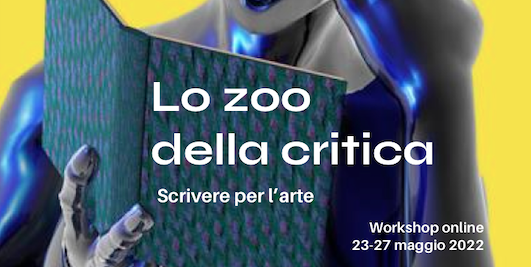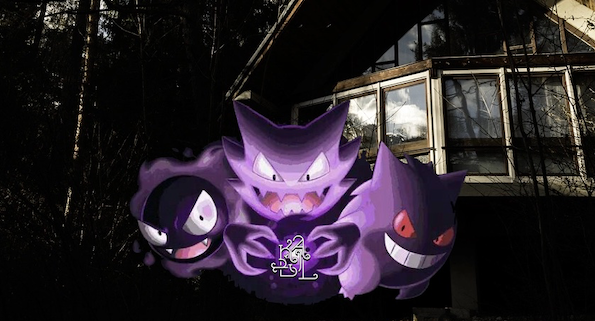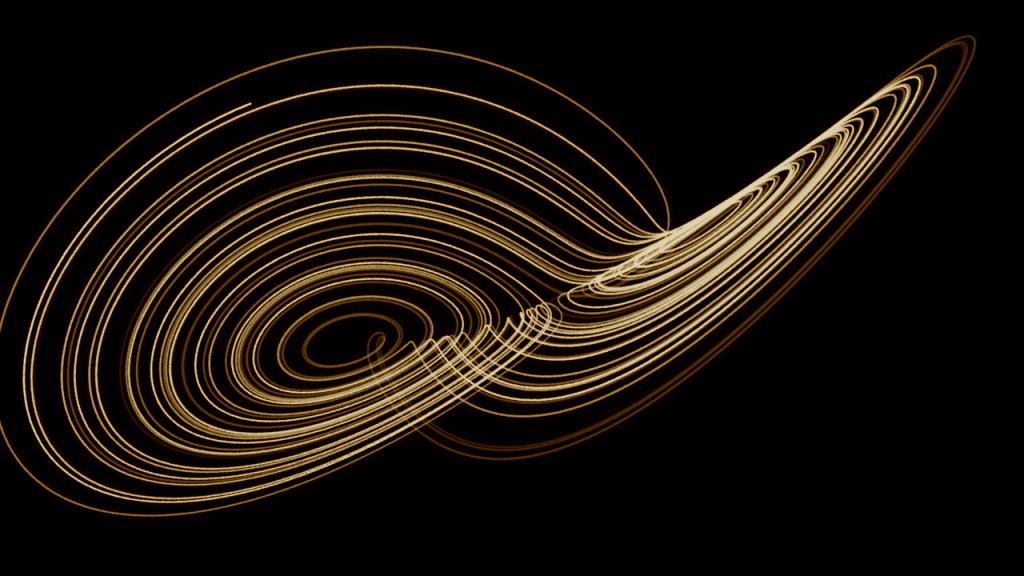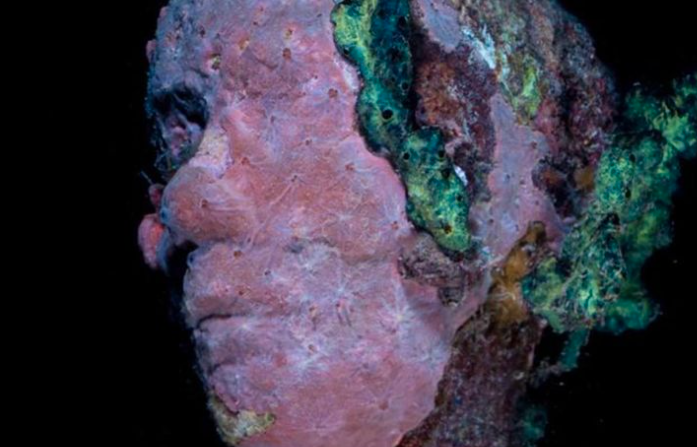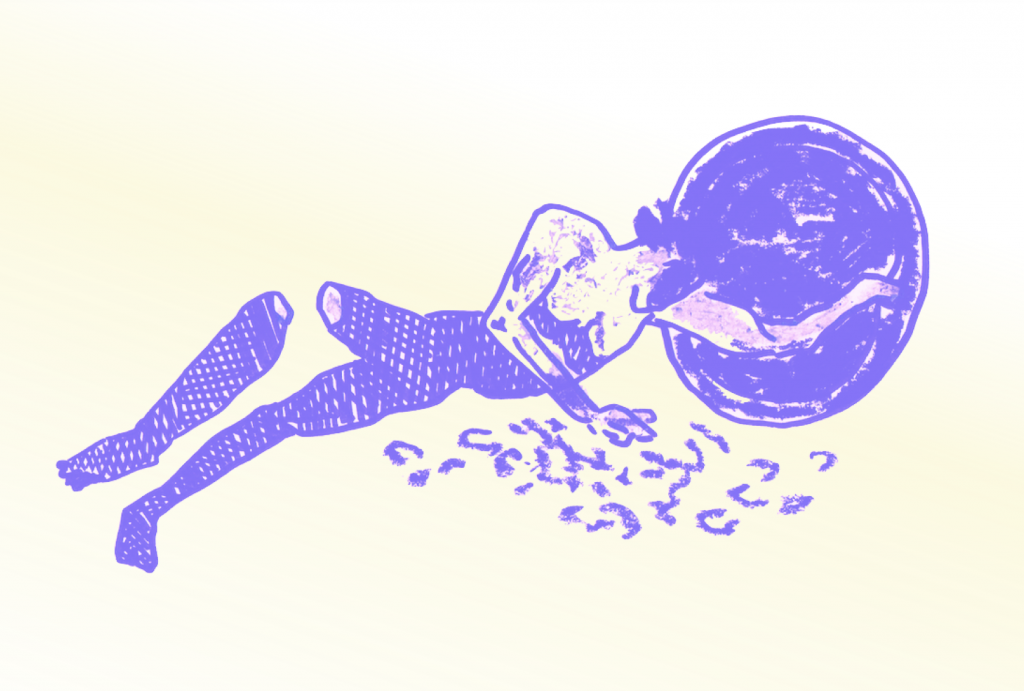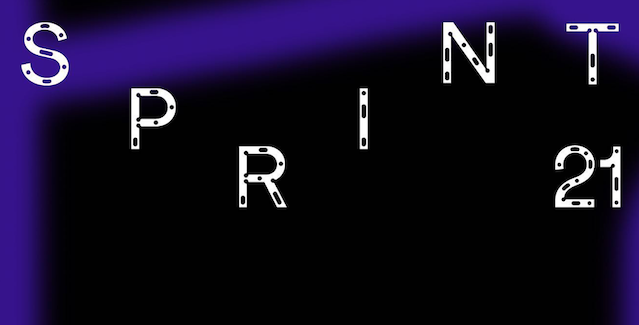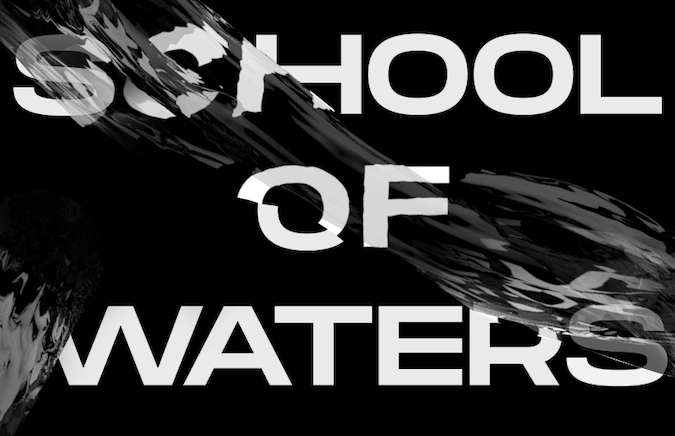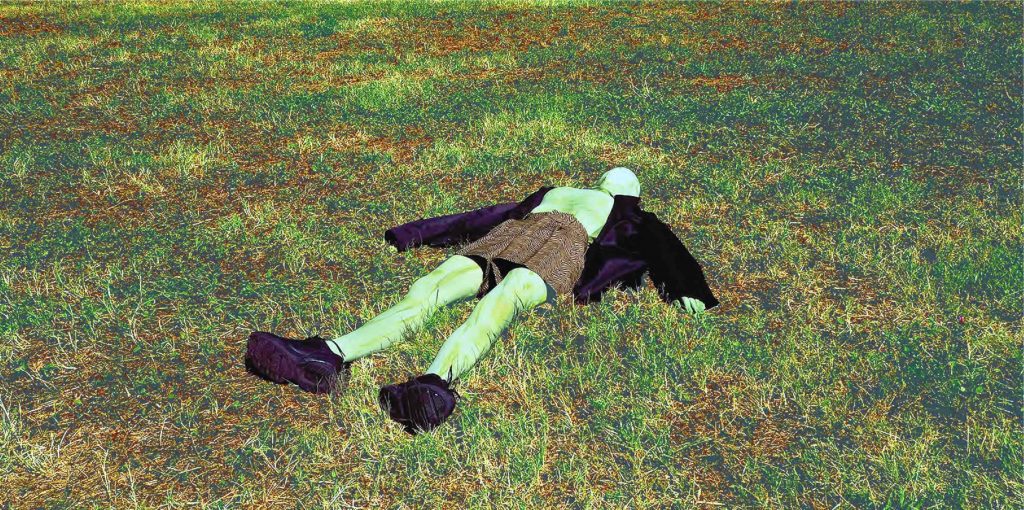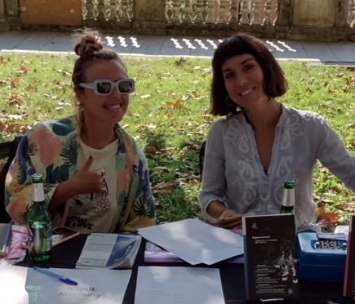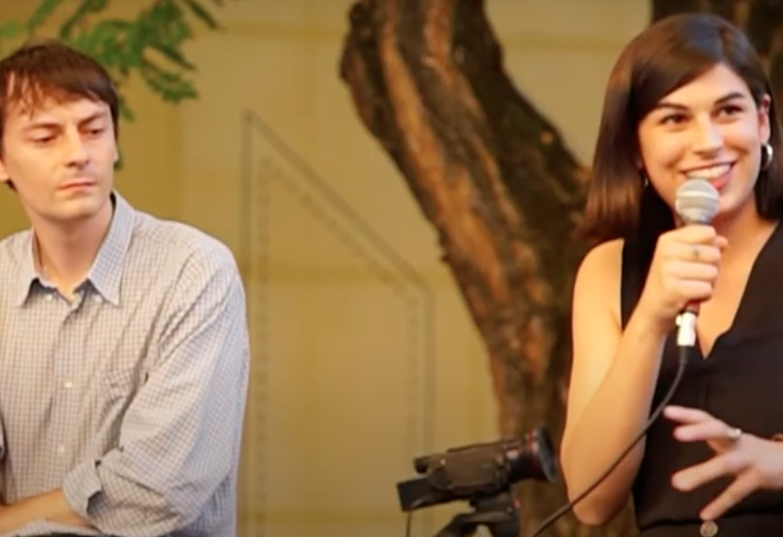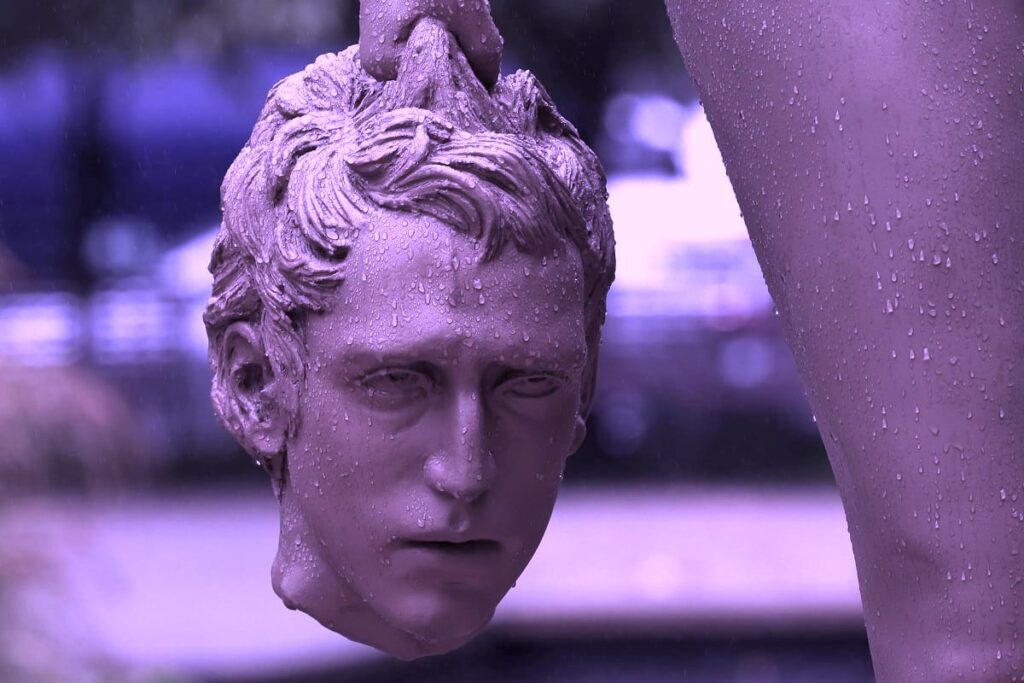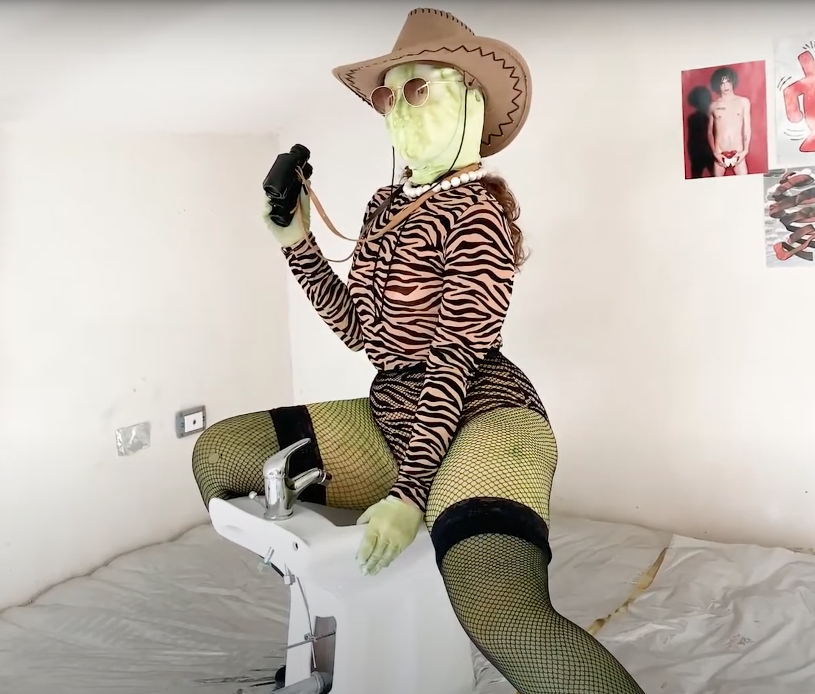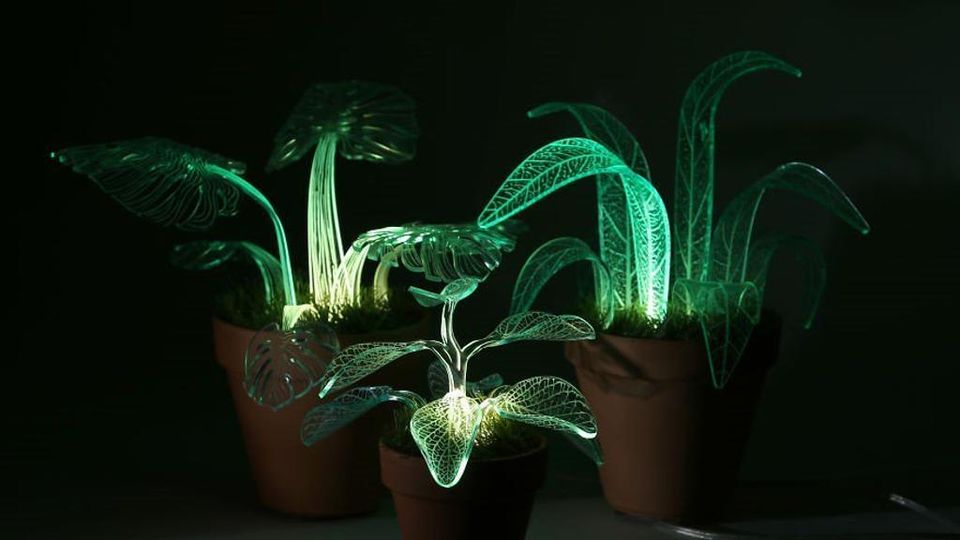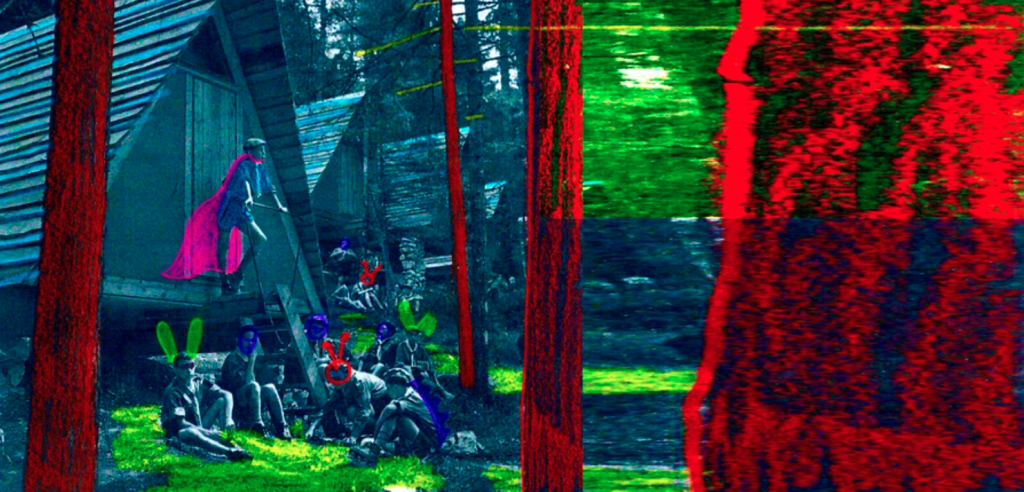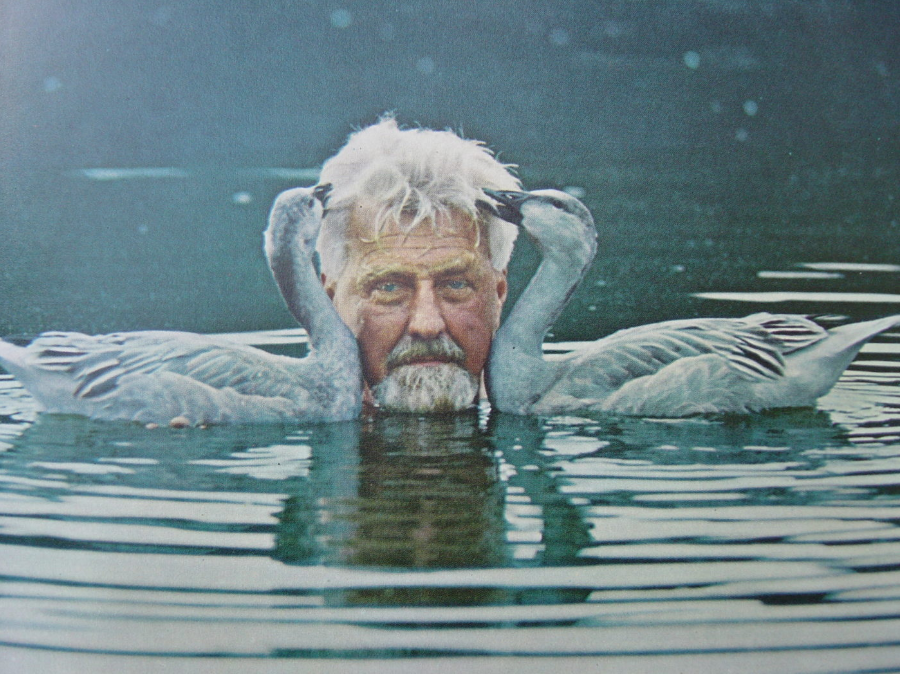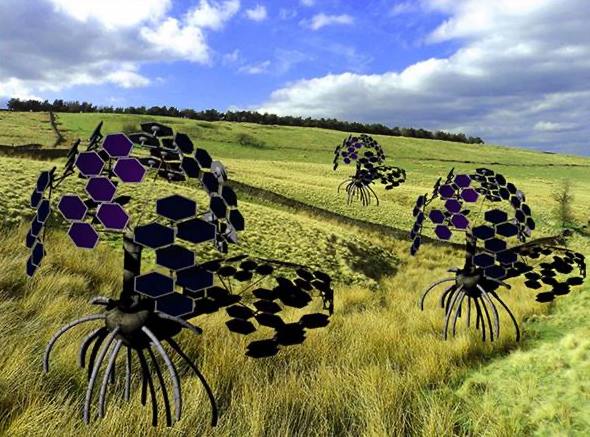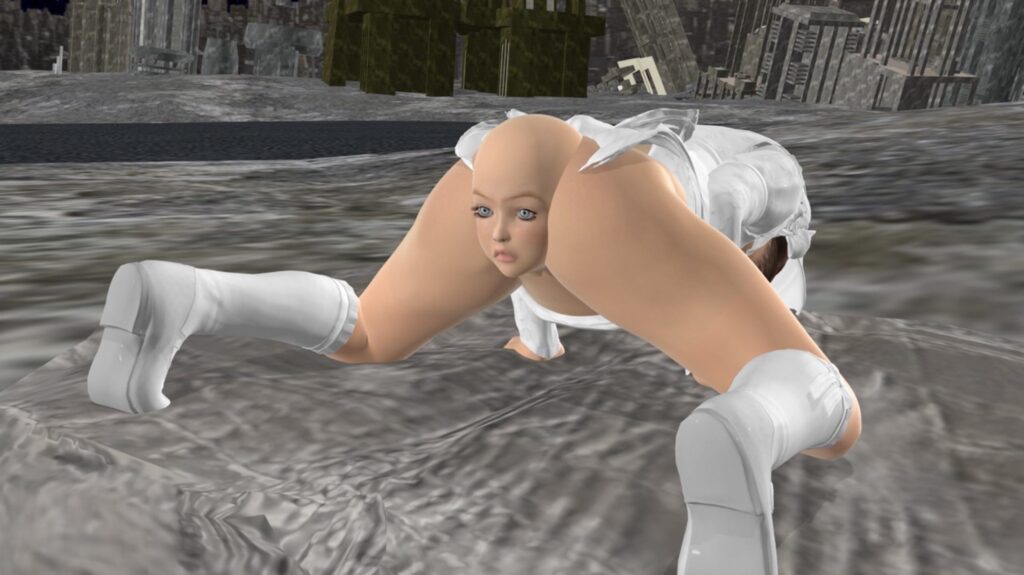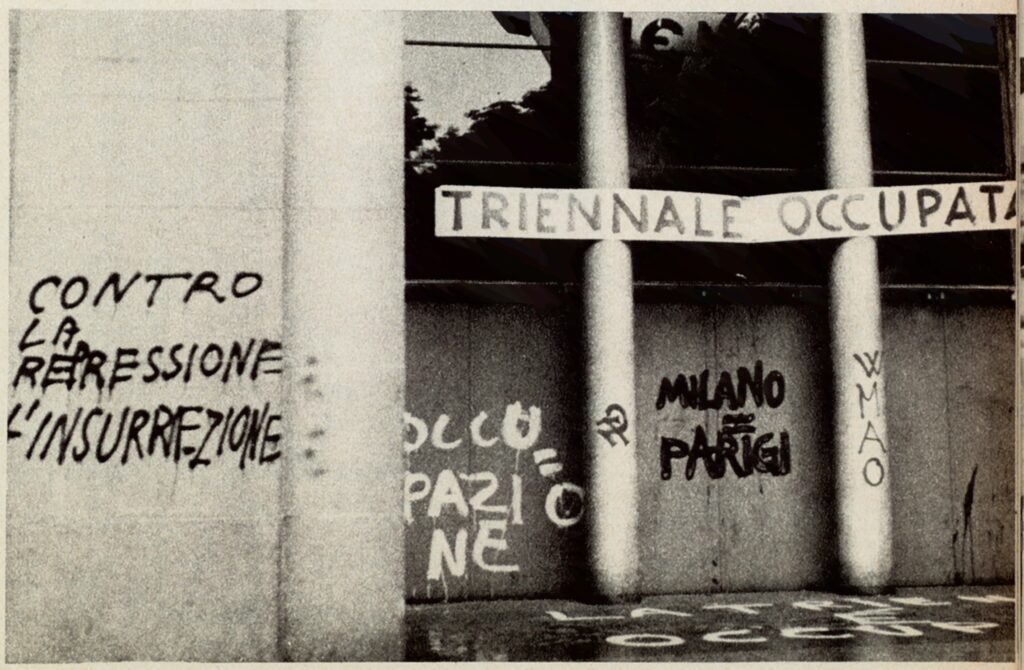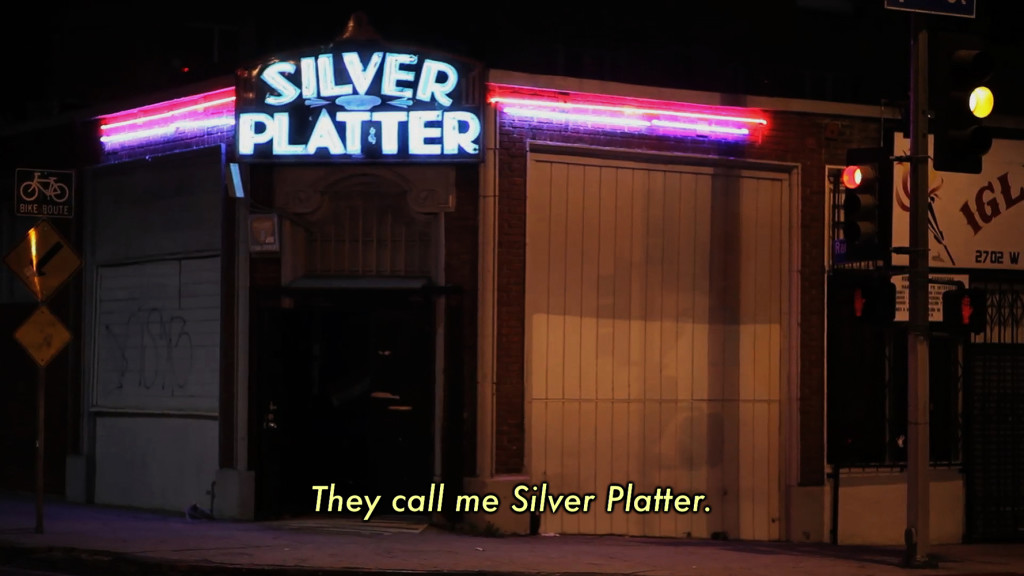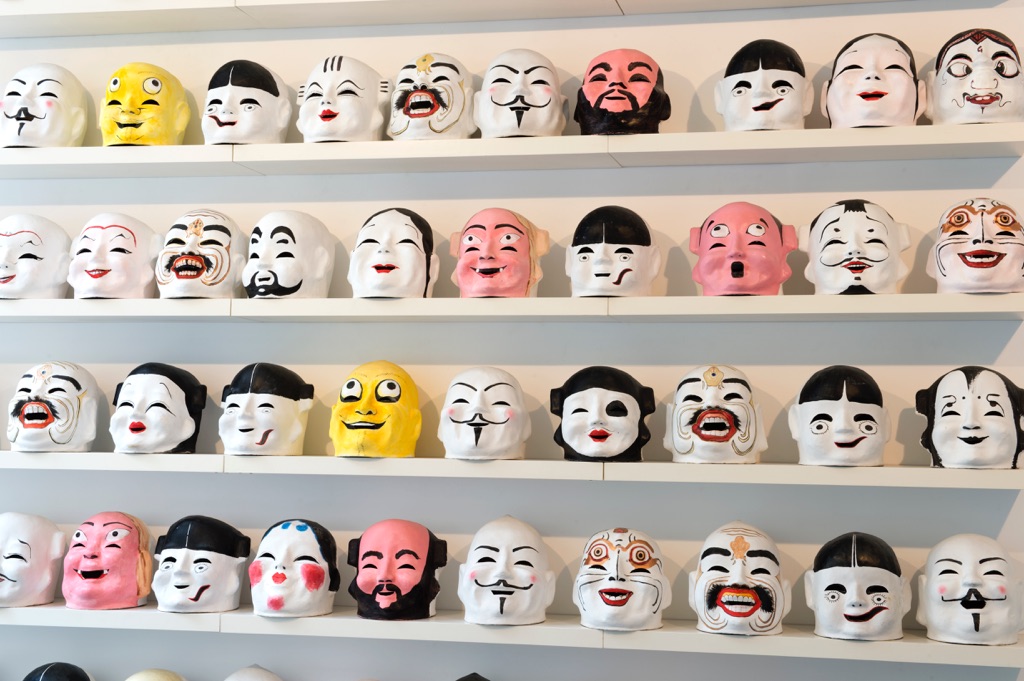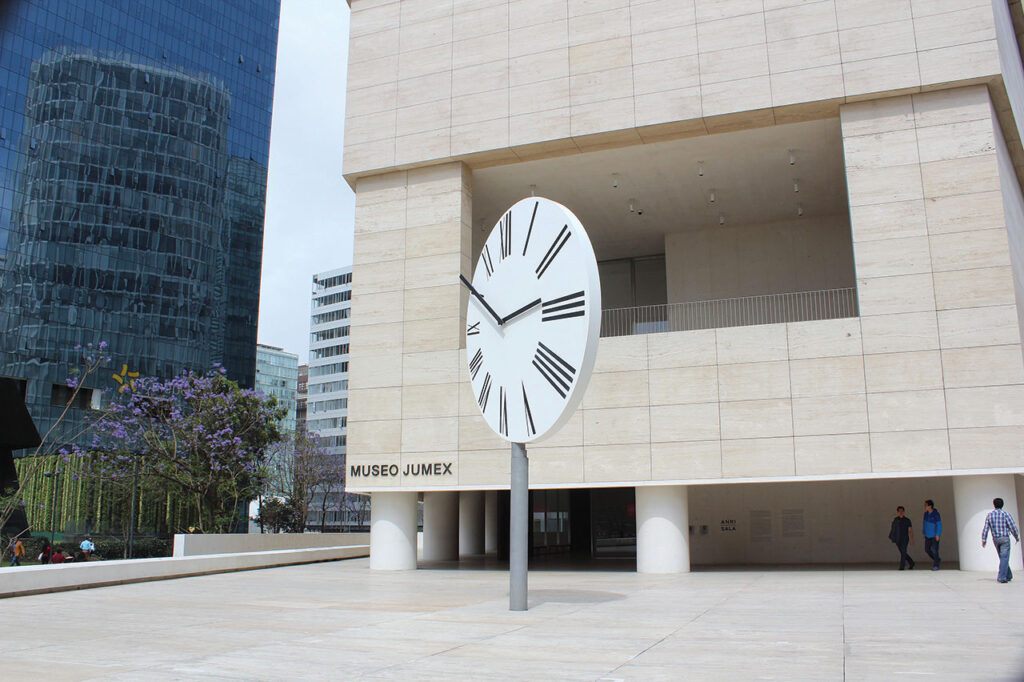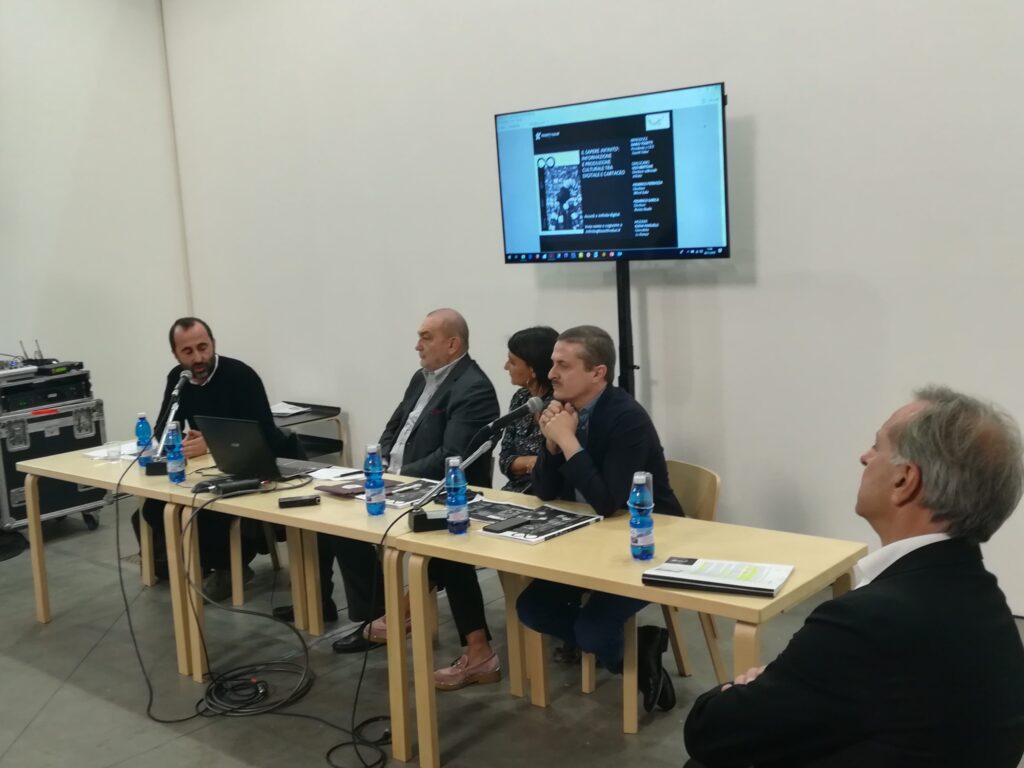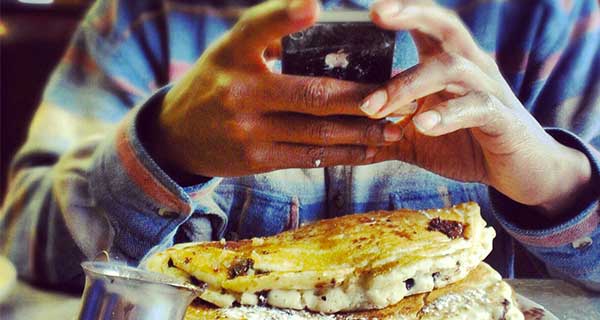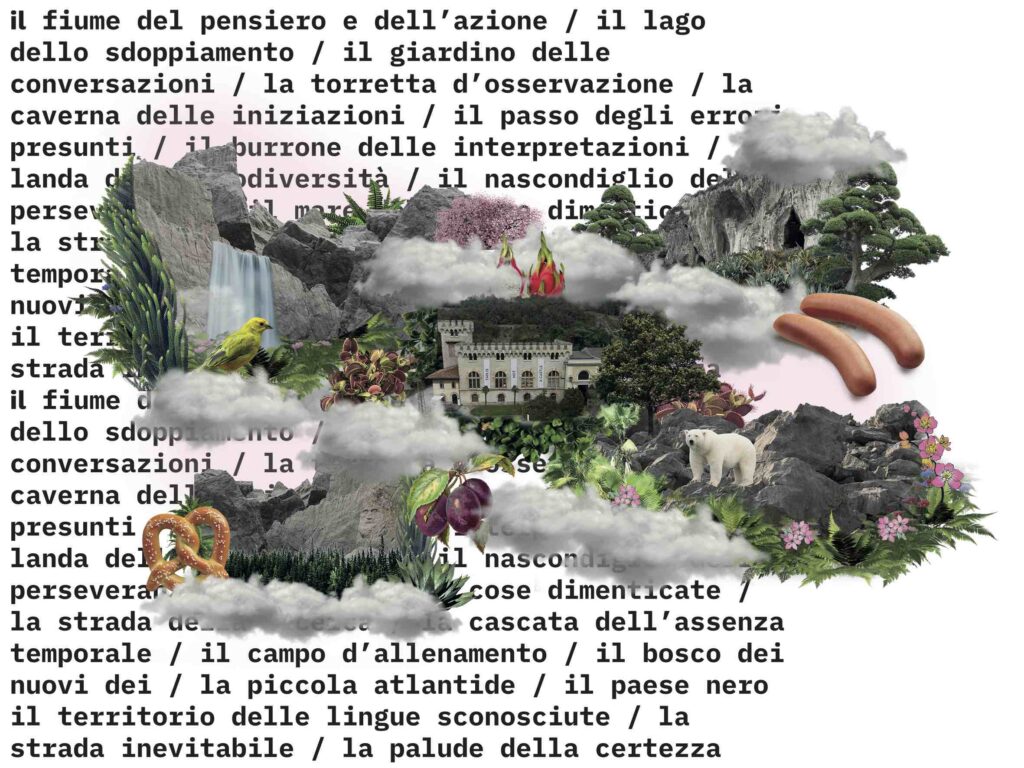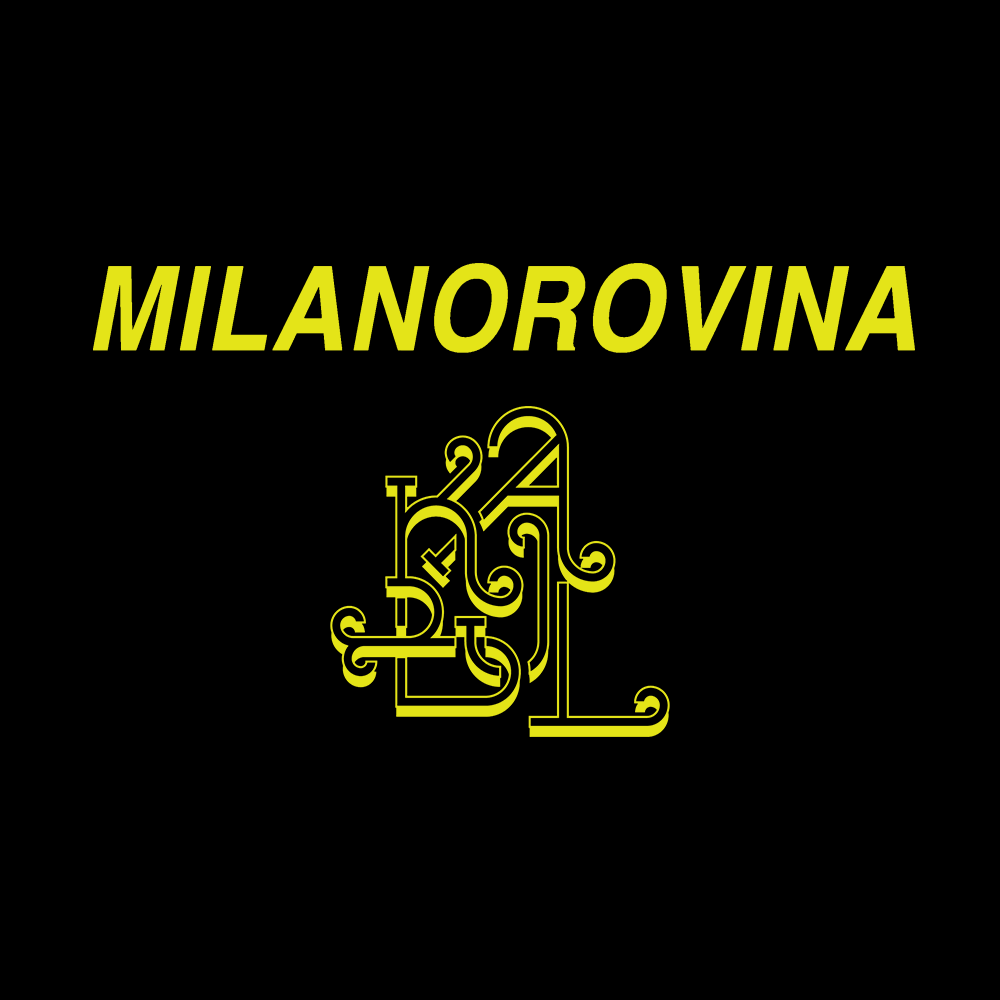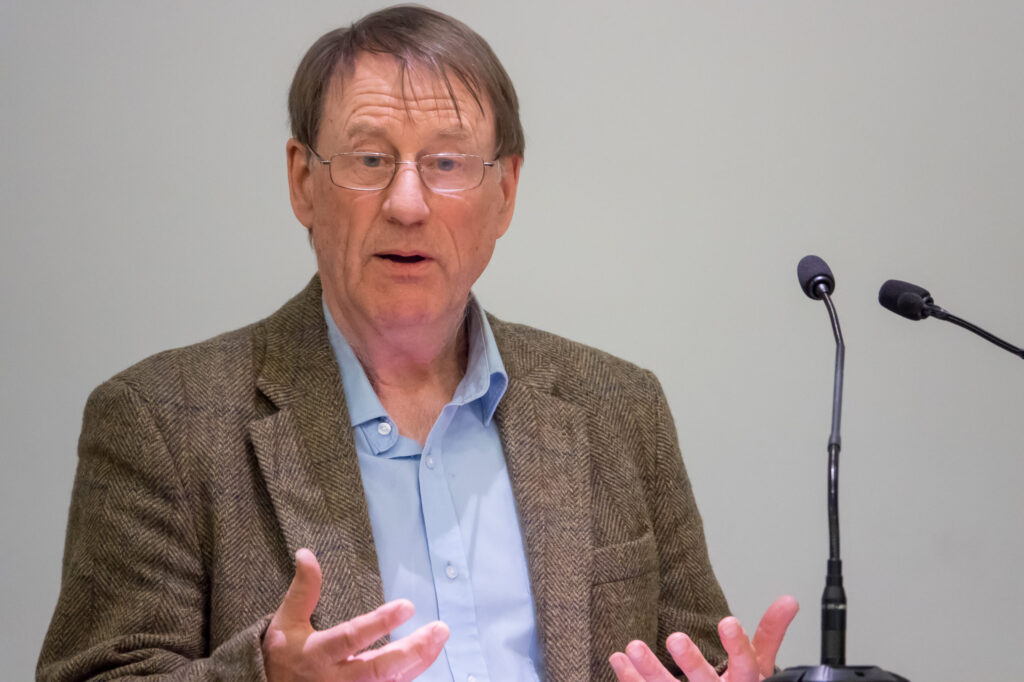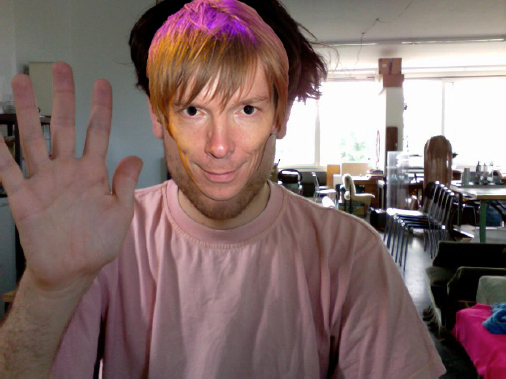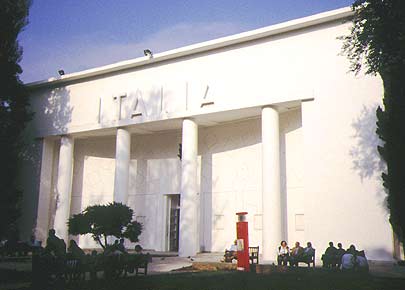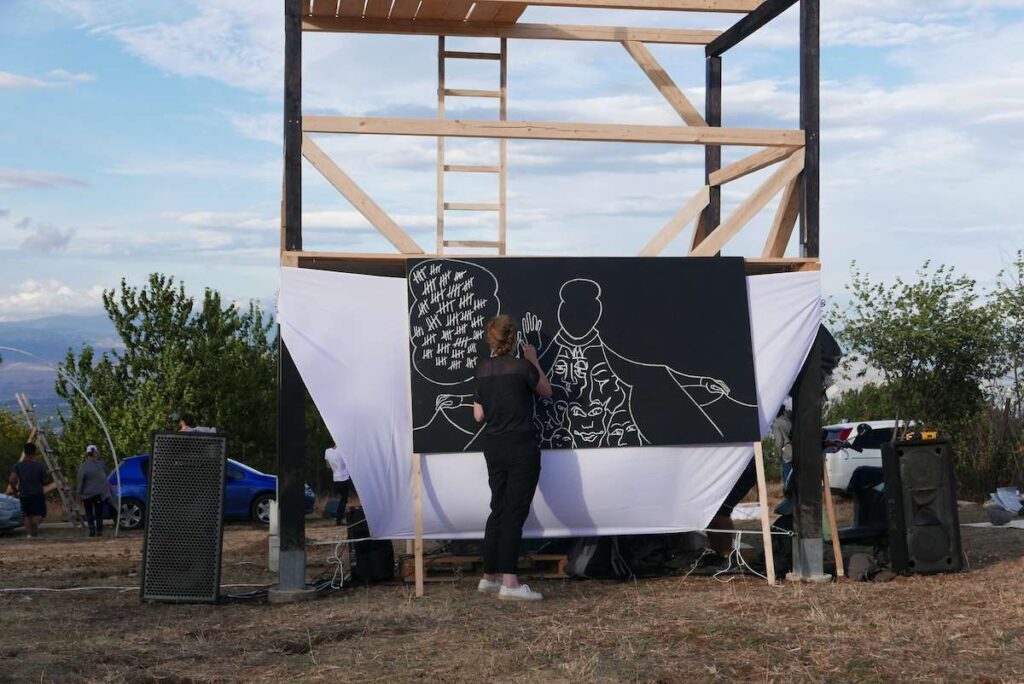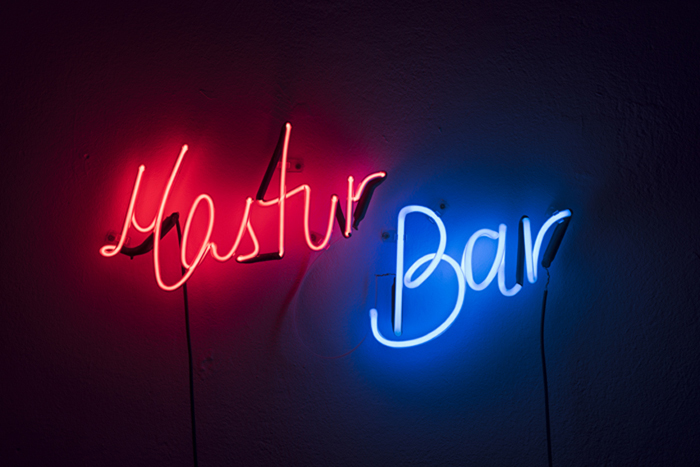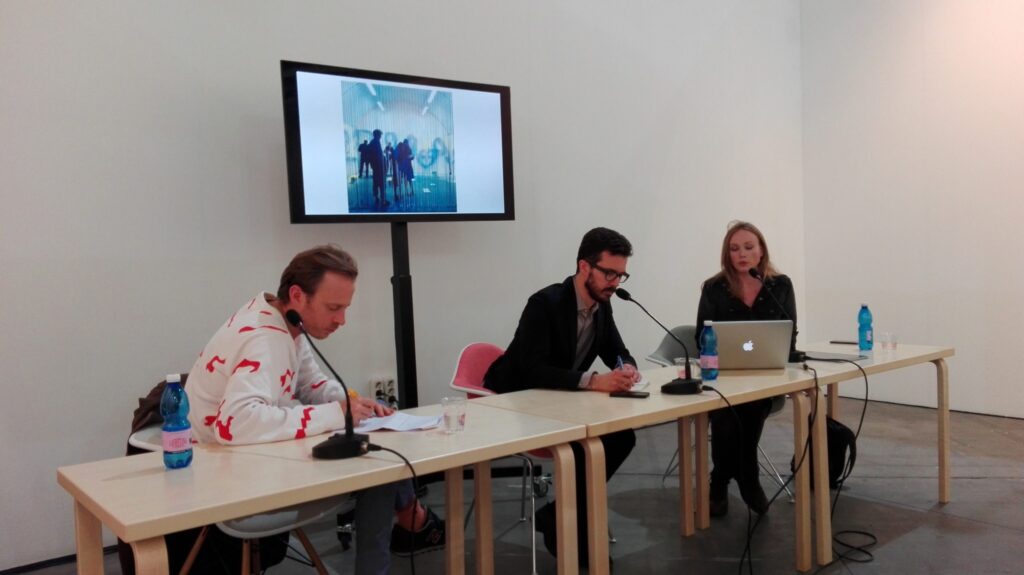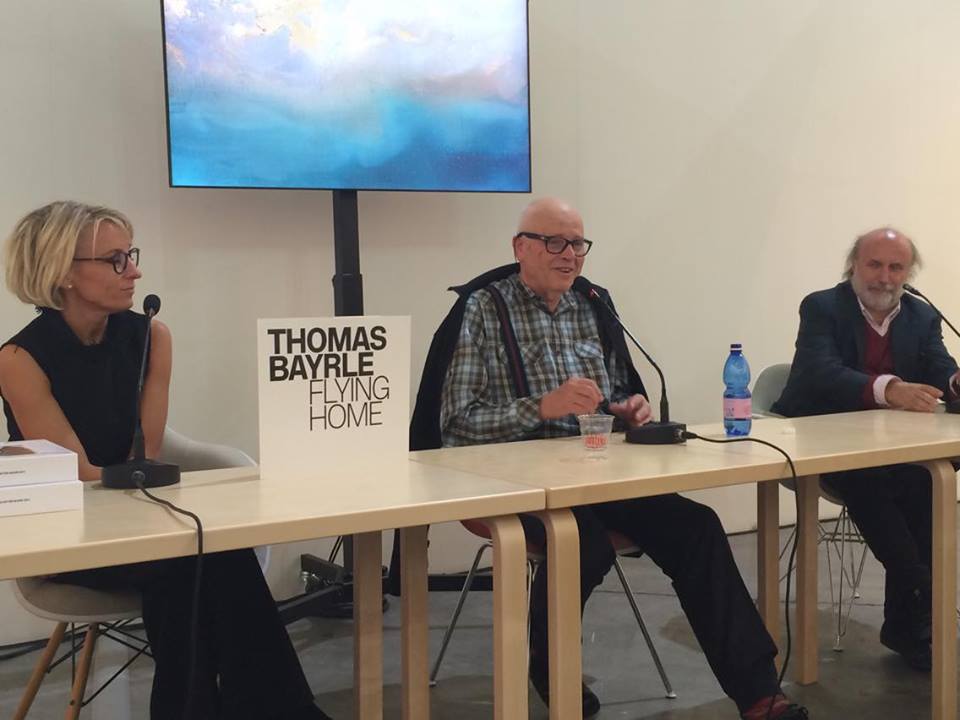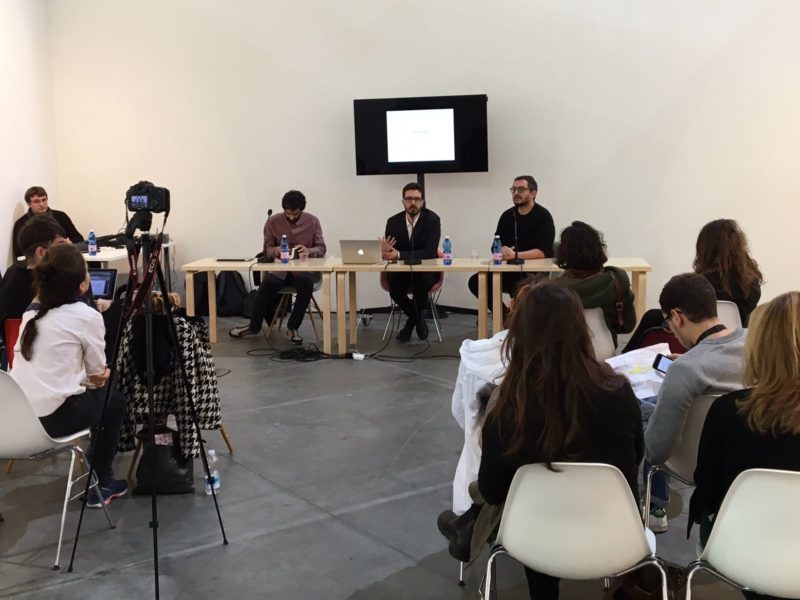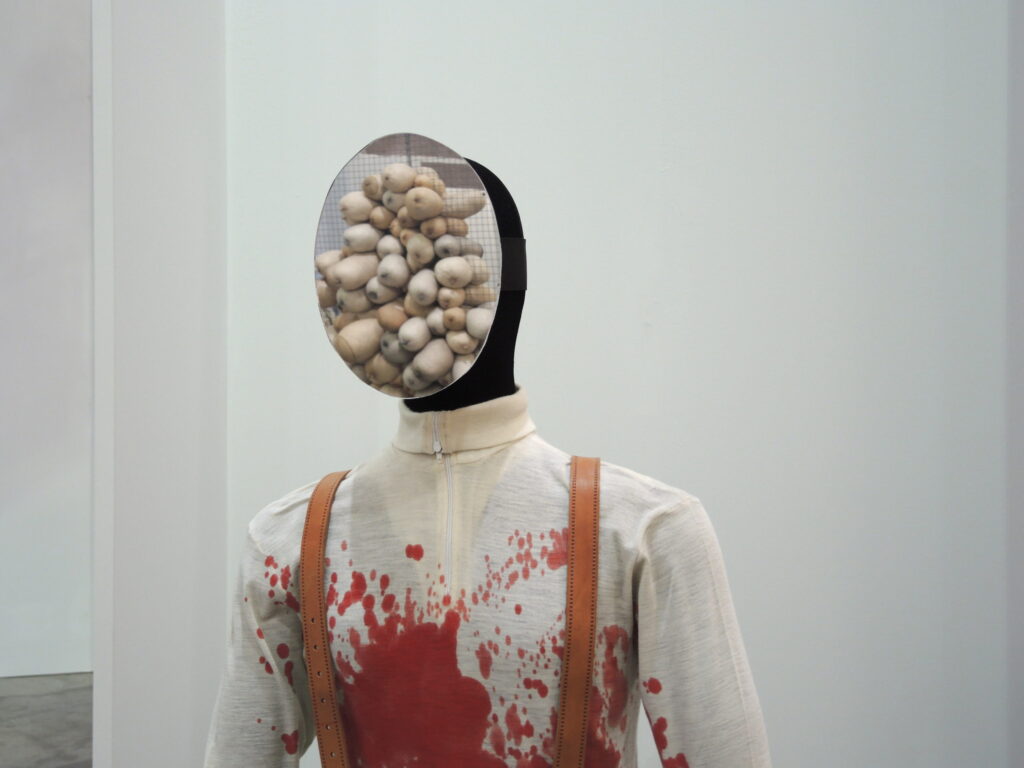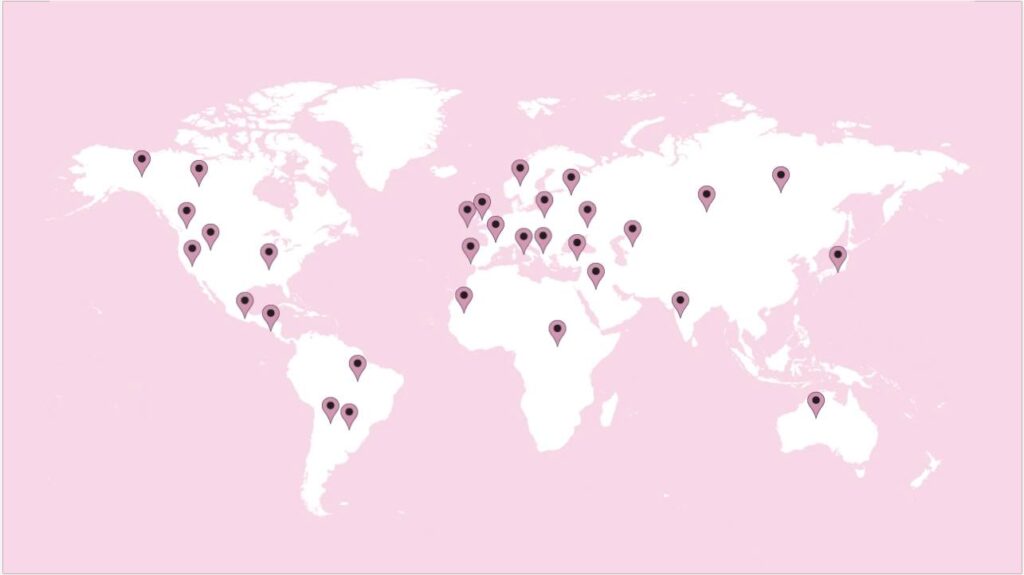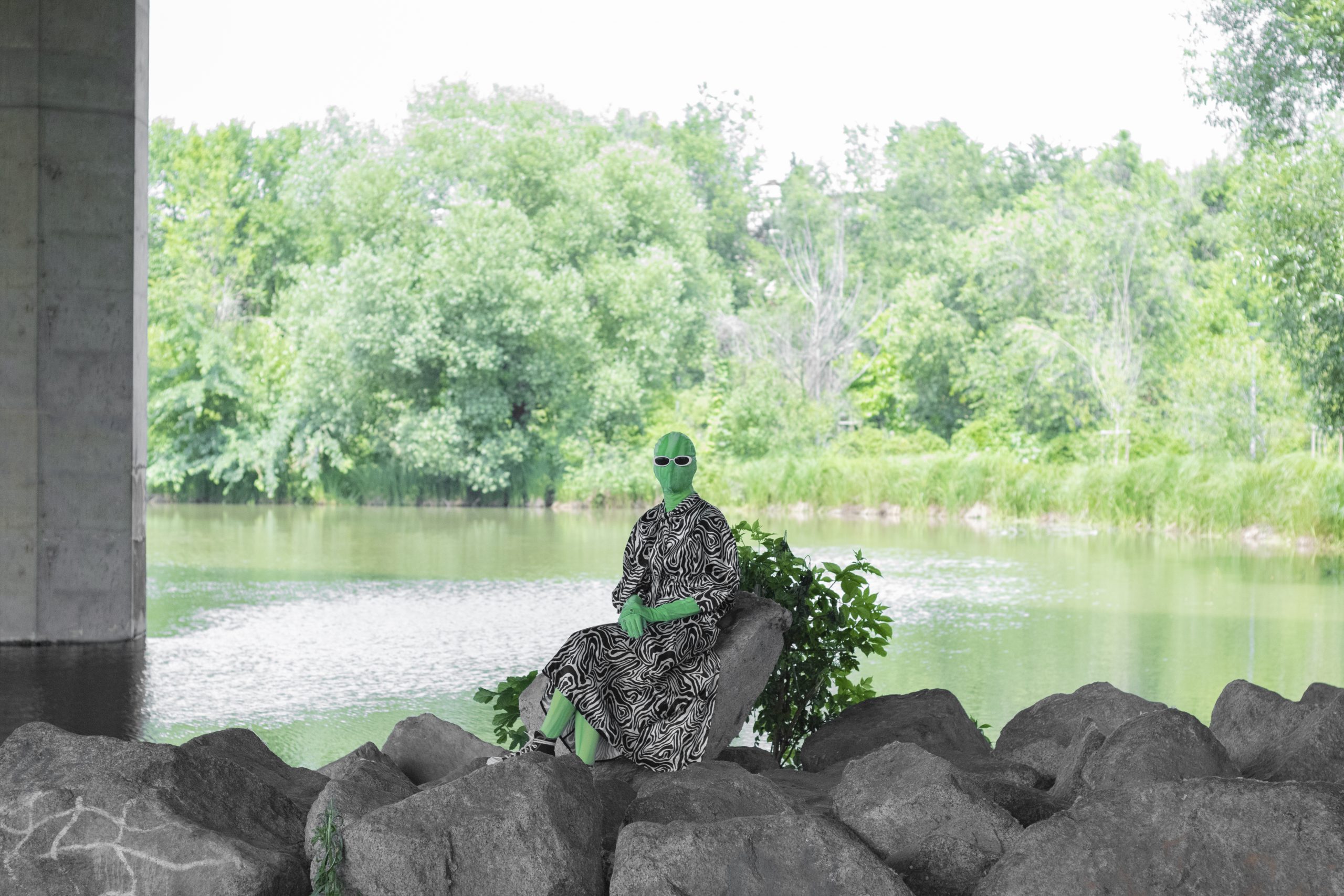 -ness, 2021, art director Rooy Charlie Lana, fotografia di Roxy Ceron Vergani, styling Giulia Zulian, marni dress supplied by Annalena Biotti, zentai design Giulia Collesei e Ernesto Molin, performer Giulia Zulian
-ness, 2021, art director Rooy Charlie Lana, fotografia di Roxy Ceron Vergani, styling Giulia Zulian, marni dress supplied by Annalena Biotti, zentai design Giulia Collesei e Ernesto Molin, performer Giulia Zulian
Premise11The following manifesto was written by Rooy Charlie Lana e Giulia Zulian, the artistic collective -ness. The realisation of the manifesto took place thanks to the support of Dario Giovanni Alì and the precious hospitality of Andrea Frosolini and Federica Di Pietrantonio of ISIT.magazine.
Transghost identity works on the complex and fascinating field of research that considers history and invention, truth and self-fiction, dissing of identification and sense of belonging. *(The) Transghost pushes the concept of identity to the limits, to the extreme effort in which the subject jointly understands coincidence and distancing from oneself. In other words, the Transghost identity leads to reflect on what it means to be and not-to-be oneself at the same time. How to deal with the Transghost identity as an object of analysis? What historical, social, artistic and cultural data are involved in the construction of the Transghost identity? With which and in which practices is Transghost recognised? Does the Transghost identification of those who write change the content of the Transghost manifesto? Our aim is to question the Transghost identity and its interpretations, its conceptual assumptions, the practices it gives rise to and from which it emerges. However, analyzing the* Transghost identity – and putting it into a system – does not entirely exhaust the different implications that it entails.
This manifesto is not Transghost as it concerns itself with the Transghost community. That ‘talk of’ may have the effect of leading to the appropriation of mechanisms that reduce Transghost subjectivities to an object. Instead, our approach has to do with our personal affinity with these ideologies. Our research, in fact, leads us to implement practices and mechanisms starting from our bodies.
We are Transghost.
We know well what are the theoretical and political assumptions of the manifesto as a literary form, including linguistic peremptority and denunciation of a status quo. However, we believe it is more appropriate to use this form in order to focus on issues so far treated as marginal, to finally give body to the invisibilised and invisible images of the patriarchal, heterocentric and colonialist society – whose struggle Transghost embodies. Let’s our bodies yield to the discomfort and pleasure of finding ourselves Transghost. Let’s allow ourselves to be crossed by Transghost and become the embodied manifesto together.
Theoretical assumptions
Michel Foucault developed a critical methodology that allows us to think of the categories with which we currently catalog sexual identities not as consequences of assumptions from Nature, but as cultural constructs endowed with a history – as dispositive of power’s products.
Foucault shows how these multiple powers derive from the laws promulgated by the State, but also from the criteria of norms elaborated by the human sciences, and even earlier contained in traditions, religions, cultural and social conventions. The code of Nature as a regulating order of bodies becomes the symptom of gender inequality and discrimination.
Queer and feminist studies carry out a fight against the normative system in which bodies are hierarchically arranged according to privileges and principles attributable to false biological and natural paradigms.
The body is built in the intersection of discourses and practices, in a perennial negotiation between inside and outside. The body becomes a real and symbolic place in which subjectivity can be produced.
The concept of truth, relating to the identity and more generally to the body, is a construct of the order of Nature that regulates and controls bodies. Nobody has the right to believe themselves totally true based on the constructs man/woman, male/female, masculine/feminine, heterosexual/homosexual, old young, white/black/yellow/red/… The truth of the body does not reside in the prescriptive categories of the patriarchal society. The truth of bodies is not the result of the difference between organs. The process of sexual, gender, ethnic and registry creation is an operation of reduction that abstracts certain parts of the body from its totality – to make them particular signifiers and connote them as the only possible truths. The roles and practices naturally attributed by the cited prescriptive codes derive from an arbitrary ensemble inscribed in the bodies that produces sovereignty and exploitation on a hierarchical scale. The body is a socially constructed text22See Preciado, “Contrasexual manifesto”. .
The concept of gender identity in relation to its performative character was inaugurated in 1988 by Judith Butler in Performative acts and gender constitution: An Essay in Phenomenology and Feminist Theory. Here Butler demonstrates how gender is not a stable identity, but it is actually constituted through performative acts, or rather a repeated series of actions.
Performative is the set of practices and discourses located in a social and cultural context, by constituting identity as a corporeal and social reality:
«Just as a script may be enacted in various ways, and just as the play requires both text and interpretation, so the gendered body acts its part in a culturally restricted corporeal space and enacts interpretations within the confines of already existing directives»33Butler, “Performative acts and gender constitution”, 529. .
Thus, performativity falls within the realm of fiction, as a scheme of action derived from prescriptive norms that can be confirmed or denied by the subjects.
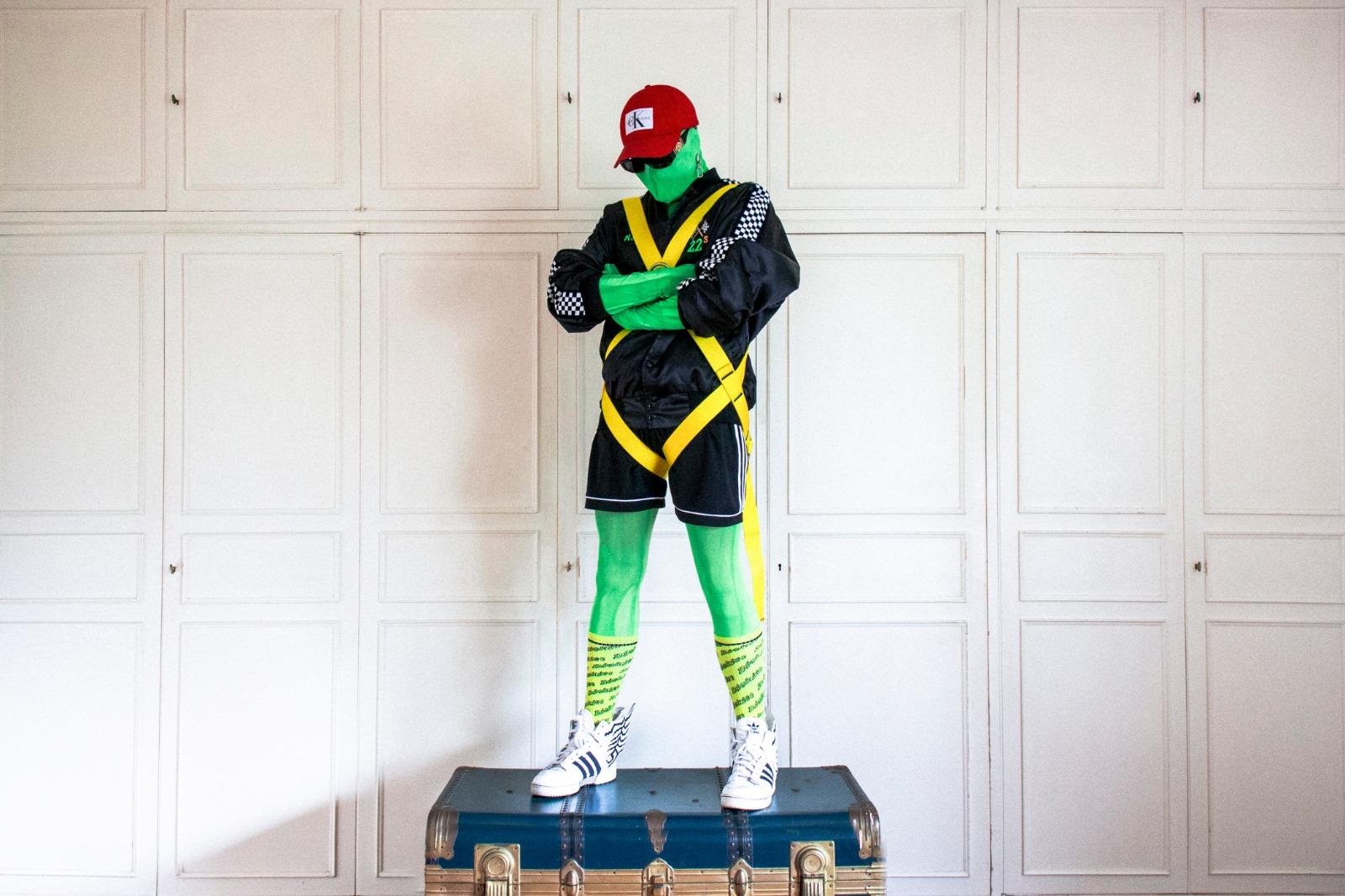 ©-ness, Transghost Manifesto, Coming Out of the Closet, starring Andrea Frosolini, Styling Giulia Zulian, Zentai designer Giulia Collesei and Ernesto Molin, photo by Rooy Charlie Lana.
©-ness, Transghost Manifesto, Coming Out of the Closet, starring Andrea Frosolini, Styling Giulia Zulian, Zentai designer Giulia Collesei and Ernesto Molin, photo by Rooy Charlie Lana.
Who is Transghost
Transghost is a crossing-temporary identity. The word is made up of two parts: “trans” is used an inclusive term encompassing a wide range of gender norm violations that involve some discountinuity between one’s sex assigned at birth to her or his gender identity and/or expression44Koyama, “The transfeminist manifesto”. . The Latin prefix trans- indicates a “passage beyond a term”, a “crossing”, a “change from one condition to another”, while in Transghost it refers to a visible or invisible passage from one body state to another. This change is not unique, univocal, irreversible and irremediable. The variations in Transghost enact a modification of the perception of the self and of society.
The term “ghost” indicates the matter through which physical bodies become metaphysical. Phantasms do not extend organisms into the imaginary; they topologize the materiality of the body55Foucault,“Theatrum Philosophicum”, 887. . This phantasmal dimension frees the body from the true-false dilemma, to be – not to be, to implement a playful practice of the body’s fiction – which is constituted as equally true with respect to the physical body.
Our most recognizable trait is the zentai
Transghost falls within queer theories and practices, as well as in the transversality and plurality of discourses that are activated starting from the body as a privileged space for the inscription of our identity.
As Transghost, we exercise our action on power relations, in order to subvert any hierarchy of domination on the basis of sex, gender, ethnicity and age; we produce resistance to the total understanding of the self and the other, by avoiding a process of codification and identity recognition in prescriptive categories. In this sense, with some degree of awareness, any person can be Transghost.
Our most recognizable trait is the zentai, a full-length, tight-fitting suit that we use as an epidermal surface to hide our distinctive features, such as face and skin colour66Originally, a black zentai was used by puppeteers in the traditional Japanese theater of Bunraku – to blend in with the black backdrop. The same technique is also used in cinema for the creation of special effects in chroma key or digital reworking. A further use of the zentai, outside the artistic context, occurs in the BDSM practices of the fetish subculture. . Following the principles of BDSM practices, we use the zentai as a real “second skin” that allows us to present ourselves as an anonymous subject – and not as invisibilised.
Above the zentai, we put on additional clothes and accessories. The choice of each outfit conscientiously occurs according to criteria that reflect and clash with some mechanisms of everyday dressing, and that analyse the processes and principles of fashion. As Transghost, we do not intend to follow a seasonal trend, or to wear clothes from expensive collections, but we ask ourselves about the paradigms that lead a garment to be a fashion object – wondering what, how and why we wear a dress and what it means to wear it in a particular context. Being Transghost, however, is not just about how you wear particular clothes. Yet there are conditions not easily recognisable that produce Transghost’s knowledge and practices within our body level.
Transghost crosses the body of each individual through the identity’s fictional performativity. Hence, it should be understood how the use of the zentai is only one of the possible fictional practices."...Transghost crosses the body of each individual through the identity’s fictional performativity. Hence, it should be understood how the use of the zentai is only one of the possible fictional practices."
Transghost takes on the semantic rehabilitation of the concept of “surface”, socially and traditionally affected by prejudice that prefers and values interiority and depth as data of greater importance. This a prejudice that ends up generating a deeper reality of our human experience, in which the part seen as most true of the subject can be retraced. On the contrary, as Transghost we reject the idea that there is a hidden reality, a complex background in which the uniqueness of the subject resides: «that which is the most profound in the human being is the skin [and] … we borrow down in vain […] we are ectoderm»77Valéry, “L’idée fixe”, 6-7. .
Our body awareness also implies a reflection on its incorporeal functions (spoken language, memory, dreaming, thinking), on the functions independent of the will of the subject (I did not choose my body / I do not have the will to decide whether to make my heart beat) and on the variance of the body (the body is always different from itself because of the time passing).
The concepts described in Transghost participate in the definition of “superstition”: it refers to the part of the body that tends towards the immaterial. The word is a compound of the Latin terms super– and stitio, or “that which is above”, without necessarily implying a hierarchical structure of the body between inside/outside or above/below, nor the large tradition of supernatural beliefs or ritual practices related to mystery cults.
In Transghost, the meaning of superstition proceeds in an identical way to the concept of surface and brings with it all the incorporeal apparatuses of the body. Thought, memory, dream and involuntary functions are not produced by the distinction between body and mind, they are not terms that mean an unexplored and deep interiority, they are not prediscursive or substitutes for the body; they are rather a body understood as an intangible surface.
As Transghost we do not generate Majoritarian Subjects or Super-Beings – but we produce opacity through the awareness of not being able to totally know ourselves and others88Transghost assumes the term of “opacity” theorized by Glissant (Poetics of Relation, 1990). . By “opacity” we mean the process of understanding that aims at the awareness of not being able to be reduced to a unicum. “Understanding” means relating the difference between others and me without generating hierarchies of values.
How can one be Transghost
Starting from the biological and biographical data of each individual, the Transghost identity passes through the body in two main ways:
- Esoteric:
by implementing a change in the body that is recognisable to the gaze;
by acting according to schemes outside the normative system;
by making society perceiving how Transghost acts.
- Exoteric:
by implementing a change in the body that is not always recognizable to the eye;
by understanding and criticising the flaws in the dominant normative system;
by not making society perceiving how Transghost acts.
For instance, the use of the zentai is recognised as an esoteric Transghost practice, whereas practices in which the zentai is not used could instead be traced back to Transghost exoterism.
Transghost is a way of exercising the body to the practices of identity’ dissolution as a fixed and immobile category. Transghost is a way of exercising a minoration of the apparatuses of Nature to claim the totality of the body and its discursive practices outside the hierarchies of domination."...Transghost is a way of exercising the body to the practices of identity’ dissolution as a fixed and immobile category. Transghost is a way of exercising a minoration of the apparatuses of Nature to claim the totality of the body and its discursive practices outside the hierarchies of domination."
The reasons why we recognize ourselves as Transghost can be many; some of them have to do with the discomfort of sticking to social and cultural conventions, including:
- having to meet aesthetic standards of beauty;
- having to act according to structures that do not correspond to our will;
- having to present yourself in incredible self-narratives to satisfy the expectations of others;
- having to constantly hide important truths of our body and identity;
- having to be clear and transparent to the society’s gaze, denying one’s own complexity and understanding;
- having to know exactly who I am / we are.
The principles of the Transghost identity are:
- not to understand the biological body (as a dispositive of sex, gender, ethnicity) and personal data as the only possible truths on a political and social level;
- to get rid of anatomical reality as the truth that defines bodies in an absolute way;
- to suspend the biographical data, declaring ourselves temporarily without any personal name. In fact, Transghost becomes the only name of identification and recognition;
- to perform outside the system that subjects and differentiates bodies on the basis of the privilege posed by the idea of Nature;
- to take pleasure through practices outside the reproductive and heteronormal system;
- to implement self-fiction processes in the body as a tool of liberation.
Transghost operational intentions
Everyone has the right to define their identity in a way that is free from prescriptive constraints of a social and cultural nature. Freedom in defining one’s identity is applied through the renunciation of a fixed and naturally determined sexual identity. The individual renounces the benefits and privileges that could derive from the naturalisation of the practices and actions they perform. Each individual should recognize themself outside the domain of gender, sex, ethnicity, age. In this sense, Transghost is the version of the body free from determined social and cultural patterns. Transghost performs and produces reality through the tools of fiction.
The performativity/performative of each individual takes place in a constant barter between the biological component of the body, personal data, pre-existing social and cultural dynamics and the consequent processes of fiction of the ego, such as “self-fiction”.
Self-fiction is invention and reinvention of ourselves, in a constant self-attack and questioning of the reliability of our memory. Out of the literary context, self-fiction becomes a useful tool in the process of freeing the body from prescriptive conditioning.
For us it is not important to understand if the story and the narration of ourselves and our body are in a relationship of truth; as Transghost we believe in the possibility that this relationship frees the body from forced social and cultural constructs.
The plurality of discourses that are activated starting from the declination of the identity fiction expands in the relationship with social media and digital gaming communities. However, a distinction must be made between Catfish, Avatar and Transghost. Within us the relationship of fiction always takes place in the body’s materiality; it is implemented in the onlife plan and can also take shape online.
Therefore, assuming that identity is a human component that plays on the threshold between reality and fiction of the body’s signifiers and significances, the political and aesthetic theories of bodies must be incorporated into an experimentation field that sees fiction as the possibility of the body’s liberation.
In this sense, the performative theories linked to the art scene help us to understand the body in its presence – always materially, spatially and temporally situated in continuous relationship between ourselves and others.
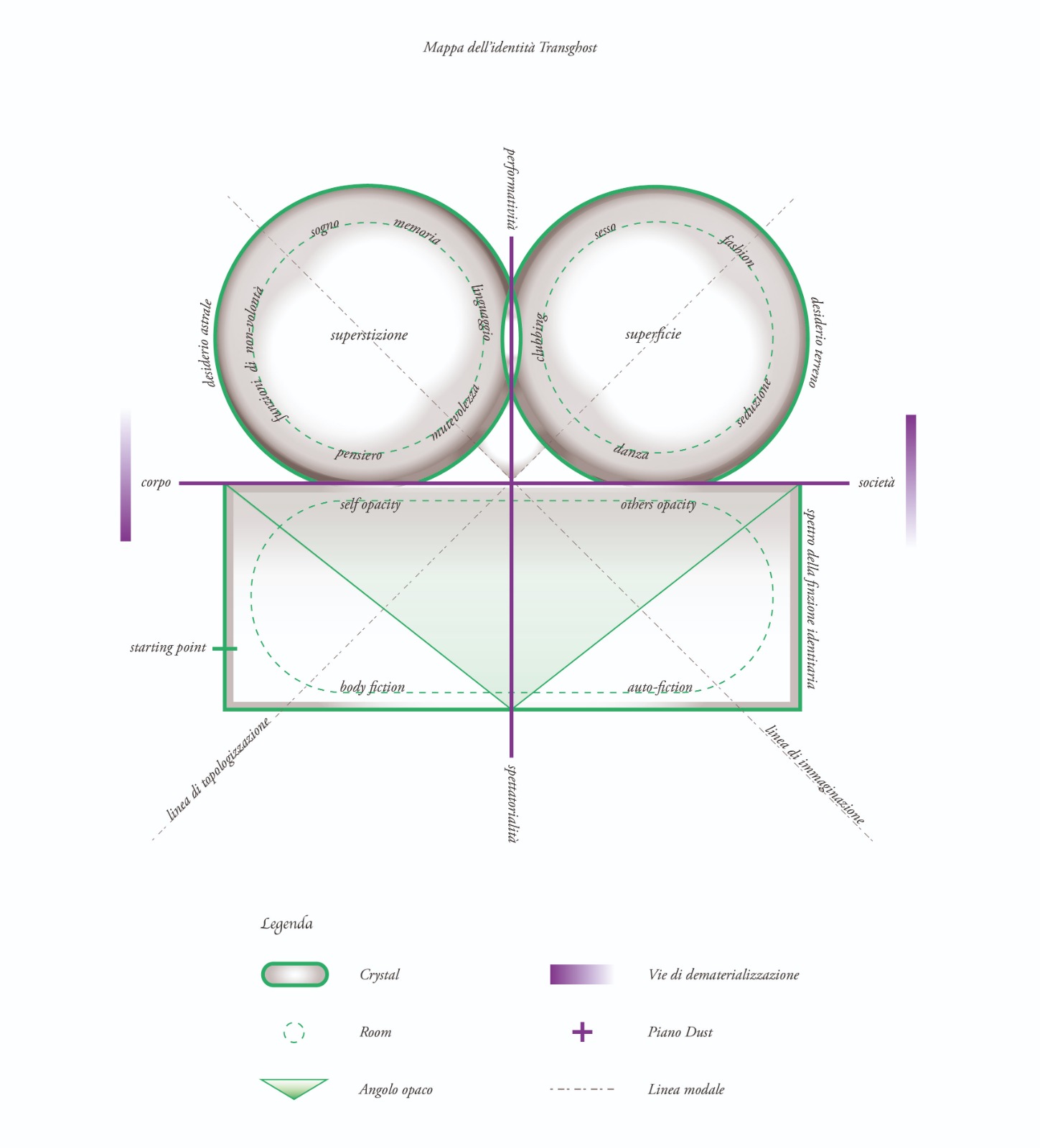 Concept by ©-ness
Concept by ©-nessRooy Charlie Lana and Giulia Zulian.
Graphic design: Rooy Charlie Lana
Transghost Identity Map
The Transghost Identity Map (TIM) allow us to explore the whole range of possibilities that the subject has of being or not-to-be, with respect to the original biological and personal data, the gaze of society, the ability to implement fiction processes and the awareness of not being able to fully know ourselves and others.
TIM is:
- an immediate reading tool for those approaching Transghost identity for the first time;
- a mobile cartography of the various possibilities of being crossed by Transghost identity;
- a path of research of our own Transghost identity;
- an important support to deepen further Transghost knowledge;
- an organised method to raise our Transghost awareness.
TIM is a device that produces matter, practices and knowledge, organised according to precise methodological schemes.
There is no predetermined order of reading or interpreting the map. Each Transghost can investigate it according to their own will, and reflect themselves in the different areas according to their degree of awareness.
Each Transghost can develop different affinities to the various sections of the map, which correspond to the practices and knowledge of Transghost bodies that are carried out by specific and appropriate exercises.
However, to facilitate the reading and understanding of TIM, there is a starting point that coincides with a specific area of the map: body fiction. The starting point serves to make the reader understand, right away, that the body is matter shapeable and shaped based on socio-cultural patterns. Reading the Transghost Manifesto (as well as many other readings on the construction of the body and identity) reveals the very function of body fiction.
The map is divided into three macro areas called Crystals. Crystals are the ways in which the Transghost body is organized. They are the ways in which we become aware of the whole of the components that participate in the construction of the body and of Transghost identity.
The Crystals are:
- IFS: Identity Fiction’s Spectrum;
- ED: Earthly/Grounded Desire;
- AD: Astral Desire.
IFS is the way in which the subject develops and produces thought about their own body and identity. Through it the subject begins to activate mechanisms of fiction and liberation. ED is the way in which the subject detects the importance of the surface. Through it the subject activates practices and knowledge in the relationship he establishes with other bodies. AD is the way through which the subject notes the importance of superstition. In it the subject activates practices and knowledge in the relationship with the intangible functions of the body.
The Opaque corner is a portion of IFS that contains the terms of opacity, or the inability to fully know ourselves and others.
The Rooms correspond to the ways in which Transghost is perceived, thought and acted in specific contexts. The Rooms are the components that articulate the body and Transghost identity. They correspond to particular places or conditions in which Transghost acts.
The Dust Plane is a positioning grid consisting of two bi-values lines, namely the vertical performativity/spectatorship axis and the horizontal body/society axis. These lines divide the map into the four semantic areas that participate in the construction of each identity.
The Ways of dematerialization affect the horizontal axis. The left way produces an intangibility of the body matter that proceeds from the IFS, specifically from body fiction to the AD. The right way produces a dematerialization of society that proceeds from ED to IFS in self-fiction. It is therefore evident that body and society are not always tangible entities, and their materialization also corresponds to a symbolic function that goes beyond reality.
The Modal Lines describe the phantasmic qualities of Transghost. The topologization line identifies in the body the modalities in which Transghost manifests itself esoterically, and proceeds from body fiction in IFSI up to ED. The imagination line identifies in the body the modalities in which Transghost acts exoterically, and proceeds from self-fiction in IFSI to AD. Their intersection does not produce a division of the map into significant areas, but rather constitutes a possibility of crossing and connecting opposite modalities.
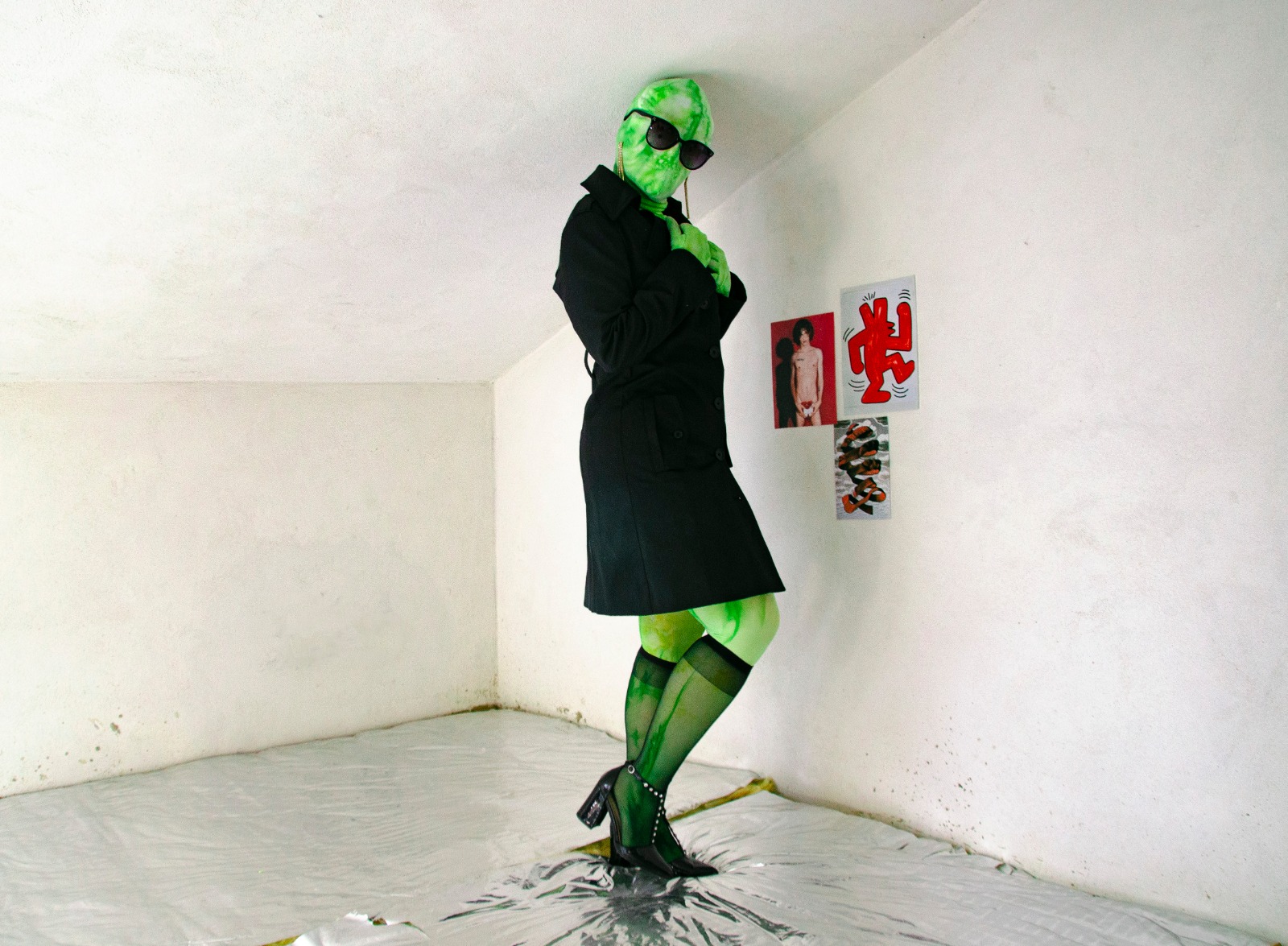 ©-ness, Bidet To Ride, starring Robita, Styling Giulia Zulian, Zentai designer Giulia Collesei and Ernesto Molin, photo by Rooy Charlie Lana.
©-ness, Bidet To Ride, starring Robita, Styling Giulia Zulian, Zentai designer Giulia Collesei and Ernesto Molin, photo by Rooy Charlie Lana.
Transghost Exercises
The exercises reported here should be understood as Transghost knowledge. The practices must be considered as knowledge of the body. The purpose of the exercises is to transmit Transghost knowledge to the bodies. The exercises should be understood as body experimentation practices that broaden awareness of various areas in which Transghost identity performs. These exercises do not contribute to the idea of a better performance of Transghost, in fact they are not sorted by difficulty levels. The exercises, therefore, are not intended as a tool for body workout. It is not in the daily execution of exercises that Transghost identity is strengthened, as Transghost is not related to the concept of strengthening"...Transghost is not related to the concept of strengthening".
Each exercise is measured by the body’s ability to accommodate the superficial changes that can be implemented through Transghost. These exercises are not determined by their execution time, but live in the ability to be subsequently rediscovered in everyday life. They serve to better understand Transghost’s identity, but they do not intend to bind Transghost to the limits of execution practices alone.
Each exercise is associated with a specific TIM Crystal-Room, and explores the practical way in which Transghost identity acts specifically in the TIM area. The exercises are esoteric and / or exoteric Transghost practices; they can be carried out alone or collectively. Often the exercises involve the use of particular tools, and take place in certain places, chosen as the ideal area for the person carrying out the practice.
Here are three exercises. They belong to the three TIM’s Crystals.
Exercise’s name: Mirror reflection
TIM: Crystal IFS, Self-opacity Room
Type of practice: exoteric, solitary
Transghost Number: 1
Material: a mirror
Place: home bathroom
Exercise’s purpose: to blur our perception and disavow the personal name
Exercise’s description
Choose a time of day when you are alone in the house so you don’t have distractions or interference. Go into the bathroom and lock the door. Stand in front of the mirror. Observe your reflection. Make sure that your face is clearly visible and there are no objects behind you that interfere with your image in the mirror. Breathe in and out slowly.
Take every part of your face into analysis. Start by scrutinizing the boundaries of your reflected figure. See if your skin is dry or oily. Note any irregularities in the skin, if there are dark circles. Then move your gaze to the eyebrows, nose, lips and finally the eyes. When you are satisfied with the analysis of your face and you recognize yourself for each part that composes it, fix a point of your reflected image and focus only on it. Try not to blink, even if this will cause your eyes a little sting. As in a mantra, start repeating your name aloud. Keep repeating the name until you are no longer able to spell it correctly on a phonetic level. Continue further, until you no longer recognize the meaning of your name and its belonging to your body. Keep your gaze fixed on the reflected figure, until your image is extraneous, manipulated, torn, blurred. Until the look, which returns yours, is no longer familiar to you – until you will no longer be able to see correctly.
When your sight and language are completely dissociated, close your eyes and comfortably lean your body against the wall or floor. Remember to take a deep breath before calmly reopening your eyes and returning to the daily routine of life.
Exercise’s name: Wearing habits / Abito l’abito
TIM: Crystal ED, Fashion Room
Type of practice: esoteric or exoteric, solitary
Transghost Number: 1
Material: a bed, a pair of shoes, variable number/choice of clothes
Place: wardrobe, bedroom
Exercise’s purpose: to create an outfit according to a non-wearable criterion and make it habitable
Exercise’s description
Analyze your wardrobe and focus your attention on those items you don’t wear on a daily basis. In this exercise, remember never to wear clothes, not even for trying them out. Select from among them an outfit that does not fall into your ordinary choices. The selected outfit, in fact, must not go along with dressing logics for social occasions or special occasions. The outfit you choose is the result of your desire. In this choice, you prefer what you could no longer wear or that you would not know how to wear. Combine the items freely, without giving too much weight to a criterion of visual composition, without being limited by principles of beauty or an approximate sense of aesthetic beauty. Try to get out of your ordinary patterns and dare to build an outfit that is not usual for you. For each garment, ask yourself: what would you wear and why? How would you wear it? What would it mean to wear it?
Choose the accessories that will complete your outfit. Shoes are an essential and necessary accessory for carrying out the exercise. The other accessories could be: socks, headwear, jewelry, belts, gloves, glasses etc.
The final outfit will respond to your desires for body liberation.
Place the garments on the bed and follow this order of placement:
- Arrange the clothes on the bed as if to form a human shape. In the center of the bed, place your upper body clothing, where applicable. Place the lower part of the outfit in the underlying portion of the bed and, where applicable, drop it on the edge to the ground. For example: in the center of the bed there is the jacket, at the lower edge of which there are long trousers, whose legs are distributed on the edge of the bed until they touch the ground.
- If there is more than one layer of clothes, both at the top and at the bottom, the clothes will be positioned according to the order of dressing: the clothes to be worn first (for example underwear) will be placed on top of the pile. The clothes to be worn last (for example the coat) will be placed at the base of the pile of garments.
Once you have your clothes silhouette fixed, take off your clothes completely until you are naked. In the esoteric version of the exercise he wears zentai.
Wear all your chosen accessories now.
- Once you have accessorized your naked body – or in zentai – lay on your stomach and lie down on top of your outfit, trying to stay with the tips of your shoes and feet anchored to the ground. Remain motionless until you are able to perceive, on the entire front surface of the body, the sensation produced by the various fabrics and materials. What sensations are produced on your skin, what information do they communicate to you, what do you perceive new?
- Then try to move delicately in order not to break down the outline of the outfit. Try to inhabit your clothing superficially. They welcome you and protect you without necessarily having to wear them. Feel the strength and power they transmit to your body.
- Lie on your back over the outline of clothing. Try to feel the sensations again.
- Finally, stand upright, turning your back to the shape you inhabited. Try to project the power of the outfit around your body. Imagine that clothes wrap and dress you up.
Exercise’s name: Memory Foam
TIM: Crystal AD, Memory Room
Type of practice: esoteric or exoteric, solitary
Transghost Number: 1
Material: a happy and distant memory
Place: a lonely place surrounded by nature
Exercise’s purpose: to prolong the sensation of a memory and fix it in the body
Exercise’s description
Go to an isolated and possibly open place in nature. Find a particular place where you feel comfortable and safe. Find a comfortable position and start relaxing. Try to investigate a vivid memory from your fairly distant past. Try to remember the context in which you lived, expanding the scope of your memory without a chronological progression. Start bringing into your body all the sensations that memories arouse in you. Expand your memory and unfold it as a vivid surface on your skin. Try to remove the bad memories that usually stand out first on the long-term memory. Proceed slowly, there is no immediate or easy memory. Instead, repeat the best memories and try to find most of their details. Memories are malleable matter and are also tinged with subsequent constructions and imaginations. Do not try to abandon these reconstructions for a more authentic version, but live the memory in all its fragmentation and its fantastic evolution. Once you have found a pleasant memory, dwell on it. Analyze a precise moment and modify your body and its position in an attempt to re-implement it in the present.
Try to make the body available to variations of your memory, as if body and memory were mutually malleable. It is precisely in the position of your body that the memory takes place and is recharged with the most vivid sensations. Your body becomes the memory. The body is indeed a mnemonic matter. Indulge in that pleasant action and release the memory-body. Finish the exercise when you feel the extent of the event exhausted within your body.
TRANSLATED by Laura Callegaro
More on Magazine & Editions
Magazine , AUTOCOSCIENZA – Parte II
Sei paranoicə? Questo scritto, purtroppo, è per te!
Due o tre cose da imparare, a proprie spese, sulla transizione.
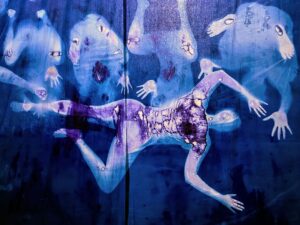
Magazine , PLANARIA - Part II
Divenire Viscerali
Cannibalismo: “Bones and All”, divenire giaguari e il corpo lesbico.

Editions
Estrogeni Open Source
Dalle biomolecole alla biopolitica… Il biopotere istituzionalizzato degli ormoni!
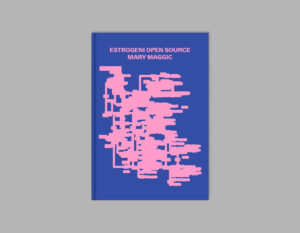
Editions
Embody. L’ineffabilità dell’esperienza incarnata
Il concetto di coscienza incarna per parlare di alterità e rivendicazione identitaria
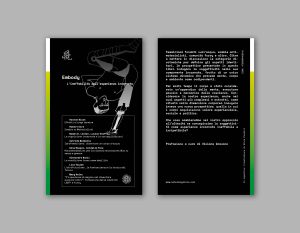
More on Digital Library & Projects
Digital Library
Come queerizzare le cose attraverso le immagini?
Sulla mancanza di fantasia nella performatività e sull’immaginatività del desiderio.
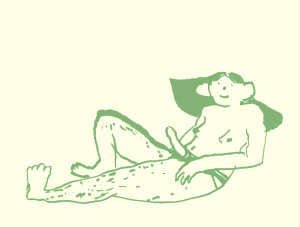
Digital Library
Virilità omolatente e cultura hip hop
Rappresentazioni della maschilità nel mondo hip hop e gestione delle relazioni omosociali in USA.

Projects
Riprogettare il maschio: la sfida ecoqueer al Maschiocene
KABUL presenta una tavola rotonda per indagare i rapporti tra l’attuale crisi ambientale e i sistemi di oppressione dell’Antropocene ed elaborare nuove narrazioni della maschilità.

Projects
KABUL ft. Fruit Exhibition e Inside Porn
Un incontro online sulla rappresentazione dei corpi nell'editoria.

Iscriviti alla Newsletter
"Information is power. But like all power, there are those who want to keep it for themselves. But sharing isn’t immoral – it’s a moral imperative” (Aaron Swartz)
-
-ness è un collettivo artistico fondato a Venezia nel 2019. La sua ricerca prende avvio dalle arti performative per sviluppare una riflessione teorica e pratica dentro gli studi queer, con una specifica analisi dell’identità Transghost. La performance OH MY GHOST! è supportata da Centrale Fies – Art Work Space. ness.performanceart@gmail.com
Chicago referencing:
https://www.scribbr.com/chicago-style/footnotes/
https://www.scribbr.com/chicago-style/bibliography/
Butler J., Performative acts and gender constitution: An Essay in Phenomenology and Feminist Theory, «Theatre Journal», vol. 40, No. 4, pp. 519-531, The Johns Hopkins University Press, 1988.
Butler J., Questione di genere. Il femminismo e la sovversione dell’identità, Laterza, Bari, 2017.
Deleuze G., Cosa può un corpo? Lezioni su Spinoza, trad. it. e prefazione di Aldo Pardi, Ombre Corte, Verona, 2007.
Deleuze G, Guattari F., Che cos’è la filosofia?, a cura di C. Arcuri, trad. it. di A. de Lorenzis, Einaudi, Torino, 1996.
De Lauretis T., Queer Theory, Lesbian and Gay Sexualities: An Introduction, «A Journal of Feminist Cultural Studies», vol. 3, no. 2, 1991.
Fischer-Lichte E., Estetica del performativo, Carocci, Roma, 2013.
Foucault M., Theatrum Philosophicum, «Critique», 282, novembre 1970, pp. 885-908; in Dits et Ecrits, Paris, 1994, II, n. 80, pp. 75-99.
Foucault M., Storia della sessualità 1: La volontà di sapere, Feltrinelli, Milano, 1988.
Foucault M., Storia della sessualità 2: L’uso dei piaceri, ES, Milano, 2004.
Glissant E., Poetica della relazione, Quodlibet, Macerata, 2007.
Koyama E., The Transfeminist Manifesto, in Catching a Wave: Reclaiming Feminism for the Twenty First Century, ed. By Rory Dicker and Alison Piepmeier, Northeastern, University Press, Boston, 2003.
Munoz Esteban J., Disidentifications: Queers of Color and the Performance of Politics, University of Minnesota, 2008.
Preciado B., Manifesto contra-sessuale, Il dito e la luna, Milano, 2006.
Preciado Paul B., Un appartamento su Urano. Cronache del transito, Fandango, Roma, 2020.
Sedgwick (Kosofsky) E., Touching Feeling: Affect, Pedagogy, Performativity, Duke University Press, Durham-London, 2003.
Sedgwick (Kosofsky) E., Queer e ora!, in E. A. G. Arfini e C. Lo Iacono (a cura di), Canone inverso. Antologia di teoria queer, ETS, Pisa, 2012.
Wittig M., On the Social Contract (1987), in Bad., The Straight Mind and Other Essay, Beacon Press, Boston, 1992.
KABUL è una rivista di arti e culture contemporanee (KABUL magazine), una casa editrice indipendente (KABUL editions), un archivio digitale gratuito di traduzioni (KABUL digital library), un’associazione culturale no profit (KABUL projects). KABUL opera dal 2016 per la promozione della cultura contemporanea in Italia. Insieme a critici, docenti universitari e operatori del settore, si occupa di divulgare argomenti e ricerche centrali nell’attuale dibattito artistico e culturale internazionale.

